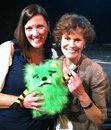Michelle Nelson-Schmidt's Blog, page 44
October 9, 2024
Uncover the Secrets of Eerie Folklore Across the US
Imagine walking alone on a dimly lit street, the chill in the air raising goosebumps on your arms, as the distant hoot of an owl breaks the silence. This moment transports you to the heart of American eerie folklore, where shadows dance and stories whisper through the wind. You’re not just an observer; you’re a part of a rich tapestry woven from centuries of spooky legends, each tale echoing the fears and dreams of how we’ve grappled with the unknown.
These tales—like the phantom of Huggin’ Molly, who watches over children in Alabama, or the Gurdon Light in Arkansas, forever searching for its lost glow—have a way of grabbing hold of us, pulling us into a world where the supernatural mingles with reality. As we delve into these ghostly folklore themes, you will find that every corner of the United States holds its own haunted stories, each resonating deeply with the culture and history of the people who cherish them. Get ready to embark on a captivating journey through America’s hidden corners, where fear fuses with fascination, and ancient legends come to life.
Key TakeawaysEerie folklore reflects a rich tradition of storytelling that crosses cultural boundaries.Spooky legends often arise from real events or locations, enhancing their eerie allure.Ghostly folklore serves as a reflection of societal fears and cultural identity.The haunting tales from various states provide insight into local customs and history.Urban legends feature common themes of tragedy and mystery, making them universally relatable.The Allure of Eerie FolkloreEerie folklore possesses a unique ability to merge the extraordinary with the mundane, captivating your imagination and enticing you to explore the unknown. These supernatural tales often stir feelings of thrill and intrigue, drawing you into a world where reality blurs with myth. The emotional resonance of these stories contributes to their allure, as they frequently serve as cautionary tales or reflections of societal values.
Gathering around to share spooky legends creates a sense of community, allowing you to bond over shared fears and enthralling experiences. This tradition underscores the importance of storytelling across generations, fostering a connection with history and local culture. Eerie folklore can also reflect societal norms and expectations, offering insights into human behavior and moral lessons.
What truly makes these stories resonate is their versatility; they can adapt to evolving cultural landscapes while illuminating underlying truths about humanity. The themes captured within eerie folklore speak to universal experiences of fear and vulnerability, allowing them to remain relevant in an ever-changing world.
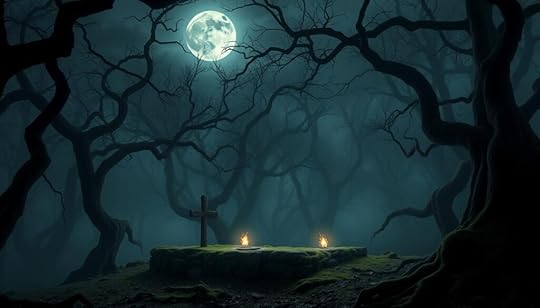
Spooky legends often arise from a rich tapestry of historical origins and cultural narratives. These tales encapsulate societal fears and reflect human experiences, intertwining the past with the supernatural. Within the United States, eerie folklore flourishes in different regions, showcasing how history influences the stories people tell.
For example, sightings of famous spirits like Abraham Lincoln near the old Springfield capitol manifest how historical context shapes spooky legends. Such stories not only honor the past but also create connections between communities and the events that defined them. Ghosts like Benjamin Franklin’s apparition near the American Philosophical Society library evoke memories of innovation and American enlightenment.
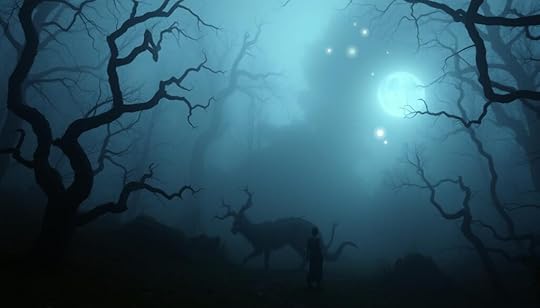
The enduring presence of figures such as Anne Boleyn, whose ghost is said to roam the Tower of London, exemplifies how historical events can transcend time and foster a narrative rich in mystery. Urban legends, such as the chilling tale of Resurrection Mary in Chicago, continue to thrive as they evolve with modern life, often acting as cautionary symbols. These narratives tap into significant social beliefs and cultural values.
In cities like Oakland, the haunting stories of locations like Mills College and the Paramount Theatre reveal how eerie folklore sustains community ties. Engaging with these spooky legends encourages reflection on shared histories while attracting those fascinated by the mystical. The ghostly encounters serve as lively anecdotes that not only entertain but also promote the preservation of local heritage.
Urban Legends: Haunting Stories from Coast to CoastUrban legends scar the fabric of communities, weaving vibrant tales that reflect the fears and values of society. These haunted stories often carry a depth that goes beyond mere entertainment, raising questions about morality, truth, and the unknown. As you delve into these chilling myths, you’ll uncover how stories like the Bandage Man and the Lady of Cannon Beach have gained traction over the decades.
The Role of Urban LegendsEach urban legend serves as a mirror to the anxieties of the population it emerges from. Consider the eerie accounts surrounding Lake Lanier in Georgia, where tragic incidents lead to countless haunted stories about the lake’s depths. You find similar themes across the United States, where legends shed light on local concerns. The fascinating evolution of these narratives speaks volumes about societal changes.
Some legends, such as La Chupacabra, have origins rooted in folklore yet capture modern imaginations. The creature famously stalks livestock in reports from Puerto Rico, its tales reverberating throughout Latin America. This blend of the supernatural and cultural commentary underlines the impact urban legends have on the community psyche.
The following table compares some noteworthy urban legends across the nation:
LegendLocationYear OriginatedKey FeatureBandage ManOregon1950sLegend targets teens in carsHannah CrannaConnecticutUnknownWicked witch believed to cast spellsMr. Chew GhostDelaware1741Haunts courthouse and nearby treeLake LanierGeorgia1994 – presentHigh number of drowningsWater BabiesIdahoUnknownNative American legend of spirit beings
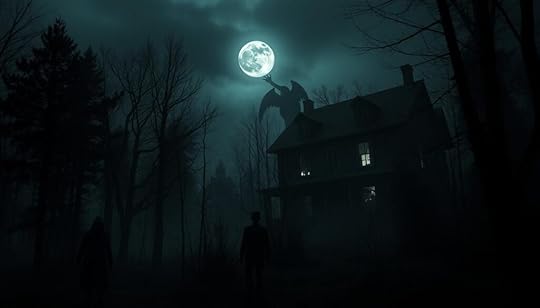
Urban legends provide a captivating glimpse into human fears, seamlessly blending fact and fiction. Each tale you encounter has been shaped by the experiences and beliefs of those who tell them, proving that even in contemporary life, these gripping haunted stories resonate with lasting significance.
Ghostly Folklore in the American SouthThe American South teems with ghostly folklore, rich narratives that reflect its deep historical roots and cultural complexities. From the eerie whispers of haunted plantations to the troubled spirits of former slaves, these haunted stories often address themes of loss and trauma, creating a tapestry of dark legends that resonate through time.
Charleston, South Carolina, stands proudly as one of the most haunted cities in the region. One fascinating tale involves Poogan’s Porch, a restaurant that’s been serving guests since 1976 and is known for its resident ghost, which many diners claim to encounter. The story of Bubba the Ghost arises from an accident involving a millworker, intertwining history with the supernatural at the South Carolina State Museum, in operation since 1988.
The ghostly landscape isn’t limited to South Carolina. North Carolina boasts its own share of paranormal intrigue, such as the Brown Mountain Lights. Observed for over two centuries, these mysterious lights captivate onlookers, particularly between September and November. Adding to this are tales of the Moon-Eyed People, a group from Cherokee folklore described as unique beings, believed to have thrived since around 1170 CE.
Equally intriguing are the infamous legends emanating from Tennessee, particularly the Bell Witch haunting. This phenomenon, which attracted figures like General Andrew Jackson, spanned from the early 19th century until the late 1820s. It exemplifies the power of dark legends to weave together personal experiences, community history, and cultural identity.
Every tale, whether brimming with dread or sprinkled with humor, serves a vital role in shaping local culture. These haunted stories provide entertainment, offer explanations for the unexplainable, and reflect the social issues embedded within communities. The significance and allure of ghostly folklore in the American South lie not merely in its chilling narratives but also in its rich connection to heritage and identity.
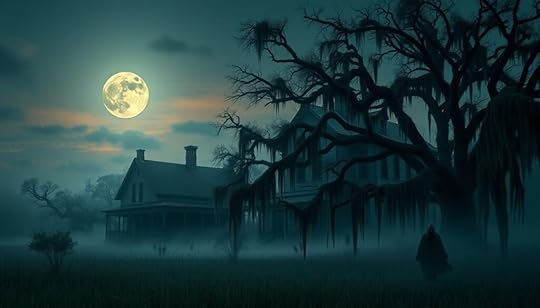
The Northeast is a treasure trove of mysterious myths that weave together history and hauntings, creating a tapestry of eerie folklore. From Maine to Massachusetts, each town holds stories that captivate the imagination. You might hear tales of the legend of Dudleytown in Connecticut, a town that prospered in the mid-18th century before being enveloped by misfortune. Locals often share various spooky legends, recalling how residents began to leave due to the community’s alleged curses. That sense of tragedy and loss resonates profoundly within these narratives.
Maine boasts a rich array of 25 haunting and paranormal books that dive deep into its mysterious myths. These stories often include haunted lakes where a woman’s spirit is said to appear, her wet hair glistening as she sings “Kumbaya.” Community storytelling is vital to discovering these eerie folklore anecdotes, as locals serve as the primary sources for these tales.
The Connecticut River, the largest river in New England, has its share of quaint yet harrowing stories of mysterious creatures spotted along its vast expanse. Reports tracing back to the early 1800s describe sightings of a serpent-like creature, snaking along the river, described to be over a hundred feet long. These spooky legends persist, drawing thrill-seekers and locals alike into exploring the regions along the river.
A visit to Vermont will uncover the chilling tales of Lake Memphremagog, said to house a mysterious monster. The Abenaki tribe warned settlers about this predatory creature, further adding to the air of mystery surrounding the lake. Meanwhile, Rhode Island showcases tales of dark forces and devilish specters, like the Glocester Ghoul, which haunt the wooded areas, stirring up unease in those who wander too far from the light.
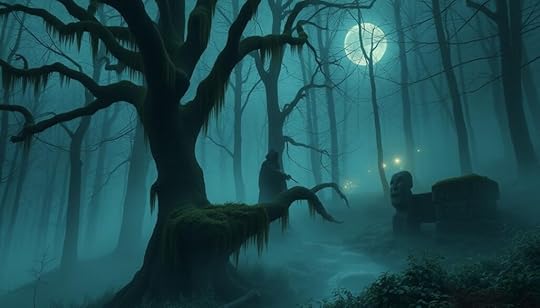
The eerie folklore of the Northeast is best uncovered through physical exploration. You may find that the paths lead to tales that are often just waiting to be shared, enriching each community’s cultural heritage of storytelling and myth-building. The adventurous spirit within you will be rewarded as you delve into these mysterious myths, discovering the unique stories that truly shape the Northeast.
The Eerie Folklore of the MidwestThe Midwest showcases a rich tapestry of eerie folklore, making it a hub for chilling myths and urban legends. Within this region, a significant 63% of reported encounters involve ghostly figures, illustrating a potent connection to the supernatural. Notable sites such as the Ohio State Penitentiary and the Pfister Hotel serve as focal points for these narratives, blending history with legend.
During the fall, folklore incidents rise dramatically, with occurrences 37% higher than in other regions. This seasonal spike draws communities together, as spooky tales come to life around bonfires and in local storytelling events. Many of these eerie stories revolve around mysterious disappearances, with 45% of the collective tales featuring individuals simply fading from existence. Local folklore experts have noted a thrilling 22% increase in ghost sightings over the past decade, further fueling the region’s intrigue.
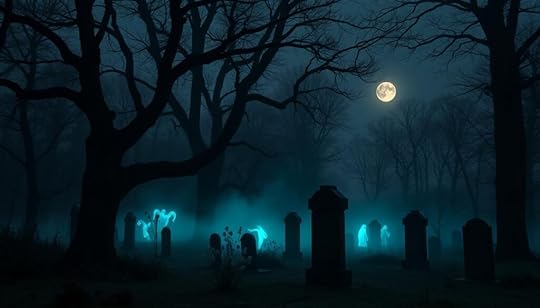
In total, 80% of these tales are passed down through generations, highlighting the importance of oral traditions in preserving this captivating folklore. Haunted houses represent 19% of all eerie stories within the Midwest, captivating both residents and visitors alike as they explore the ghostly connections tied to these historic sites.
Key StatisticsPercentageInvolvement of ghostly figures63%Increase in folklore during fall37%Mysterious disappearances45%Increase in ghost sightings over the last decade22%Haunted houses in folklore19%Stories passed down through generations80%This unique blend of history and chilling myths ensures that the eerie folklore of the Midwest remains a compelling subject for storytellers and explorers alike, captivating those who dare to delve deeper into its mysteries.
Chilling Myths from the Western FrontierThe Western Frontier is a treasure trove of chilling myths, each telling the story of a time filled with both hardship and the supernatural. These tales often reflect the experiences of settlers navigating an untamed land. Among the most notable is the Death Ship of the Platte River. This ghostly vessel, rumored to appear once every 25 years, carries a skeletal crew and presents a foreboding message to those who see it—the face of someone they know can signal their impending doom. Such chilling myths speak to the innate fear of the unknown.
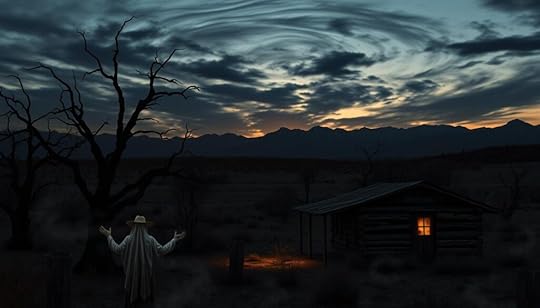
Another striking aspect of eerie folklore comes from the ghost towns of the West. Take, for instance, the town of Garnet in Montana. Established after gold was discovered in 1865, it now serves as a reminder of boom and bust, where whispers of past fortunes mingle with spooky legends. The town of Bannack, where Montana Vigilantes handed justice, adds depth to its haunting narrative, as it’s said that the ghost of the sheriff still roams the area.
The Phantom Train of Marshall Pass—sighted in the 1880s—continues to intrigue those brave enough to explore its shadowy remnants.The infamous Big Jack Davis, known as the Bandit Ghoul of Six Mile Canyon, serves as a spine-chilling reminder of the lawlessness that once pervaded the region.El Muerto, a headless horseman from Texas, highlights the tales of outlaws and their grim endings.Skinwalker Ranch in Utah adds a layer of paranormal intrigue linked to Native American folklore.The collection of these chilling myths and spooky legends illustrates how the struggles faced by early settlers have taken form through storytelling. From haunted locations like Tombstone, Arizona, which witnessed pivotal historical events, to the eerie stories of spirits at the Bullock Hotel in Deadwood, South Dakota, you can find a mixture of reality and the supernatural defining the culture of the Western Frontier.
Dark Legends of Native American FolkloreNative American folklore is rich with dark legends, each offering a glimpse into the mystical and the otherworldly. Supernatural tales often impart significant cultural lessons wrapped in chilling narratives. Among the many stories, you will encounter the eerie presence of Mishipeshu, a formidable being resembling a Water Panther. This creature holds great sway among the Algonquin-speaking tribes surrounding the Great Lakes, symbolizing power over the water and secrecy.
The Windigo represents another dark legend prevalent in the stories of the Cree and Ojibwe communities. This terrifying man-eating ice creature serves as a cautionary tale about greed and consumption, warning of the thin line between humanity and monstrosity. Its haunting nature has left a lasting impact, evident in various pop culture adaptations, making it a contemporary reference point for the supernatural.
The Dark Watchers, also known as “los Vigilantes Oscuros,” haunt the Santa Lucia mountains of California. These shadowy figures, often described as tall and cloaked, are accompanied by an unsettling feeling of being watched, captivating those who venture into the hills. Their sightings date back to the 1700s, establishing a legacy of fear and curiosity.
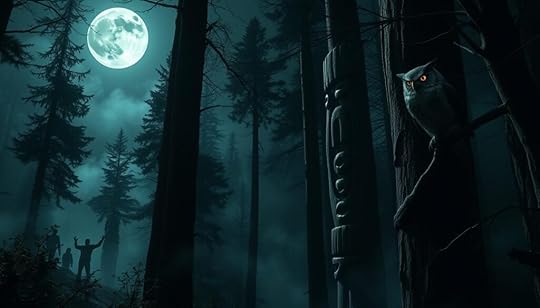
These dark legends thread through the fabric of Native American folklore, connecting spiritual beliefs to natural phenomena. Such stories not only entertain but also preserve vital cultural teachings, reminding you of the profound respect for nature and its mysteries ingrained in these traditions.
Beware the Night Marchers: Hawaiian FolkloreHawaiian folklore is steeped in supernatural tales, particularly the haunting legend of the Night Marchers. These spirits, thought to be the restless souls of ancient tribal warriors, are said to march in large groups to honor their ancestors. Accounts of eerie encounters are common among Hawaii residents, with many either experiencing these chilling events themselves or knowing someone with a spine-tingling story.
Various locations in Hawaii have documented sightings of these spectral warriors. For instance, the Kamehameha Schools campus in Kapalama, which has stood for over a century, is rumored to have welcomed Night Marchers on numerous occasions. Likewise, Kualoa Ranch on Oahu’s windward coast has become infamous for reports of Night Marchers around the remains of numerous Hawaiian chiefs, with some locals attributing nighttime car accidents to their presence.
The historical context behind these eerie legends is profound. Night Marchers are believed to emerge during specific nights tied to ancient Hawaiian celebrations. Notably, during Po Kane, warriors, chiefs, and attendants are said to march, while on Po Akua, the spirits of chiefs march between sunset and sunrise. Such tales weave a rich tapestry of tradition that speaks of respect for lineage and the supernatural.
While these encounters can be daunting, understanding the respect surrounding the Night Marchers is crucial. Some precautions exist within the folklore. For example, many believe that planting living ti shrubs can help ward off these spirits, contributing to the preservation of peace in areas they may traverse.
LocationLegendSignificanceKamehameha SchoolsNight Marchers frequenting the campusHistorical ties to ancient warriorsKualoa RanchSpotted near ancient chiefs’ remainsReports of nighttime disturbances and accidentsLa’ieSpirits of soldiers searching for escapeesCity of refuge in ancient Hawaii
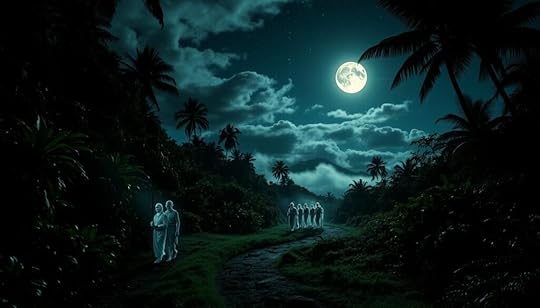
Many witnesses describe chilling auditory experiences while encountering these spirits, including chanting and the sound of drums. The presence of barriers does not deter the Night Marchers, as violations against them could result in dire consequences for those who dare to look upon them. The spiritual connection forged through this folklore underscores its lasting impact on Hawaii’s cultural landscape.
Terrifying Tales from the Appalachian MountainsThe Appalachian Mountains, spanning from Alabama to Pennsylvania, are steeped in a rich tradition of terrifying tales that reflect the unique struggles of mountain life. These stories convey deep emotions, fears, and hopes, often intertwining with the fabric of Appalachian folklore. The legends featuring ghostly figures, mythical creatures, and accounts from historical communities enrich the narrative of this rugged terrain.
One of the most haunting tales is that of the Bone Lady, a mysterious figure shrouded in legend. She is said to be connected to high child mortality rates in a northern Appalachian town, evoking fear and sorrow. Stories like this reveal not only the cultural heritage but also the challenges that many faced throughout history.
Among the many spooky legends, the Witch of Booger Hole, involving a character known as Grandma Thorne, captures attention for its eerie quality. The tales of witches and curses circulate within small communities, fostering a sense of shared local identity while thrilling listeners with spine-chilling details.
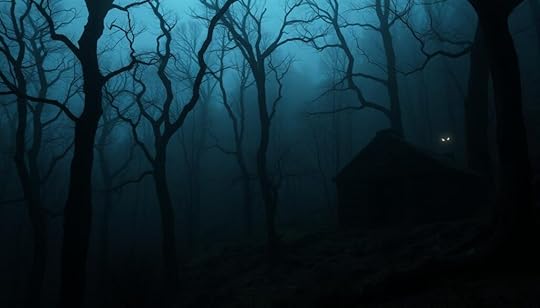
West Virginia, in particular, is home to hundreds of bizarre ghost tales. Attractions like the Barbour County Historical Museum in Philippi display mummies and house stories of the region’s past, with contact for visitors at 304-457-4846. Those seeking more shadows and legends can explore the Weston State Hospital, famously known as the Trans-Allegheny Lunatic Asylum, which conducts haunted tours until November 6th. For reservations or inquiries, call 304-269-5070.
Local events further engage communities around these terrifying tales. Tourists and residents alike can visit the Cass Scenic Railroad for Halloween train rides or brave the Second Creek Haunted Trail in Monroe County to support those in need. For more details, contact 304-645-7450 or 304-645-2696. Each of these experiences brings the spooky legends of the Appalachian Mountains to life in thrilling ways.
LocationActivityContact NumberBarbour County Historical Museum, Philippi, WVMummy Exhibit304-457-4846Weston State Hospital, Weston, WVHaunted Tours304-269-5070Cass Scenic Railroad, WVHalloween Train RidesN/ASecond Creek Haunted Trail, Monroe County, WVCommunity Support Event304-645-7450 / 304-645-2696Whipple Company Store, Scarborough, WVHaunted History Tours304-465-0331Waveland State Historic Site, Lexington, KYParanormal Investigation Tours(859) 272-3611Pinheads Graveyard, NCHaunted Trail828-670-8228Bell Witch Cave & Farm, Adams, TNHaunted Tours615-696-3055These captivating tales not only entertain but also serve to strengthen community bonds through shared history and spooky legends. The Appalachian Mountains provide a rich tapestry of folklore, waiting to be explored by anyone willing to delve into their depths.
Famous Haunted Locations Across the USThe United States features a variety of famous haunted locations, each steeped in ghostly folklore and eerie tales. From coast to coast, these sites offer intriguing glimpses into the supernatural, drawing visitors eager to explore their haunted histories.
The Whaley House in San Diego stands out as one of the most renowned haunted locations, with its past as a gallows site and graveyard contributing to its notoriety. Guests often recount strange sounds and sightings, making it a must-visit for ghost enthusiasts.
The Stanley Hotel in Colorado is famous for its paranormal activities, which inspired Stephen King’s “The Shining.” Visitors frequently report apparitions and eerie noises that add to the hotel’s ghostly charm.
In addition to these, the Queen Mary ocean liner boasts an unsettling history, with reports of 49 deaths aboard. Many now regard it as a haunted site, drawing both fans of chilling tales and those curious about its ghostly folklore.
Below is a table showcasing some of the most famous haunted locations in the U.S., along with their notable features:
LocationNotable FeaturesReported HauntingsWhaley House, San DiegoFormer gallows siteStrange sounds, apparitionsStanley Hotel, ColoradoInspiration for “The Shining”Apparitions, eerie noisesQueen Mary, CaliforniaFamous ocean linerGhost sightings, unexplained activitiesMyrtles Plantation, LouisianaBuilt in 1796Multiple hauntings reportedHill House, Texas1880 Victorian mansionParanormal investigationsWaverly Hills Sanatorium, KentuckyFormer tuberculosis hospitalNumerous deaths, reported visionsThese famous haunted locations captivate the imagination with their ghostly folklore and eerie tales. Whether you’re a skeptic or a firm believer, visiting these sites lets you dive into the spooky history that shapes American culture.
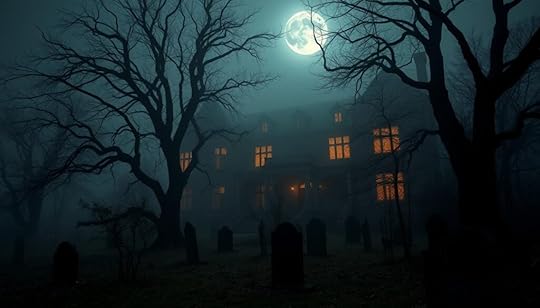
The world is filled with supernatural tales that delve into the realm of unexplained phenomena. From mysterious disappearances to encounters with cryptids, these stories have sparked curiosity and astonishment across the nation. Many residents of Taos, New Mexico, report hearing a perplexing low-frequency hum, with only about 2 percent acknowledging its presence. Such an occurrence raises questions about what lies beyond our understanding.
While belief in creatures like Bigfoot persists, the absence of a single confirmed body casts doubt on their existence. It’s fascinating to think that despite the thousands necessary for a breeding population, tangible evidence remains elusive. This reflects the intrigue of eerie folklore that thrives on mystery, often challenging our perceptions of reality.
Additionally, certain unexplained disappearances captivate our imagination, reminiscent of cases like the crew of the Marie Celeste, where no answers surfaced. While most missing persons eventually return, these anomalies continue to evoke questions about the unknown.
Eyewitness accounts of ghostly encounters abound, despite the lack of definitive proof. Sincere reports of interactions with spirits keep the flame of curiosity burning. This intertwines with the wider belief in psychic powers and ESP, even though scientific inquiries often yield negative or ambiguous results.
The placebo effect exemplifies the connection between the mind and body, demonstrating how the belief in healing can bring about real changes, reinforcing the depth of human experience. Numerous books explore these supernatural tales, offering perspectives from experts in fields like New England folklore and cryptozoology. This diversity enriches the aura of eerie folklore.
Ultimately, whether you seek entertaining stories, thrilling narratives, or serious discussions about the paranormal, the world of unexplained phenomena invites exploration and reflection.
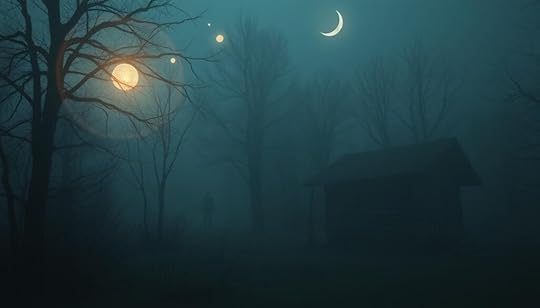
Folklore serves as a vital thread in the tapestry of American culture, preserving collective memories and identities. As you navigate through history, you’ll encounter eerie stories that not only entertain but also shape perceptions and cultural beliefs. These narratives often draw from various regions, each contributing unique elements that encapsulate local customs and societal values.
In American colleges, ghostly rumors paint a vivid picture of campus life. Dormitories and residence halls buzz with tales of spirits, while older buildings, with their aged architectures, harbor countless stories of hauntings. Libraries and theaters, often cloaked in silence during late hours, evoke a sense of mystery and are frequent subjects of chilling folklore. Basements, typically seen as mundane spaces, take on an eerie ambiance, often linked to supernatural encounters.
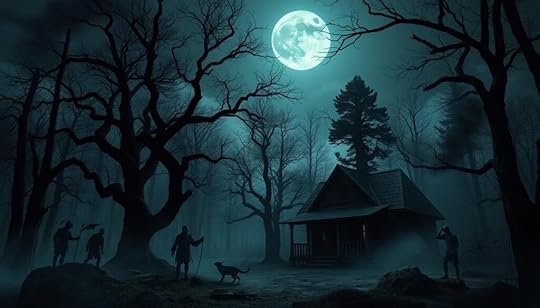
Additionally, urban legends thrive within these academic communities, blurring the lines between myth and reality. Tales of on-campus tunnels, often forbidden to explorers, are steeped in incidents of untimely deaths and historical tragedies, captivating the imaginations of students. These ghost stories interrupt daily life, presenting alternative narratives that challenge accepted histories.
The influence of Hollywood stereotypes on contemporary folklore cannot be overlooked. While these tales entertain, they also reveal the deeper layers of memory and significance unique to each location. The choice to believe or engage with these narratives impacts perceptions, allowing individuals to connect with their surroundings on a different level.
At the heart of America’s founding lies a collection of national myths and tall tales that wrap around figures like Christopher Columbus and George Washington. Each of these personalities not only represents history but also embodies folklore that has entrenched itself in cultural awareness. From the Pilgrims and the first Thanksgiving in 1621 to revolutionary figures like Betsy Ross, these narratives meld history with legend, enriching American culture.
Engagement with eerie stories, myths, and urban legends fosters community involvement and sparks curiosity. These folkloric elements are central to understanding the evolution of American culture, showcasing how stories, whether borne from fear or optimism, influence perceptions and collective identity.
ConclusionIn wrapping up our exploration of eerie folklore, it becomes clear that these cultural narratives harbor an undeniable capacity to shape human experiences across the United States. From the chilling tales of the Night Marchers in Hawaii to the haunting allure of the Bath Game in Japan, spooky legends serve as cautionary tales that enchant and educate audiences. The intricate weave of these stories reflects not only the fears and values of the communities that birthed them but also their deep-seated desires for connection and understanding.
As you engage with these extraordinary tales, you become a participant in a rich tradition that embraces the art of storytelling. This tradition invites you to consider the magic and mystery behind each legend and the societal significance they carry. By delving into the world of eerie folklore, you’re not merely reading; you’re adding your voice to the collective memory that shapes the cultural landscape of America.
Ultimately, the exploration of eerie folklore allows you to confront the shadows of the past while gaining insight into your perceptions of reality. Each story offers lessons that extend beyond mere entertainment, revealing the complexity of human emotions and experiences. As you journey through these tales, remember that you are not just an observer—you are part of a narrative that transcends time and space.
FAQWhat is eerie folklore and why is it important?Eerie folklore encompasses the rich tapestry of chilling stories that reflect cultural beliefs and local history, capturing the imagination while preserving generations of narratives that shape community identities.
How do spooky legends originate?Spooky legends often emerge from a mix of historical events, societal fears, and human experiences, evolving over time to reflect local concerns and values shaped by cultural differences and storytelling traditions.
What role do urban legends play in society?Urban legends serve to entertain, instill caution, or make social commentary, often highlighting issues relevant to communities. They blur the line between truth and fiction, allowing audiences to engage with cultural narratives.
Are there common themes in ghostly folklore across America?Yes, common themes include loss, tragedy, and the supernatural, as ghostly folklore often conveys both cautionary messages and insights into cultural heritage, reflecting societal values and historical tragedies.
How can I learn more about local eerie tales?You can explore local libraries, historical societies, and cultural events where storytelling is celebrated. Participating in ghost tours or visiting haunted locations are great ways to dive into eerie folklore.
What makes haunted locations significant in American culture?Haunted locations often serve as cultural touchpoints, their ghostly histories illuminating local legends and attracting tourism, thus enriching the community’s cultural and social fabric.
What are some examples of mysterious myths in the Northeast?Seminal tales like the legend of Dudleytown in Connecticut and the Gurdon Light in Arkansas exemplify the mysterious myths in the Northeast, often reflecting themes of loss and community history.
Why do Native American legends incorporate dark elements?Dark legends within Native American folklore often intertwine cultural beliefs with moral teachings, conveying deep lessons and perspectives on the environment and community values, while also preserving their sacred traditions.
Are there practical tips for encountering supernatural tales?When engaging with supernatural tales, it’s wise to approach them with an open mind, respect local customs, and understand the historical context to fully appreciate their significance and the community’s connection to the legends.
What impact does folklore have on American culture today?Folklore plays a vital role in shaping American culture through storytelling, influencing art, literature, and social practices, and helping communities maintain their unique identities while fostering a shared sense of history.
Uncover Secrets Behind Spooky Phenomena Today
Have you ever felt a chill run down your spine while watching the shadows dance in the dark? Or perhaps you’ve found yourself gazing at the night sky, pondering the existence of life beyond our planet. Many people experience a deep-seated curiosity about spooky phenomena that linger in the realm of supernatural occurrences. From ghost stories passed down through generations to the mysterious disappearances that baffle investigators, these mysteries of the unknown provoke a mix of fear, fascination, and intrigue. As you embark on this journey, you will discover the compelling nature of these phenomena and why they continue to captivate our imaginations. Join us as we pull back the curtain on the enigma surrounding these inexplicable events, igniting your curiosity and perhaps even unveiling some truths hidden within the shadows.
Key TakeawaysSpooky phenomena often evoke a strong emotional response, blending fear and curiosity.Many supernatural occurrences remain unexplained, sparking ongoing investigations.The allure of the unknown keeps these mysteries alive in popular culture.Eyewitness accounts continue to shape the narrative surrounding ghostly encounters.The connection between human psychology and the belief in the supernatural is profound.The Allure of Spooky PhenomenaSpooky phenomena ignite the *imagination* of countless individuals across cultures and eras. The allure of the unknown draws people to tales of ghosts, haunted buildings, and eerie events. They revel in hearing about unexplained supernatural occurrences. This fascination stems from our intrinsic desire to explore what may lie beyond our understanding.
There are various psychological factors driving this attraction. People often seek a thrill, craving excitement through stories that challenge their perceptions of reality. The comfort of shared experiences plays a role as well; discussing fears with others can be unifying and cathartic. This connection helps individuals confront and navigate their apprehensions, finding solace in knowing they are not alone in their curiosities.
Historically, supernatural beliefs have deep roots in folklore and cultural traditions. Libraries, as repositories of *knowledge* and history, hold a particular fascination. Reports suggest that these spaces often experience supernatural occurrences, with ghostly whispers, cold spots, and even moving books. Such eerie events commonly stir the imagination, leading many to attribute hauntings to the spirits of former librarians or frequent visitors still attached to the site. The quiet atmosphere of libraries may further enhance feelings of eeriness, as often these venues are perceived as tranquil yet charged with past energies.
Whether one believes in the supernatural or views it as mere entertainment, the mystery surrounding these phenomena continues to captivate. As you delve deeper into the world of the unknown, remember that the stories may be intertwined with the history and emotional energy of the spaces they inhabit, adding layers to the allure of the unknown.
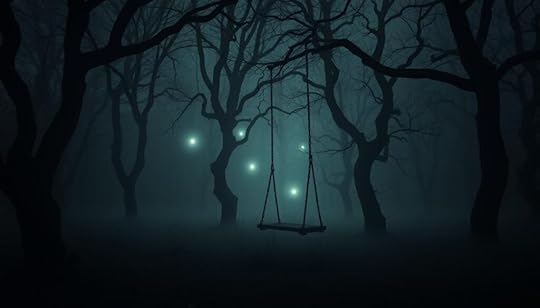
Supernatural occurrences have fascinated people for centuries, leading to a widespread belief in the paranormal across various cultures. As many as three quarters of Americans claim to believe in some form of the supernatural, with nearly one in five stating they have witnessed a ghost. This widespread acceptance stems from both cultural influences and personal interpretations of inexplicable phenomena.
The dual lens of science and folklore often creates a captivating dichotomy. While scientific reasoning tends to seek rational explanations for odd experiences, folk beliefs offer alternative views that embrace mystery and wonder. Many individuals report seeing hidden faces in everyday photos, a tendency that highlights the human brain’s inclination towards pareidolia, where one perceives recognizable patterns in random stimuli.
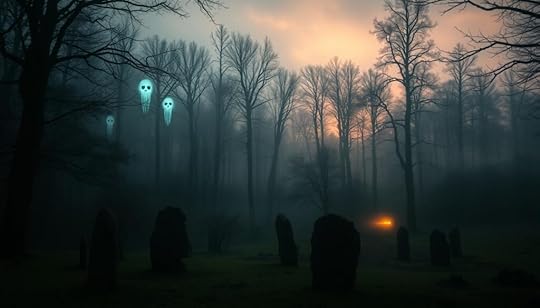
Interesting studies reveal that paranormal believers often experience weaker cognitive inhibition. This may contribute to greater confidence in decisions made with ambiguous information. Such psychological traits can amplify an individual’s belief in the paranormal as they look for patterns and connections where none may exist. Additionally, expressions of superstition, like carrying a lucky charm, often lead to improved performance in various skills, demonstrating how belief can influence actual outcomes.
Throughout history, countless accounts of ghost sightings and alien abductions have fueled fascination with the unknown. Reports of cryptid encounters, such as Sasquatch and the Loch Ness Monster, continue to spur debates on the existence of these creatures. Even though many paranormal experiences remain scientifically unexplainable, psychological insights suggest that those eager to believe are more likely to report such experiences, blurring the line between reality and myth.
Exploring Eerie Events Throughout HistoryThroughout the annals of time, eerie events have captivated the imagination of many, often rooted in historical mysteries that remain unresolved. These occurrences span continents and centuries, weaving tales of the supernatural history often difficult to comprehend. For instance, the mysterious fate of the Marie Celeste still puzzles historians and enthusiasts, serving as a prime example of the many enigmatic narratives that plague our past.
Ghost sightings contribute significantly to the intrigue surrounding these events. Historical accounts reveal that reports of ghostly apparitions have existed since ancient times. Notable sightings include that of an old man haunting a house in Athens during the first century A.D. and the first recorded poltergeist in A.D. 856 in Germany. Eerie events like the ghost of Anne Boleyn in England further demonstrate the enduring nature of these supernatural tales.
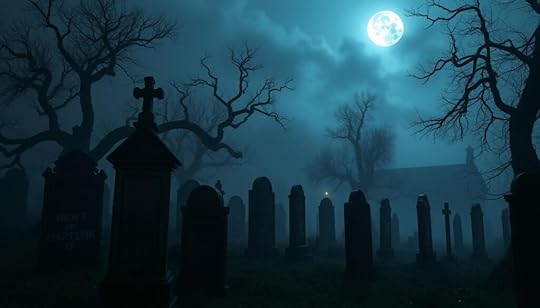
The frequency of reported ghost sightings spans countless locations, including famously haunted places like the Tower of London and the White House. Legends of spectral armies haunting battlefields, such as Gettysburg, underscore how these eerie events weave themselves into the cultural fabric of societies worldwide.
In the U.S., Route 66 has become infamous not only for its historical significance but also for a series of eerie events experienced along its stretch. Travelers have reported ghost sightings at the Oatman Hotel in Arizona and unusual happenings at the Rialto Theater in South Pasadena, contributing to the road’s haunting reputation. The interplay of strange occurrences along this historic route exemplifies supernatural history in action, as urban legends and ghost stories create a tapestry of mystery.
From the haunted streets of New Orleans to the historic district of Savannah, such eerie events continue to echo through the ages, inspiring curiosity and fear alike. The exploration of these historical mysteries invites you to ponder deeper truths and the unknown, reminding us of the stories lurking just beyond the veil of reality.
Mysterious Phenomena: Fact or Fiction?When diving into the realm of mysterious phenomena, you might wonder if these occurrences are merely figments of imagination or grounded in reality. Many stories circulate regarding phenomena like crop circles, often dismissed as hoaxes despite their fascinating allure. Believers in such urban legends argue these tales serve as gateways into understanding hidden truths. On the other hand, skeptics insist these claims are products of fabrication.
Take the Windsor Hum, a peculiar sound that has disturbed residents in Windsor, Ontario, for years. This sonic enigma raises questions about its origins and effects on the population. While some label it as a genuine mystery, others consider it a mere urban myth lacking substantial proof.
Certainly, UFO sightings have captured the imagination of many. Tales of alien encounters have persisted since the dawn of aviation, prompting debates about the existence of extraterrestrial life. Such beliefs feed the cycle of mystery and myth, creating a fascinating blend of fact or fiction.
Equally mystifying is the phenomenon of spontaneous human combustion. Descriptions of individuals seemingly igniting without reason stir curiosity and skepticism alike. Research into this bizarre occurrence continues, though answers remain elusive.
In the quest for understanding, stories surrounding pet psychics and dowsing practices also emerge. Skeptics question the validity of claims made by these practitioners, asserting a need for scientific rigor. Yet faith in their abilities persists, demonstrating the struggle between belief and skepticism.
Often, the allure of mysterious phenomena lies in their ambiguous nature. As stories evolve through generations, the line between fact and fiction blurs, inviting you to ponder why some urban legends stubbornly endure through time. Even discussions surrounding tools like Ouija boards bring forth a gamut of reactions, as they are shrouded in a history that intertwines the mystical with the rational.
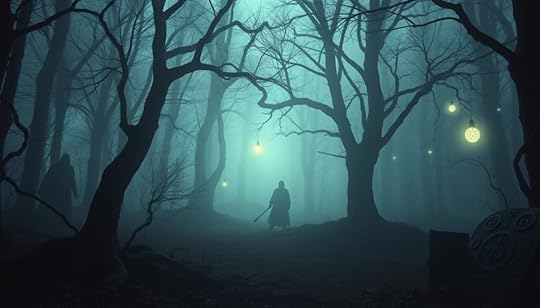
Ghostly encounters often leave an indelible mark on those who experience them. Eyewitness accounts create an intriguing tapestry of stories that reveal the depth of human belief in the supernatural. The role of cultural beliefs can strongly shape these experiences, guiding perceptions and interpretations of what constitutes a haunting. Such narratives connect the physical world to the ethereal, inviting you to delve deeper into ghostly encounters that have left their mark throughout history.
Eyewitness Accounts of Ghostly ActivityNumerous eyewitness accounts from various locations lend credibility to the phenomenon of haunted sightings. The “Monsters Among Us” podcast receives hundreds of submissions showcasing ghostly encounters from around the globe. In Estes Park, Colorado, visitors frequently report ghost sightings at The Stanley Hotel, renowned for its dark history and eerie atmosphere. Similarly, the storied Whaley House in San Diego, dubbed “America’s most haunted house,” presents a plethora of supernatural incidents. Built in 1856, this historic site is reputed to harbor spirits, with visitors often recounting stories of apparitions, mysterious scents, and other unexplained noises.
The Role of Cultural Beliefs in Ghost SightingsCultural beliefs can profoundly influence how ghostly encounters are perceived and interpreted. For instance, at the Lizzie Borden House in Fall River, Massachusetts, the blend of historical intrigue and horror attracts many thrill-seekers and history buffs alike. Local realtor and tour guide Suzanne St. John shared her experiences of laughter echoing through the halls and unexplained objects moving. In Kansas, the tales of Central High School and Kansas Wesleyan University contribute to the area’s reputation for haunted sightings, while legends of a haunted teddy bear at Ft. Riley keep the spirit of storytelling alive. Each encounter reflects a deeper cultural connection to the past, revealing how ghostly sightings serve as a bridge to history and collective memory.
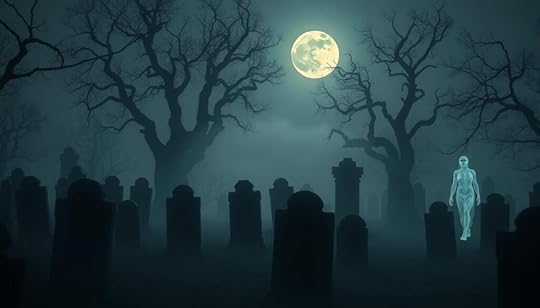
The intersection of psychology and the science of spooky phenomena reveals fascinating insights into how we interpret strange occurrences. Your mind plays a significant role in shaping your perception of these unexplained happenings. Let’s explore how psychological explanations contribute to our understanding of what many term paranormal events.
How the Mind Interprets Strange PhenomenaYour brain, in moments of fear, isolation, or darkness, may create experiences that feel real but stem from your psychological state. Research by psychologist David Smailes indicates that under such conditions, individuals are more prone to constructing their own realities. This tendency can explain why a significant portion of the population believes in haunting occurrences. For instance, a 2013 Harris Poll revealed that 42% of Americans hold a belief in ghosts.
Psychological Explanations of Spooky EventsSeveral factors contribute to the experiences labeled as spooky. Take sleep paralysis, which frequently coincides with feelings of dread and hallucinations of ghostly figures. Additionally, social influences can lead people to perceive paranormal events due to the power of suggestion. A Chapman University survey from 2018 found that 58% of respondents agreed that certain places might indeed be haunted by spirits. These psychological explanations delve into the enigmatic experiences in our lives.
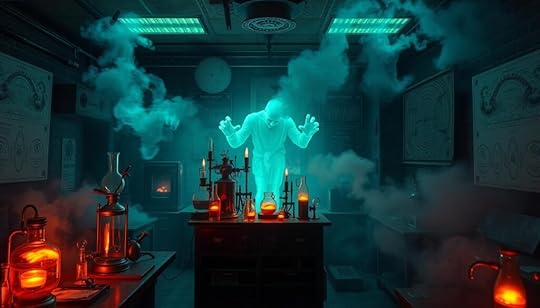
Bigfoot sightings have captivated the imaginations of enthusiasts and skeptics alike. Encounters across the United States, documented since as early as 1890, create a tapestry of experiences that challenge conventional beliefs about the natural world. Numerous publications highlight these bizarre incidents, showcasing firsthand accounts of those who claim to have crossed paths with this elusive cryptid.
Globally, Bigfoot goes by various names, with creatures like the Yeti, Yowie, and Windago embodying similar folklore. This suggests a universal intrigue surrounding mysterious beings. Literature dedicated to cryptids, such as works examining the Loch Ness Monster and Lake Champlain’s “Champ”, adds to the rich fabric of these narratives. The enduring popularity of sea serpent stories indicates that humans have long been fascinated by creatures that blur the lines between reality and myth.
The field of cryptozoology seeks to explore hidden or undiscovered species, with Sasquatch being a central figure of interest. Books from different decades reflect a growing curiosity surrounding speculative evidence for these beings, reinforcing a belief that something extraordinary may exist just beyond our reach. Some interpretations even argue that Bigfoot could embody a spiritual or extraterrestrial essence, further illustrating the diverse beliefs regarding cryptids.
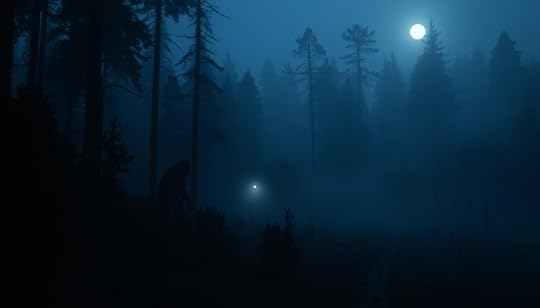
Across various publications, the interplay of folklore, ghost stories, and urban legends highlights the complexities surrounding the fascination with the supernatural. The exploration into cryptids, including Bigfoot, persists in literature, cultivating a rich dialogue surrounding the unknown. Eyewitness reports and tales of bizarre incidents serve as reminders of our collective desire to understand what lies hidden in the shadows of our world.
Intuition and its Role in Paranormal ActivityIntuition often serves as an internal compass guiding your responses to the world around you. Many individuals experience gut feelings that seem to provide insights into situations beyond ordinary perception. This phenomenon can be particularly relevant when discussing paranormal activity. Understanding how intuition intersects with these eerie encounters sheds light on the human psyche and its capabilities.
Research demonstrates that belief in paranormal phenomena varies among demographics. In a Gallup poll from 2005, 75% of Americans acknowledged at least one paranormal belief. This statistic highlights how prevalent these feelings are, suggesting that some individuals may rely on their intuition more than others when faced with unexplained experiences. The Australian Sheep-Goat Scale, developed in 2018, illustrates that belief in paranormal events can be influenced by factors such as age and education.
Experiential factors can also enhance the perception of paranormal events. A 2016 study found that the vividness of an event often impacts individuals’ attributions about coincidences. Such moments could strengthen gut feelings, leading to interpretations that align with paranormal beliefs. Many individuals report heightened awareness when they sense something unusual. This could be a form of intuitive response, acting as a trigger for feelings linked to the supernatural.
Notably, the relationship between intuitive understanding and paranormal beliefs has garnered interest. A 2020 study examined how intuition intersects with magical beliefs, offering insight into the ways beliefs can be cultivated through personal experiences. These connections draw attention to how perception can be shaped by not only scientific understanding but also individual intuition.
The complexities of intuition and its role in the realm of paranormal activity reveal much about human nature. Embracing your inner senses might not just serve to protect you in daily life; it could also provide a deeper connection to the unknown elements surrounding existence. Exploring these gut feelings opens new avenues for understanding the pronounced world of the paranormal.
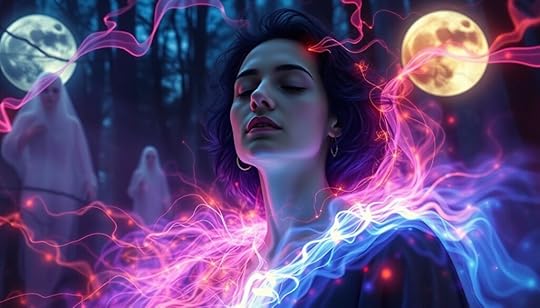
Near-death experiences (NDEs) spark fascination among those exploring life after death. Individuals often share vivid accounts that include seeing a bright light, feeling a profound sense of peace, or experiencing an out-of-body phenomenon. Research indicates that approximately 75% of subjects report experiencing out-of-body sensations during these encounters, emphasizing their significance in understanding life beyond our physical existence.

Studies by Greyson & Stevenson reveal intriguing common themes, highlighting that a significant percentage of individuals also report encounters with apparitions and perceptions of psychic experiences such as extrasensory abilities. Furthermore, research shows that these experiences often occur more frequently after NDEs, suggesting a possible link between supernatural phenomena and the existential reflections prompted by these intense events.
Among the enlightening findings, an analysis of 465 individuals reveals a notable increase in profound spiritual experiences following NDEs. Participants who previously engaged in practices like meditation or yoga reported a greater frequency of such activities after these life-changing encounters. This rising interest in the supernatural can lead to a deeper understanding of oneself and the mysteries surrounding life after death.
In contemplating these incidents, it’s essential to consider both anecdotal accounts and scientific interpretation. While some researchers argue that NDEs might arise from neurological responses during traumatic events, others believe these experiences may indicate a shift in consciousness. The interplay between personal experiences and scientific explanations continues to be a rich area for exploration, fueling the ongoing debate about life after death and what may await us beyond this realm.
AspectBefore NDEAfter NDEOut-of-body experiencesLow prevalence75% reportedExtrasensory perceptionMinimal occurrencesIncreased significantlyProfound spiritual experiencesLess frequentReported significantly higherInterest in psychic phenomenaLow engagementNotably increasedMeditative practicesInfrequentPracticed more oftenThis table encapsulates key changes in experiences related to near-death phenomena, underscoring the potential impact these events have on individuals’ perceptions of life after death. By delving deeper into these fascinating narratives, one may uncover profound insights about existence, consciousness, and the enigmatic link between life and what lies beyond.
The Impact of Superstitions on Modern LifeSuperstitions remain an intriguing aspect of contemporary culture, shaping behaviors and beliefs across a variety of contexts. The impact of superstitions can often be seen in everyday actions, as individuals seek control in an unpredictable world. Many people find reassurance in the belief in the supernatural, whether through good luck charms or rituals designed to ward off misfortune. These practices not only provide comfort but also fulfill an emotional need to navigate life’s uncertainties.
Why People Believe in the SupernaturalThe belief in the supernatural springs from a psychological foundation rooted in human nature. For example, research indicates that children as young as three years old comprehend the idea that objects can possess a special essence, something that encapsulates their history and emotional significance. This is echoed in findings that show a reluctance to wear clothing previously owned by individuals with moral or physical taints, illustrating how profoundly superstitious ideas affect choices.
Numerous studies have documented the prevalence of superstitions. Approximately 25% of adults in the U.S. identify as superstitious, with younger people exhibiting even higher tendencies. Interestingly, 70% of U.S. students rely on good luck charms to enhance their academic performance, indicating the substantial role these beliefs play in shaping self-efficacy and motivation. The impact of superstitions extends beyond individual behavior, influencing consumer choices, such as the preference for “luckier” numbers in product packaging.
The Psychological Benefits of Believing in Spooky PhenomenaA closer look at the psychological benefits reveals that engaging in superstitious behavior can lead to enhanced confidence and improved performance. The phenomenon known as *conditioning by coincidence* explains how individuals may associate successful outcomes with certain actions or objects, reinforcing their belief in these superstitious practices. Such beliefs provide comfort and security, especially during stressful events or competitions.
Moreover, the concept of contagion further highlights how the essence of an object may influence perceptions and behaviors. For instance, directions to avoid touching items linked to negative experiences emphasize the irrational yet powerful hold superstitions have on our psyche. Superstitions can intertwine with obsessive-compulsive disorder (OCD) for some, leading to rituals that may become harmful over time. Yet, in many cases, these beliefs yield little harm while offering tangible benefits, such as improved performance in sports and academics.
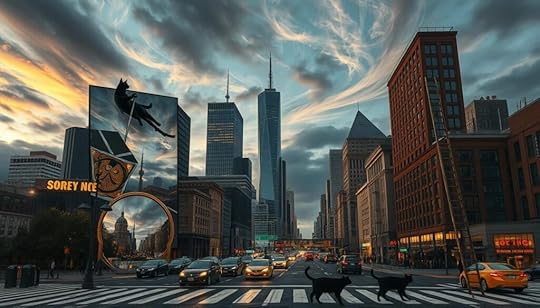
UFO sightings continue to capture the public’s imagination, showcasing a universe steeped in mystery. In 2022, more than 350 unexplained sightings were reported to the US government, a considerable increase compared to the 144 reports received over 17 years prior. This surge in sightings could correlate with unusual circumstances, such as the local lockdowns during the Covid-19 pandemic, leading many to look skyward and share their experiences.
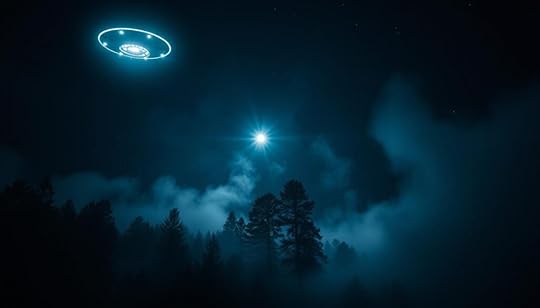
One notable case is the infamous Tic Tac incident from 2004, where a US Navy lieutenant commander observed a whitish, oblong object about 40 feet long hovering just above the water. Such incidents have spurred numerous investigations, revealing that approximately 2-5% of the 800 UAP sightings NASA has scrutinized remain unexplained. The majority of these can be attributed to familiar objects like drones or atmospheric anomalies, showcasing the challenge in distinguishing between genuine extraterrestrial phenomena and mundane explanations.
The public fascination has roots in historical events, like the 1947 Roswell incident, which not only sparked national panic but also heightened awareness of UFO sightings across the United States. Reports of strange lights and phenomena increased particularly after advancements during the space race in the late 20th century.
Researchers emphasize the need for improved data collection. Techniques employing high-quality cameras, GPS technology, and radar measurements may assist in confirming sightings and revealing their true nature. Understanding the nuances of these extraterrestrial phenomena continues to be a hot topic of debate, with media representation playing a crucial role in shaping public perception.
Podcasts like Mysterious Universe and Somewhere in the Skies have developed communities of followers, serving as platforms to discuss and analyze these occurrences further. As these sightings pique your curiosity, the exploration of their implications might just elevate the excitement surrounding the unknown.
The Influence of Media on Spooky PhenomenaThe media influence on the perception of spooky phenomena is profound and far-reaching. Various forms of media, including films, television shows, and news outlets, shape the imagination surrounding the supernatural. Notably, many individuals attribute their beliefs in paranormal events to the compelling narratives presented in these media formats.
Statistics highlight the extent of this influence. A national survey revealed that nearly 50% of respondents reported a belief in ESP, while around 30% expressed faith in haunted houses. Furthermore, over 70% of Purdue University students believed in the existence of ghosts, showcasing a significant cultural impact driven by media portrayal.
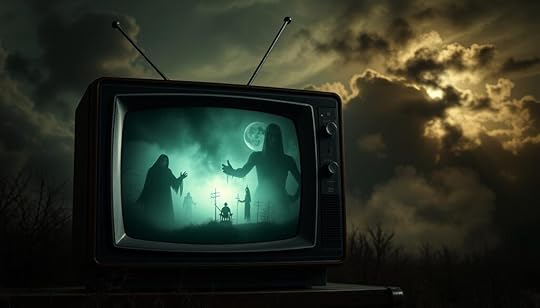
This portrayal of spooky phenomena, particularly through horror films and series, not only entertains but also fosters a sense of fear and curiosity. A noteworthy finding from a survey indicated that many respondents cited media stories as the primary reason for their beliefs in certain paranormal claims. As many as fifty newspaper editors believe that daily horoscope columns may contribute to readers accepting the accuracy of astrological predictions.
Analyzing a range of studies, it becomes evident that paranormal beliefs often persist among college students, even among those attending reputable science and engineering institutions. A consistent inquiry into these beliefs reveals that media representation plays a pivotal role. The 2000 award-winning research paper presented at the Broadcast Education Association serves as a testament to ongoing scholarly interest in how media influences perspectives on supernatural occurrences.
Belief CategoryPercentage of BelieversESP (Extra-Sensory Perception)50%Haunted Houses30%Ghosts (Purdue University Students)70%Accurate Palm Reading40%Accurate Predictions by Psychics37%Extra-Sensory Perception Occasional Use (Purdue Students)44%Astral Projection (Purdue Students)30%Belief in UFOs and Astrology (Roper Poll)25%The cultural impact of media extends beyond simple entertainment value. The intricate relationship between media portrayals and collective belief systems fosters a fascinating dialogue about the supernatural. You may notice that these representations not only help construct your understanding of the paranormal but also shape societal norms regarding what is considered believable. As this conversation continues, the role of the media in shaping our perceptions remains as potent as ever.
ConclusionAs we wrap up this exploration, it’s essential to reflect on the myriad *spooky phenomena* that permeate our culture and history. This summary of spooky phenomena encourages you to contemplate your personal beliefs and experiences with the supernatural. Throughout this journey, we have uncovered various accounts and interpretations that highlight how deeply these mysteries resonate within humanity.
In our closing thoughts, it’s vital to maintain a spirit of critical thinking and open-mindedness. Whether it’s ghostly sightings or inexplicable events, the approach we take to these phenomena can enrich our understanding of the world around us. The allure of the unknown is not just about seeking a mystery resolution, but about recognizing how these experiences shape our perceptions and cultural narratives.
Ultimately, the quest for answers remains a significant aspect of our existence. As you move forward, consider the endless questions that haunt our collective consciousness and the stories that inspire us. From the eerie to the extraordinary, the pursuit of knowledge surrounding spooky phenomena is a journey that continually invites exploration.
FAQWhat are spooky phenomena?Spooky phenomena refer to supernatural occurrences, eerie events, and unexplained happenings that intrigue and captivate people’s imaginations, often invoking themes of the paranormal and ghostly encounters.
Why are people fascinated by the supernatural?People are drawn to the supernatural due to psychological aspects such as thrill-seeking, curiosity about the unknown, and the comfort of shared experiences in facing fear. Cultural beliefs and historical significance also play a crucial role in shaping these fascinations.
How can we distinguish between fact and fiction in spooky phenomena?Distinguishing between fact and fiction in mysterious phenomena often involves critical thinking and an examination of anecdotal evidence, urban legends, and historical accounts. It’s essential to question the validity of these tales and their cultural context.
What role do eyewitness accounts play in ghostly encounters?Eyewitness accounts provide compelling insights into ghostly activity and haunted sightings. These experiences often reflect cultural beliefs that shape perceptions of what constitutes a haunting, bridging the gap between tangible evidence and the ethereal.
What scientific explanations address spooky phenomena?Scientific inquiry into spooky phenomena examines how human cognition, including memory biases and emotional states, influences perceptions of the supernatural. Psychological theories about phenomena like déjà vu and hallucinations also offer explanations for these strange happenings.
How does intuition relate to perceived paranormal activity?Intuition may serve as a form of subconscious alertness to potential danger or situations that feel “off.” It’s believed that gut feelings could be linked to psychological processes that influence how one experiences and interprets paranormal activities.
What insights do near-death experiences provide about life after death?Near-death experiences often reveal common themes, such as encountering a bright light or a sense of peace, leading to ongoing debates about life after death. These experiences are sometimes contrasted with scientific explanations related to neurological responses during traumatic events.
Why do superstitions persist in modern society?Superstitions persist due to individuals’ desire for control and understanding amid chaos. Believing in the supernatural can offer psychological benefits, such as enhanced confidence and comfort in uncertain situations, highlighting humanity’s fascination with the spooky and the irrational.
What are some notable UFO sightings and their implications?Notable UFO sightings have sparked significant interest and debate regarding extraterrestrial life. Theories surrounding these sightings often reflect cultural narratives and media influences, impacting public perception and belief in alien phenomena.
How does media shape perceptions of spooky phenomena?Media plays a pivotal role in cultivating fascination and fear around spooky phenomena through films, TV shows, and news coverage. These portrayals influence societal beliefs and public trust in both science and reported supernatural experiences.
Unveiling Legend Origins: Myths and Folklore Explored
Have you ever found yourself mesmerized by a tale that seems to blend the extraordinary with mundane reality? It’s an experience we all share—moments when stories of ancient myths and folklore narratives stir something deep within us. These narratives do not merely occupy the pages of books or the airwaves of our conversations; they inhabit our hearts, connecting us to a rich tapestry of culture, identity, and shared human experience. As you embark on this exploration of legend origins, you will find not only captivating tales but also insights into how our ancestors understood the world and themselves through the lens of mythical stories.
Every culture has its share of legends—whether it’s the ghostly whispers of haunted places, the mysterious creatures lurking in the shadows, or the profound tales of gods and heroes. They shape our perception, offering perspectives that blend truth and imagination. By delving into the world of lore exploration, you will uncover how these timeless tales have shaped human existence, fostering community bonds, conveying moral lessons, and offering comfort in the face of uncertainty.
Key TakeawaysMyths often reflect core cultural values and beliefs.Folklore narratives create a sense of community and shared identity.Many legendary creatures have origins in real-world observations.Ancient myths often carry hidden truths about human nature.Storytelling has evolved but remains a powerful tool for understanding life.Introduction to Myths and FolkloreMyths and folklore are rich threads woven into the tapestry of human culture. These narratives do more than just entertain; they illuminate shared values, fears, and aspirations, offering a window into the collective psyche of societies. The terms myth, folklore, legend, and fairy tale are often used interchangeably, leading to confusion about their distinct roles in cultural narratives.
Folklore origins trace back to oral traditions, where fictional stories about people and animals circulated from one generation to another. These folktales often impart vital lessons on coping with life’s trials and tribulations. Common themes emerge across cultures, showcasing humanity’s shared experiences and struggles.
Legends, on the other hand, assert a connection to historical figures or events, though they often lack substantial evidence. Stories like those of King Arthur and Robin Hood illustrate how legend traditions blend history with imaginative storytelling, captivating audiences with their mix of fact and fiction.
Fairy tales introduce you to fantastical elements and are traditionally aimed at younger listeners, distinguishing themselves from other forms by their moral lessons and magical contexts. In the realm of myth criticism, scholars analyze common threads and patterns within these diverse stories, revealing the underlying truths and societal norms they uphold.
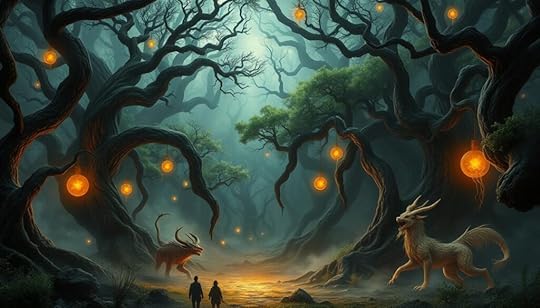
As you delve deeper into the world of myths and folklore, appreciating their significance becomes paramount. Each tale, whether a myth or a folktale, offers a cultural narrative that aids in understanding human nature and the complexities of the world around us.
CategoryDescriptionPurposeMythNarratives concerning divine characters set outside of historical timeValidate social norms and power dynamicsFolkloreFictional tales circulated orally about people and animalsTeach coping mechanisms and life lessonsLegendStories presented as historical but often unsubstantiatedBlend history with imaginative storytellingFairy TaleMagical stories aimed primarily at childrenEntertain while imparting moral lessonsFableShort stories with personified characters that convey moral messagesTeach explicit morals through simple narrativesUnderstanding the Significance of Legend OriginsThe significance of myths holds a vital role in shaping our understanding of cultural identity. These narratives offer a glimpse into the legendary beginnings of societies, igniting the imagination while conveying profound moral lessons. Legends serve as bridges to our past, allowing people to connect with their heritage through shared experiences and beliefs.
The folklore importance lies in its ability to explain natural phenomena and the nuances of human existence. Myths often emerge from experiences unique to specific cultures, thus reflecting their values, fears, and aspirations. Take, for instance, the saying “The Man, the Myth, the Legend”; this phrase emphasizes how historical figures, whether from mythology or more contemporary culture, have shaped our perceptions of greatness. It reveals how individuals can become icons, leaving lasting impressions through their actions, which transcend time.
Folklore accumulates in collective memory, merging truth with fantasy. Over generations, the tales transform, enchanting audiences with both reality and fable. Consider the enduring legends like that of Brutus, tied to the origins of Britain, showcasing how myths can provide a sense of belonging. Additionally, British folklore featuring creatures like the Loch Ness Monster and stories that originate from varied cultures, such as Cinderella or even Beowulf, illustrates the rich tapestry of humanity through narratives that unite distinct cultural identities.
As you explore the significance of myths, you begin to connect with the cultural narratives that shaped countless generations, finding meaning in the legendary beginnings and appreciating the underlying values that persist to this day.
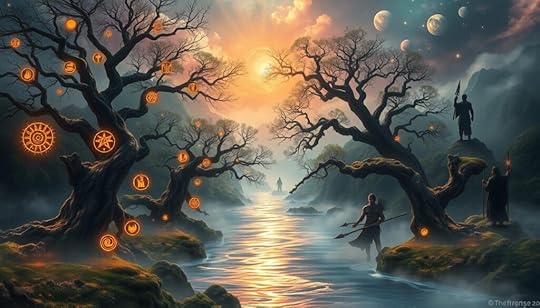
Throughout history, ancient civilizations have shared rich civilization folklore that reflects their societal values, challenges, and beliefs. These narratives have preserved themes and archetypes that resonate with the human experience. Across cultures, ancient myths encode observations of significant geological events, offering a glimpse into the collective memory of catastrophic occurrences.
For instance, tales of devastating floods appear in various cultures, suggesting a shared recollection of such events. The volcanic eruption of Santorini around 3,500 years ago likely inspired the legendary account of Atlantis. Similarly, the narrative of Pele, the Hawaiian goddess, may have originated from Kilauea’s dramatic lava flows. Such stories reveal how narrative origins intertwine with real geological phenomena.
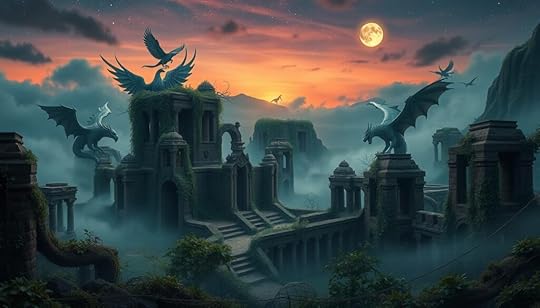
In Greek mythology, which is often regarded as a cornerstone of cultural legacy, the oral traditions from the Bronze Age were eventually captured in texts by poets like Homer and Hesiod. The mythological tales of heroes like Heracles and Pandora not only entertained but also embodied the struggles and ideals of their society. The twelve Olympian gods captured the essence of human traits, while legendary figures like Pegasus and the Cyclops showcased the imaginative realms of ancient storytelling.
These enduring stories of the past continue to shape our understanding of cultural heritage. They resonate in modern literature, cinema, and even fashion, highlighting their timeless appeal. As seen in popular works by authors such as Neil Gaiman and the adaptations of classical tales in mainstream media, the influence of ancient myths persists, revealing the continuity of human creativity and thought across the ages.
Exploring Creation Myths from Around the WorldCreation myths serve as profound symbols that offer essential insights into cultural cosmology across various societies. These origin tales illuminate how different communities understand the universe and humanity’s position within it. Each mythical origin can reflect unique values, rituals, and narratives that structure cultural identity.
For instance, the Hindu tradition presents the concept of the Cosmic Egg, or Hiraṇyagarbha, which is revered as the source of the universe. This idea resonates through multiple ancient civilizations, showcasing the interconnectedness of these creation myths.
The Vikings narrate a fascinating tale involving the primordial giant, Ymir. From his body, the Earth is formed, emphasizing themes of transformation and rebirth. His blood creates oceans, bones become mountains, capturing the essence of life emerging from chaos.
The Hopi people’s creation narrative speaks of emergence from underground to the surface, guided by their creator Maasaw. This myth includes the survival of a great flood, symbolizing resilience and renewal within the community’s cultural values.
Maya mythology presents another captivating story, where Hun-Hunahpu’s head impregnates a girl, leading to the creation of twin heroes, embodying the Sun and the Moon. This narrative symbolizes the cyclical nature of life and the beginning of new eras.
Across Native American cultures, the tale of Nanabozho portrays themes of vengeance and survival, where defeating a great serpent allows for the establishment of a new world, introducing values of strength and perseverance.
In Ancient Egypt, the Book of the Heavenly Cow narrates the consequences of Ra’s actions, resulting in human mortality and the responsibility of maintaining cosmic order. This myth illustrates themes of divine power and human agency.
In Finnish mythology, the goddess Ilmatar gives birth after contact with the sea, leading to the earth’s creation. This story highlights the importance of elemental forces in shaping existence.
Moreover, the Chinese creation myth involves a cosmic egg giving rise to the world, with Pangu’s remains playing a critical role, showcasing how mythical origins are essential in providing meaning and context to cultural practices.
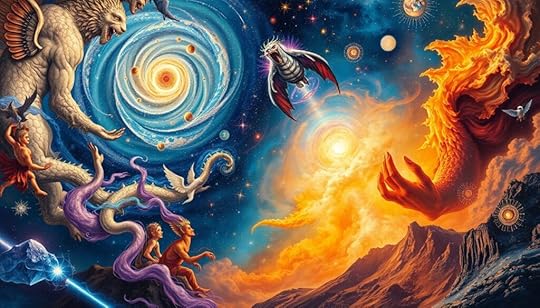
Myths significantly influence your cultural identity, linking communities through shared narratives and values. They serve as vital storytelling tools that convey myths and values, reflecting the essence of societal beliefs within a culture. These ancient tales often originate from prehistoric eras where they were passed down verbally before recording became common practice.
In various indigenous cultures, myths reveal the sacredness of the land and the interconnectedness of life. They articulate a community’s tradition and identity, showcasing what matters most to them. For instance, the significance of the Norse myths emphasizes qualities like bravery and honor, essential to the Viking way of life. This deep connection between myth and community values fosters a communal understanding of identity.
Throughout history, mythological stories have offered insights into natural events and human behaviors. The Greek myth of Icarus illustrates the consequences of hubris and ambition, providing moral lessons that resonate across generations. Through these narratives, you can grasp the societal beliefs and cultural norms that define a society’s character.
Besides connecting individuals with their heritage, myths help maintain cultural continuity, ensuring traditions, beliefs, and histories are preserved. In modern contexts, the influence of mythology extends into the realms of literature, film, and art, continuing to shape conversations about fundamental human themes. Thus, understanding your own cultural identity can often be traced through the myths that have shaped previous generations.
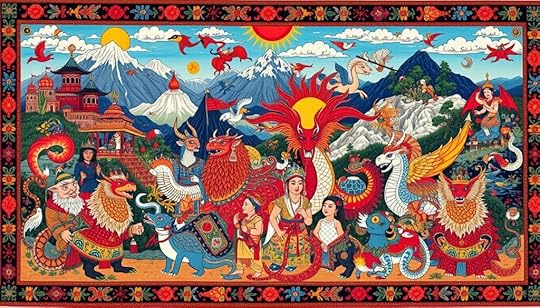
Greek mythology provides a captivating exploration into the depths of human nature, especially through the legendary figures like Zeus and Pandora. These mythical narratives delve into universal themes such as power, curiosity, and the moral consequences of human actions. The stories vibrantly reflect the complexities of human traits, showcasing strengths and weaknesses that resonate across time.
The Stories of Zeus and PandoraZeus, the chief deity of Greek mythology, embodies various human traits including authority and recklessness. His tales often revolve around themes of power and control, revealing the duality inherent in the human experience. In contrast, the story of Pandora highlights the themes of curiosity and its repercussions. Pandora, famously known for opening a forbidden box, inadvertently unleashes chaos into the world, symbolizing how human curiosity can lead to unforeseen consequences. These narratives serve as both cautionary tales and reflections on behaviors intrinsic to humanity.
Cosmic Reflections of Human TraitsThe enduring impact of Greek mythology lies in its rich portrayal of human characteristics. These ancient stories mirror experiences and emotions that we still encounter today. From the optimistic to the tragic, Greek mythology encapsulates a full spectrum of human traits. Recognizing the connection between these mythical figures and ourselves fosters a deeper understanding of our nature, emphasizing that these age-old tales remain relevant in contemporary societies.
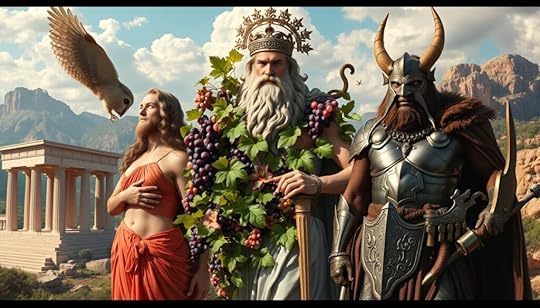
Native American myths reflect a deep reverence for nature and a belief in the interconnectedness of all beings. These cultural tales often emphasize the sacredness of the earth and the vital role it plays in human life. For many tribes, such as the Blackfeet, Crow, and Pawnee, stories about the buffalo serve as symbols of sustenance and survival, showcasing how nature legends help to bind communities through shared values and experiences.

Legends about migrations and the origins of tribes offer insights into Native American spirituality in folklore, illustrating the values and beliefs that shape these cultures. The tales frequently feature a variety of deities and spirits, emphasizing a close relationship between humans and the natural world. The concept of a Great Spirit is central, guiding many narratives and serving as a reminder of humanity’s responsibility to the earth.
Myths often portray animal characters such as Coyote and Opossum, symbolizing traits like cunning and adaptability, in narratives rich with symbolism. The stories may include elements of humor or allegory, reinforcing moral lessons that resonate with contemporary values. The diversity found within Native American mythologies is a testament to the rich tapestry of beliefs held by Indigenous peoples, each reflecting unique cultural perspectives and traditions.
TribeSignificant ThemesNotable FiguresBlackfeetBuffalo and nature connectionsStar-born heroesCrowNature legends and spiritualityCoyote, GlooskapPawneeMigratory narrativesManabus, creator figuresArapahoAnimal-human relationshipsOld Man (Waziya)CherokeeCreation mythsGreat SpiritLegend Origins and the Myths Depicting Magical CreaturesLegends about magical creatures have intrigued cultures worldwide for generations. These tales often bridge the gap between reality and fantasy, revealing deep-rooted beliefs and fears. Two prominent examples are the Bigfoot legends from North America and the significance of the Thunderbird in Native American folklore. Both myths reflect the human desire to explain the mysterious elements of nature through captivating narratives.
Bigfoot: The Elusive North American LegendBigfoot stands as a symbol of the wild and unexplored regions of North America. This legendary creature is often depicted as a large, hairy man-like being that roams remote forests. Sightings have been reported for decades, fueling an enduring interest in Bigfoot legends across the United States. Enthusiasts and researchers alike search for evidence, hoping to unveil the truth behind this elusive figure.
Thunderbird: A Symbol of Power in Native TraditionsThe Thunderbird occupies a revered space in Native American traditions, embodying the connection between the heavens and the earth. This magnificent creature, often depicted as a giant bird, symbolizes power, strength, and transformation. The Thunderbird significance extends beyond mere folklore; it represents the spiritual aspects of nature and serves as an important cultural emblem in various tribes.
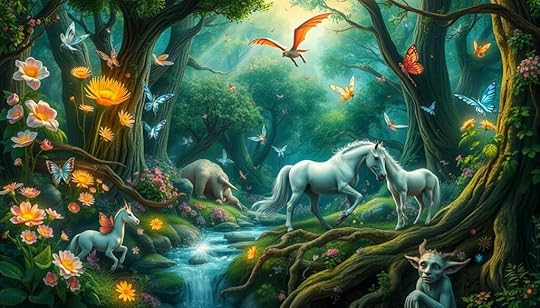
European cultures exhibit a vibrant tapestry of European folklore, deeply rooted in history and communal identity. These folk traditions often reflect significant historical events and societal dynamics, intertwining themes of fear, aspiration, and the extensive human condition.
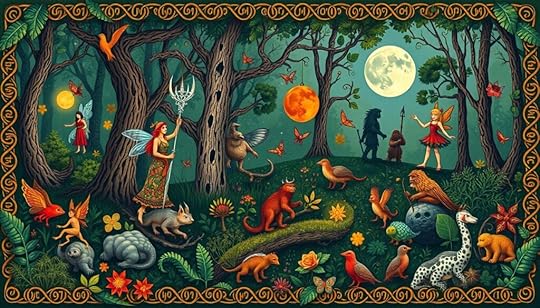
The influence of Christendom during the Early Modern period has contributed to the shared traditions found across various ethnic and regional groups. Christian mythology plays a pivotal role in many folk traditions, especially evident in customs related to Christmas and All Souls’ Day.
Common apotropaic gestures, such as knocking on wood and crossing fingers, appear in numerous Western cultures.Many elements of European folklore trace back to the Proto-Indo-European peoples from the Neolithic and Bronze Ages, enriched by Classical Antiquity and magical practices.Interactions with the Islamic world particularly shaped folklore in regions like the Balkans and the Iberian Peninsula.Since the 19th century, European folklore has experienced a significant exchange of ideas, particularly influenced by American folklore. This cross-pollination allows for a continued evolution of legendary tales that resonate today.
RegionFolklore TraditionsNorthern EuropeMyths of trolls, elves, and Norse legends.Western EuropeArthurian legends and tales of chivalry.Southern EuropeFolktales of spirits and mystical beings.Central and Eastern EuropeLegends involving Slavic mythology and fairy tales.The term “folklore,” first coined in 1846 by William Thoms, highlights the diverse academic pursuit of cultural narratives, where students can choose to study folklore at various levels. The development of this field aligned with the romantic nationalism movement, emphasizing unique cultural expressions through stories, sayings, and songs.
According to William Bascom, the four main functions of folklore include providing escape from societal pressures, validating cultural identity, serving as a teaching tool, and enforcing social norms. In the 19th century, the perception of “the folk” evolved from rural, illiterate communities to encompass urban populations, showcasing the ever-changing nature of folk traditions.
Ancient Myths of India: The Cosmic CyclesIn exploring Indian mythology, one discovers a vast landscape filled with rich folklore narratives that delve into the cyclical nature of existence. These narratives encompass themes of creation, preservation, and destruction, illustrating profound insights into the universe’s workings. Central to this understanding are the cosmic cycles, which reflect Hindu philosophies and Vedic tales guiding the flow of life and the cosmos.
A significant aspect of Hindu cosmology involves three fundamental gunas: sattva (goodness), rajas (passion), and tamas (darkness). These qualities constitute all matter and define the interaction between the spiritual and physical realms. Pradhana, the root matter, begins the cycle through a primal desire to create, emphasizing that matter lacks consciousness or will to act autonomously.
As you grasp the essence of these Vedic tales, you gain insights into how manifested elements of creation interact with living beings. Subtle elements like ahamkara (ego), buddhi (intelligence), and citta/manas (mind) form foundational aspects of human nature, while the physical elements—space, air, fire, water, and earth (pancha bhuta)—connect to our senses and sensory experiences.
Time in this framework is not linear; it unfolds in infinite cycles. Each cycle encapsulates periods of creation and destruction, with current existence being merely a chapter in an eternal saga. Hinduism, one of the world’s oldest religions, provides a glimpse into these vast cycles through its core texts, illustrating that every new creation inevitably leads to destruction and rebirth. This understanding enriches your appreciation for the deeper workings of the universe, as articulated within Indian mythology.
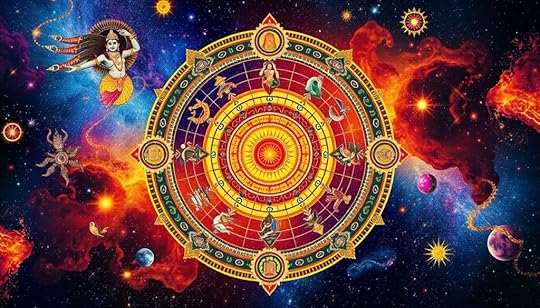
Across Asia, dragons play a significant role in folklore, symbolizing not only power but also prosperity and harmony. These magnificent creatures appear in various forms, showcasing distinct characteristics within different cultures. You might find it fascinating to explore the variations of dragon legends and their meanings, as well as the powerful Yeti stories that depict these guardians of the wilderness.
The Variations of Dragon LegendsDragons in folklore demonstrate a rich tapestry of interpretations throughout different Asian cultures. The Chinese dragon, known as “long” (龍), is a snake-like creature with four legs, primarily associated with water control and imperial power. Their symbolism is reflected in:
Emperor representation: Chinese emperors often adorned robes with dragon motifs during the Tang dynasty, symbolizing their imperial status.Prosperity: The dragon is linked to good luck and rain deities, showcasing its role in fostering harmony within nature.Cultural symbols: The Azure Dragon is a revered symbol of the Chinese emperor, used in state emblems throughout various historical dynasties.
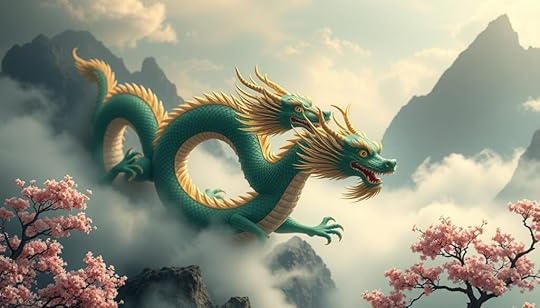
In Japanese mythology, dragons are less prominent compared to spirits and gods. They are depicted as symbols of wisdom and strength, with notable figures like Yamata no Orochi and Watatsumi often referenced. Unlike the Chinese dragon, which embodies positive attributes, Japanese dragons can exhibit both benevolent and malevolent traits depending on the tale:
Kiyohime, who transformed into a dragon out of rage, showcases the complexity of dragon narratives in Japanese folklore.Mizuchi, the water dragon from Kawashima River, represents the perilous elements associated with these creatures.Cultural Interpretations of the YetiThe Yeti, often perceived as a guardian creature in Himalayan culture, possesses a rich history filled with intriguing stories. These Yeti stories reflect humanity’s connection to the natural world, representing an enigmatic protector of the mountains. Different cultures attribute various meanings to the Yeti, including:
Cultural AspectSignificanceSymbol of MysteryThe Yeti embodies the unknown elements of nature, evoking both fear and fascination.Guardian of NatureMany view the Yeti as a protector of the mountain ecosystems, underscoring the importance of preservation.Spiritual ConnectionBeliefs often portray the Yeti as a link between humanity and the spiritual realm.These mythical tales from Asia, whether linked to dragons in folklore or the enigmatic Yeti, exemplify the diverse cultural narratives that shape our understanding of guardianship and the relationship with nature. As you delve into these stories, you uncover a world rich with symbolism and meaning, reflecting the intricate tapestry of human experience.
The Structure of Legendary Tales: Archetypes and ThemesLegendary tales possess a unique legendary structure that resonates deeply across cultures. Common archetypes in myths such as the hero’s journey and the trickster figure provide a foundation for storytelling that captivates audiences. Understanding these components sheds light on the intriguing storytelling themes that permeate narratives throughout history.
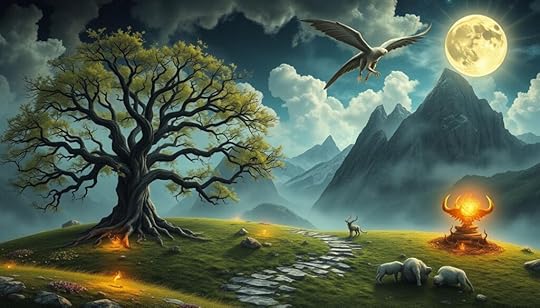
For instance, the Persian epic Shahnameh chronicles the reign of fifty kings, highlighting a detailed account of rulership transitions. Notably, only five of these kings are depicted favorably, while the remaining rulers display significant flaws. This aspect illustrates the importance of character complexity in legendary tales.
The legendary section of the Shahnameh tends to focus on more famous stories, indicating a concentration on key events and characters that leave a lasting impact. Rostam, the central figure, showcases the intricacies of heroic narratives and moral dilemmas, particularly his conflicts involving family ties.
ArchetypeExampleDescriptionHero’s JourneyRostamA character facing numerous trials that ultimately lead to growth and self-awareness.TricksterVarious charactersFigures using cunning and deception to navigate moral complexities.Father-Son ConflictSiyavosh, EsfandiyarRecurring theme representing complex relationships between generations.Flawed LeadershipKings of ShahnamehShowcases the imperfection of rulers, emphasizing their human vulnerabilities.ConflictMurder of IrajInitiates a cycle of wars, highlighting ongoing struggles between opposing forces.Such narrative analysis reveals how legendary tales encapsulate societal values, ethical dilemmas, and gender roles. As you engage with these stories, recognizing the enduring impact of these archetypes and themes enriches your understanding of human experiences reflected in myths and folklore.
Connecting Myths to Modern SocietyMyths have an undeniable impact on modern culture. You will find modern parallels in literature, film, and social movements. These ancient stories often provide frameworks that resonate with contemporary issues, allowing you to explore deep-seated themes that transcend time. For example, the Great Flood narrative appears in multiple cultures, illustrating a shared human experience.
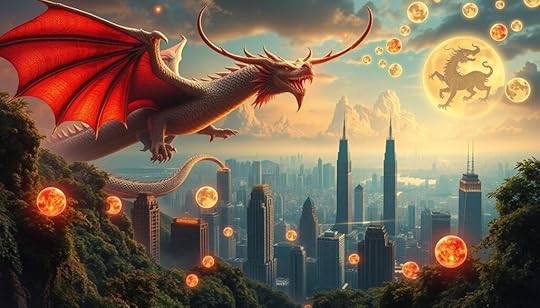
Folktales represent another facet of folklore today, offering insights into everyday life and morality. Unlike myths, which present archetypal characters and grand narratives, folktales focus on relatable experiences and coping strategies. This connection supports the relevance of legends in addressing modern questions about identity and ethics.
In contemporary entertainment, Disney movies exemplify the trend of retelling ancient narratives through a modern lens. Greek mythology, in particular, draws inspiration from ancient tales, influencing films like “Clash of the Titans” and series such as “Hercules: The Legendary Journeys.” These adaptations highlight the enduring legacy of myths in contemporary culture.
The rise of digital media has changed how legends are shared, leading to decreased popularity in traditional storytelling.Walter Benjamin emphasized the decline of storytelling as an art form, a concern that resonates in today’s fast-paced world.Community creation was essential in ancient storytelling, highlighting the importance of collective identity.Classes combining storytelling with activities like yoga are emerging, further underscoring the significance of narrative in modern life. Exploring these connections reinforces the idea that ancient myths and legends not only shape modern literature and artistry but also reflect your journey through identity and moral understanding.
Understanding these stories enhances appreciation for the deeper themes present in today’s cultural landscape, reminding you that the resonance of myth is as strong now as it was centuries ago. The study of mythology is crucial in navigating the myriad of narratives that continue to populate your world.
The Timeless Allure: Why We Continue to Share LegendsThe allure of legends captivates your imagination and resonates deeply within your soul. As stories shared across generations, these narratives shape the cultural continuity of societies, allowing individuals to connect with their roots and each other. Legends serve as bridges between ancient times and modern life, illustrating the timeless human experience.
Many legends are rooted in historical events or figures, with over 80% tracing back to reality. This deep connection infuses these tales with significance, transforming them into captivating stories. Alongside history, around 70% of legends convey moral lessons through allegorical storytelling. This shared understanding sparks interest in the underlying messages, making legends relevant and meaningful.
The stories of lost civilizations, such as Atlantis and the Trojan War, stimulate curiosity and debate, serving as captivating examples of the mysteries woven into our shared history. As you explore these enduring tales, consider how they reveal humanity’s desires, fears, and aspirations. The Arthurian legend emerged during the Middle Ages, symbolizing a quest for unity amid chaos. Similarly, the emergence of vampire folklore during plague periods reflected anxieties about disease and death.
Larger-than-life characters often embody the archetypes of heroism, present in 90% of legends globally. These transformational journeys resonate well with audiences seeking relatable narratives. Cryptids, like the Loch Ness Monster, continue to intrigue despite scientific skepticism, illustrating the persistent fascination with the unknown. Furthermore, legends have inspired more than 60% of art and literature, showcasing their profound influence on creativity.
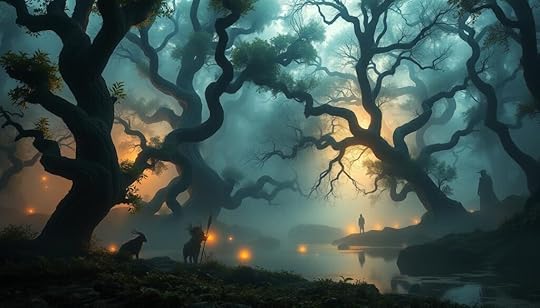
Today, modern adaptations cater to evolving audiences while honoring tradition. From book series to digital media, the representation of ancient myths remains vibrant and relevant. This adaptability showcases how legends embody universal symbols and archetypes, tapping into a collective unconscious that connects humanity.
Ultimately, the continuous sharing of legends fosters a sense of belonging and cultural identity, enriching your experience as you engage with these narratives. The interplay between myths in modern life and age-old legends reveals a pattern that transcends time, perpetuating the enchantment of storytelling in our daily lives.
The Intersection of Science and MythUnderstanding the relationship between myths vs. science reveals a fascinating exploration of cultural narratives and empirical truths. Myths often serve as mythical explanations for unexplainable phenomena, but scientific inquiry provides alternative interpretations that can coexist alongside these age-old stories.
The Section on Folklore and Science investigates this intricate relationship, sponsoring an annual Folklore & Science Prize of $750, with an additional $250 allocated for travel to the annual meeting. This initiative highlights a commitment to encouraging scholarly work that delves into cultural science and the intersections of different fields.
Bridging gaps between folklore and science, the section hosts a Climate Interest Group focusing on how expressive culture and folklife intersect with climate and environmental changes. This group promotes discourse among members who are passionate about the influence of cultural narratives on contemporary scientific challenges.
Every year, the section convenes special panels for the senior prize winner, allowing an enriching dialogue between scientific experts and scholars of folklore. The founding members, like Sandra Bartlett Atwood and Brandon Barker, seek to encourage cooperation across disciplines, facilitating interdisciplinary panels at various conferences, including those beyond the American Folklore Society.
Inspiration can be found in the works of Roger Caillois, whose 1938 publication, Le mythe et l’homme, explores the laws of myth formation and its connection to human behavior. Caillois introduces the idea of “diagonal science,” providing a method to bridge the gaps between different scientific fields and folklore, ultimately enriching our understanding of both.
An annual investment in panels and prizes promotes new ideas and reiterates the importance of examining how myths interact with scientific narratives. By exploring these connections, you can appreciate the dual nature of human thought, navigating between myths vs. science in your quest for knowledge.
ConclusionIn wrapping up this exploration of legend origins, it’s clear that the summary of myths and their remarkable narratives weave a rich tapestry that connects generations. These stories inform our understanding of the world and entertain, ensuring that the legacy of folklore endures across cultures. From the striking legends of King Arthur to urban legends that evolve with society, each narrative serves a purpose, reflecting the cultural importance of shared human experiences.
As we examine these tales, we recognize that they often arise from a blend of historical basis and imaginative elements, establishing a unique space between belief and reality. This distinction highlights the ongoing journey of how we interpret our past and present. Legends hold a mirror to human nature, challenging us to contemplate our actions and values in a rapidly changing world.
Ultimately, understanding legend origins is not merely an academic exercise; it’s a way to appreciate our collective heritage and foster connections within our communities. The stories we share continue to resonate, ensuring that the rich legacy of folklore remains alive in our hearts and minds for generations to come.
FAQWhat are the origins of legends and myths?Legend origins are rooted in the stories and beliefs passed down through generations, often explaining natural phenomena, cultural identity, and societal values.
How do folklore narratives shape cultural identity?Folklore narratives reflect the shared values, fears, and aspirations of communities, helping individuals understand their place within a cultural framework and create a sense of belonging.
Why are creation myths significant?Creation myths are important as they illustrate how different cultures understand the universe and humanity’s role within it, showcasing diverse perspectives on existence and origins.
What themes are common in ancient civilizations’ myths?Common themes include the interplay between human existence and nature, moral lessons, the cyclicality of life, and foundational beliefs that reflect the society’s values and history.
How does Greek mythology provide insights into human behavior?Greek mythology, with stories of gods and mythical figures, explores human traits such as power, curiosity, and morality, mirroring contemporary issues in a timeless narrative framework.
What role do Native American myths play in environmental discussions?Native American myths emphasize the sacredness of nature, fostering a deep respect for the earth and highlighting the importance of environmental stewardship in cultural teachings.
What is the significance of magical creatures in folklore?Magical creatures like Bigfoot and the Thunderbird represent humanity’s fascinations with the unknown and often embody cultural values, aspirations, and fears within their respective legends.
How do European folklore traditions contribute to understanding societal fears?European folklore captures historical events and social dynamics, using legendary tales to reflect and address universal themes such as love, fear, and moral dilemmas over time.
What are the core concepts of Indian mythology?Indian mythology revolves around cyclical themes, exploring creation, preservation, and destruction, reflecting philosophical principles in stories that speak to human consciousness and the cosmos.
How do dragons and guardians symbolize cultural identity in Asia?Dragon legends and figures like the Yeti embody various symbolic meanings, illustrating the relationship between humans and nature while highlighting cultural pride and identity across different traditions.
Why are archetypes important in legendary tales?Archetypes serve as foundational frameworks that resonate with audiences, helping to convey complex human experiences and emotions while ensuring the endurance of these narratives across cultures.
In what ways have myths influenced modern culture?Myths continue to inspire literature, art, and social movements, reflecting timeless themes that resonate with contemporary society and informing cultural discourse on identity and morality.
How do myths coexist with modern science?Myths often serve to explain the unexplainable, while modern science offers alternative interpretations; together, they enrich our understanding of the world, revealing the complexity of human thought.
Uncover the Truth Behind Urban Mythologies
Have you ever sat around a campfire, eyes wide as someone shared an eerie tale that made your heart race? Perhaps it was a story about a mysterious figure lurking in the shadows or an inexplicable event that sent chills down your spine. These moments resonate deeply, revealing something profound about our collective psyche. Urban mythologies are not merely entertaining stories; they encapsulate modern folklore, weaving threads of fear, belief, and caution throughout the fabric of our society. You may find yourself wondering what truths lie beneath these contemporary legends, how they originated, and why they continue to grip our imagination. In this exploration, we will uncover the layers of urban legends, exposing not just their entertainment value, but their significant role in reflecting societal values and fears.
Key TakeawaysUrban mythologies reflect societal fears and beliefs.Modern folklore serves as cautionary tales.There are various distinct types of urban legends.Urban legends play a significant role in popular culture.Understanding these legends helps reveal deeper truths about society.Understanding Urban MythsUrban myths continue to captivate our imagination, weaving themselves into the fabric of contemporary mythologies. These narratives often feature elements that are bizarre or even supernatural, yet people frequently recount these tales as if they were true. The influence of urban legends stretches far across various platforms, including word of mouth, digital media, and even print. This evolution reflects not only changes in storytelling but also our society’s collective anxieties and values.
Popular myths serve a deeper purpose, fulfilling fundamental human needs for connection and understanding. Many urban legends contain kernels of historical truth, while others distort facts or fabricate events to create compelling stories. As a result, they provide insight into local history, culture, and social identities, bridging gaps between past legends and modern realities.
The term “urban legend” emerged in folklore studies during the mid-20th century, emphasizing the scholarly interest in these contemporary tales. Experts like Jan Harold Brunvand, who penned influential works on the subject, highlight the lessons modern urban legends impart. Whether shared through social media or depicted in films, these myths can convey moral messages or societal fears, revealing much about the communities in which they thrive.
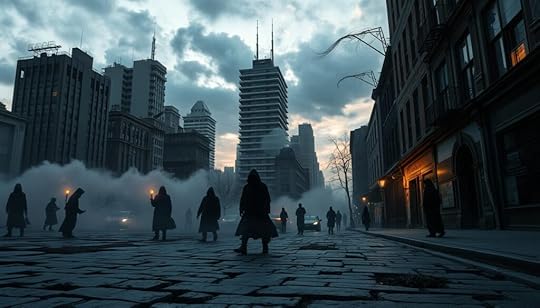
The origins of urban mythologies often intertwine with historical narratives and folklore, reflecting the cultural landscape from which they emerged. City myths serve as markers of collective memory, evolving from age-old tales that were once passed down verbally. They not only address societal anxieties but also act as a lens through which you can examine the norms and values of varying cultures.
In the realm of mythological narratives, the emergence of urban legends can be traced back to communities seeking to articulate their fears and experiences. These tales often encapsulate elements that resonate with audiences, such as *mysterious perils, strange entities*, and chilling happenings. As environments shift through processes like gentrification, the stories adapt, transforming in form while retaining fundamental themes.
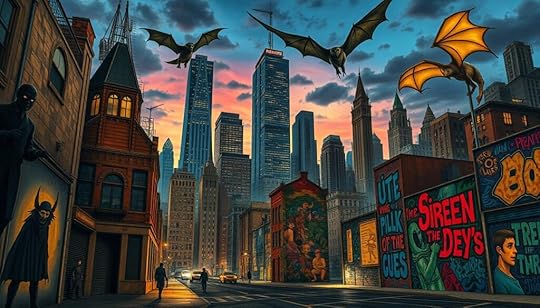
Scholars, such as folklorist Mikel J. Koven, highlight that urban myths mirror the issues confronting society during specific periods. Through the lens of urban legends, you can perceive reflections of societal fears, making them pivotal in understanding cultural sentiments throughout history.
Characteristics of Urban LegendsUrban legends captivate us with their unique traits, making them prominent features of modern folklore. These stories often circulate as truth, even when their origins are dubious or entirely fictitious. Understanding the characteristics of urban legends provides insight into why they persist and evolve over time.
The ‘Friend of a Friend’ PhenomenonOne striking characteristic of urban legends is the ‘Friend of a Friend’ phenomenon. This storytelling technique involves a shared connection, which lends an aura of credibility. When people hear a story that begins with “I heard from a friend…” it becomes more relatable and believable. This indirect source adds layers to the narrative, making it more appealing to listeners. As information flows through personal networks, urban legends spread rapidly, especially with the influence of social media.
Cultural Significance of Urban LegendsUrban legends serve critical cultural roles, reflecting societal fears, norms, and curiosities. They provide cautionary tales that warn people about potential dangers, often reinforcing moral standards. Through engaging storytelling, these modern folklore examples illustrate human nature and convey important social messages. For instance, stories surrounding organ theft or the dangers of reckless behavior serve as reminders of the consequences of one’s actions. Additionally, technology has enabled quick dissemination of urban legends, allowing them to morph and adapt as cultural contexts change.
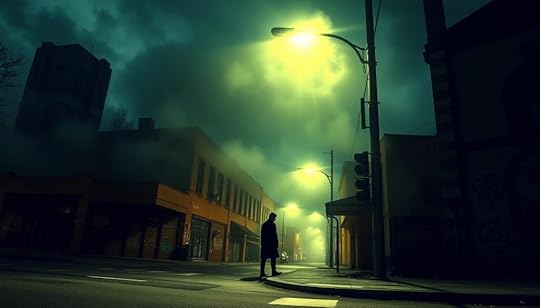
Urban legends persistence is fascinating, as these stories resonate deeply within society. They often touch on contemporary legends that reflect current fears about health, safety, and morality. You may find these legends resonate with your own experiences, making them feel particularly relevant during uncertain times.
Legends thrive in an environment where information is scarce. People naturally fill gaps with narratives that offer explanations or solutions, capturing their imaginations. Additionally, the emotional reactions elicited by urban legends—such as horror, shock, or humor—ensure their continued retelling. This blend of entertainment and morality encourages individuals to share these tales widely, particularly through word of mouth and digital platforms.
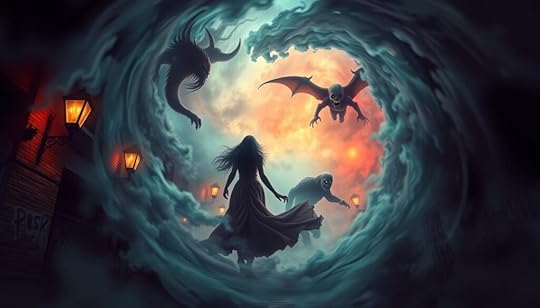
Jan Harold Brunvand, a noted folklorist, described urban legends as stories conveying meaningful messages that hold strong appeal. Research conducted by the International Society for Contemporary Legend Research highlights how these tales provide insights into societal anxieties and behaviors. Given their evolution through modern mediums such as the internet, these narratives can rapidly gain traction and remain in circulation.
Urban legends adapt to new contexts, maintaining relevance and significance. Events like 9/11 or Hurricane Katrina have spurred many conspiracy theories and legends, revealing a deep-seated distrust that certain groups harbor toward authorities. This dialogue enriches cultural discourse and adds layers of depth to contemporary legends, which are often reflective of the values and fears of their time.
FeatureDescriptionMedium of TransmissionPrimarily word of mouth and digital platformsEmotional ResponseHorror, shock, humorOriginalityOften lacks a clear source, making them hard to traceAdaptabilityContinuously evolve to stay relevantSocietal ReflectionMirrors societal fears and valuesThese captivating stories not only offer entertainment but also allow individuals to confront and comprehend their anxieties in a familiar setting. As long as uncertainties exist, urban legends will continue to thrive and evolve, ensuring their place in contemporary culture.
Distinct Types of Urban MythologiesUrban mythologies encompass a fascinating array of stories that serve various purposes and reflect societal concerns. These distinct types of urban myths include cautionary tales aimed at conveying moral lessons and modern folklore that captures the imagination through bizarre occurrences. Understanding these categories allows you to appreciate the richness of urban legends and their role in cultural storytelling.
Moralistic and Cautionary TalesCautionary tales often bring attention to potential dangers, warning against reckless behaviors. You may have encountered stories that caution about trusting strangers or the consequences of poor choices, shaping societal norms and values. These narratives serve as reminders of the risks associated with everyday life, illustrating the concerns parents and communities emphasize to protect their members.
Modern Folklore ExamplesModern folklore continues to evolve, consisting of urban myths that reflect contemporary issues. From health-related warnings to strange happenings, these urban legends encapsulate public anxieties. Some legends may include:
The legend of Huggin’ Molly from AlabamaThe qalupalik legend from AlaskaThe Slaughterhouse Canyon myth in ArizonaThe Gurdon Light occurrences in ArkansasChar Man of San Antonia Creek in CaliforniaThese distinct types of urban myths not only entertain but also evoke important discussions related to community values and collective trepidations, making them compelling pieces of modern storytelling.
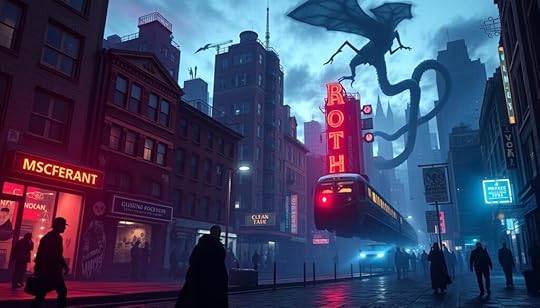
Urban mythologies play a significant role in society by reflecting cultural values and addressing social issues. They reveal collective fears and the deeper undercurrents that shape human behavior. You will find that these myths emerge from a backdrop of anxiety and uncertainty, often echoing historical concerns such as disease or societal change.
In the realm of popular culture, urban mythologies serve as a rich source of inspiration, influencing films, books, and other media. This connection between myth and mainstream entertainment underscores their importance in the narrative landscape. As you explore the intricate web of stories, you notice how themes in popular culture often mirror the essence of urban legends, reinforcing communal values while simultaneously challenging them.
The complexities of modern narratives draw upon classical myths, transforming them into relatable stories for contemporary audiences. Take, for instance, the hero’s journey portrayed in popular franchises; they adapt these ancient themes and present them in ways that resonate with today’s society.
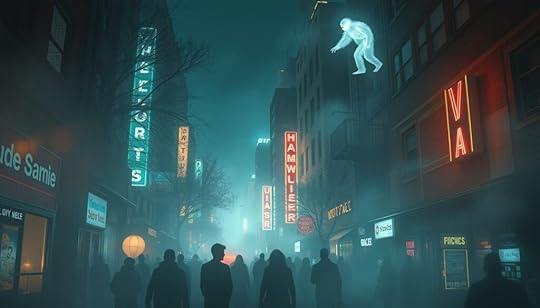
These urban mythologies resonate not just personally but socially, becoming integral narratives that communicate shared experiences. Joseph Campbell’s theories on myths illustrate how they originate from the unconscious, carrying echoes of archetypes and complexities that store psychic energy. This deep-rooted connection enables myths to flourish within communities, often taking on a life of their own, supported by cultural complexes that drive their acceptance and evolution.
ElementSignificance in SocietyCollective FearsUrban myths reflect societal anxieties and cultural tensions.Cultural ValuesThey reinforce shared beliefs and moral lessons.Influence on Popular CultureServe as inspiration for films, books, and other forms of media.Community IdentityHelp to articulate the identity and character of a community.Transformation of NarrativeAdaptation of classical myths into modern contexts.Understanding these dynamics offers valuable insights into the role of urban mythologies. They are not merely stories but a reflection of our societal fabric, acting as both mirrors and architects of cultural consciousness.
Urban Mythologies vs. Traditional MythsUrban mythologies offer a fascinating contrast to traditional myths. While traditional myths are steeped in ancient culture and often feature fantastical elements, urban legends root themselves in familiar, modern settings. This connection to contemporary contexts makes urban mythologies incredibly relatable for their audiences, allowing you to engage more personally with the narratives.
The essence of urban legends lies in their ability to reflect current societal anxieties. These stories often feature themes of danger and mystery, invoking a sense of urgency. For instance, tales of horrific crimes or contaminated foods can lead to widespread warnings and vigilance within communities. In essence, around 30% of urban mythologies relate closely to crime and safety, revealing deep-seated fears you might recognize in your own life.
Interestingly, many urban legends cling to familiar structures of storytelling, echoing elements from traditional myths. Approximately 40% blend these classic themes with modern contexts, illustrating how myths evolve to resonate with modern audiences. You may encounter tales featuring supernatural encounters or bizarre events which account for about 25% of common themes, demonstrating the continual adaptation of folklore.
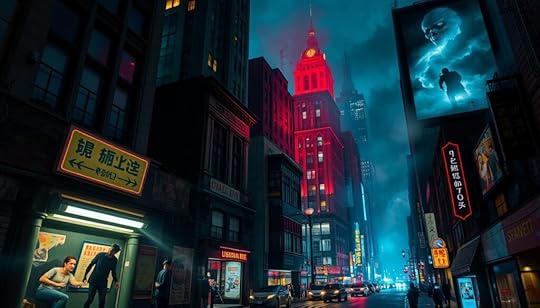
The advent of the internet has dramatically transformed the landscape of urban legends. Social media accelerates the spread, resulting in a 50% increase in narratives reaching diverse demographics. With platforms such as Snopes dedicated to debunking myths, the fusion of folklore with digital culture continues to thrive. This phenomenon not only magnifies personal fears but also contributes to an ongoing dialogue about the role of mythologies in contemporary society.
AspectUrban MythologiesTraditional MythsOriginModern, local settingsAncient, cultural contextsElementsMystery, peril, and humorFantastical beings and moral lessonsSpreadSocial media and oral traditionOral storytelling and written textsThemesCautionary tales and societal fearsMoral tales and mythologyConnection to CultureReflects modern anxietiesShapes cultural identity and valuesFamous Urban Legends Across the GlobeExploring famous urban legends reveals how cultural nuances shape these intriguing narratives. Across the globe, urban myths often convey deeper meanings or societal fears, blending mystery with folklore. Here are a few notable examples that capture the imagination and stir curiosity.
Japan’s Haunting Bath GameIn Japan, the Bath Game stands out among famous urban legends. Participants aim to summon a spirit while taking a bath, seeking fortune or guidance. This ritual carries risks, as encounters with the supernatural can lead to dire consequences. It showcases how Japanese culture intertwines daily life with spiritual beliefs, highlighting the thin veil between reality and the unknown.
Hawaii’s Night MarchersThe Night Marchers are among the most chilling of global urban myths. These ancient warrior spirits march through the Hawaiian islands during nights of significance. Locals report that looking directly at them may result in tragic outcomes, emphasizing the critical need for respect towards ancestors and their traditions. The legend serves as a reminder of cultural heritage, weaving fear and respect into the fabric of Hawaiian identity.
The Headless Boy of Dow Hill Forest in IndiaThis Indian urban legend depicts the eerie presence of the Headless Boy in Dow Hill Forest. Tales of his ghostly figure haunt those who dare to visit. Known for spreading fear and curiosity, this story reflects deep-seated anxieties about the supernatural. Local residents share their experiences, underscoring how legends resonate with the collective psyche and illustrate societal fears.
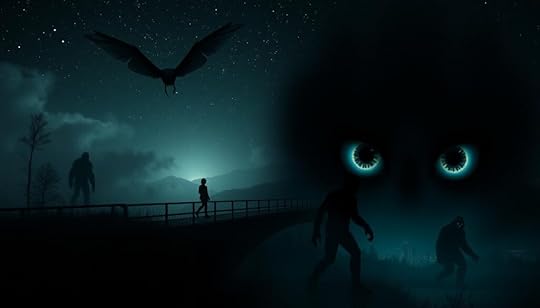
Urban legends reflect fears and societal anxieties, often capturing contemporary issues like crime, health scares, and evolving gender dynamics. For instance, the myth of the groom announcing his marriage annulment at the reception illustrates anxieties surrounding commitment and betrayal. Such narratives encapsulate the complexities of modern life.
Intriguing stories, such as those about alligators in sewers and deep-fried rats at fast-food outlets, resonate with the public’s imagination while simultaneously reflecting deeper societal fears regarding safety and trust. These urban legends often serve as cautionary tales, emphasizing a collective sense of powerlessness in the face of modern challenges.
The compelling nature of these tales allows them to thrive in communal storytelling, whether through talk radio or online platforms. Individuals find a sense of belonging by participating in the sharing and evolution of these narratives. This interaction nurtures a culture where urban legends can symbolize societal dysfunction, providing an avenue to confront complex and frightening aspects of life.
The absence of resolutions within these stories starkly contrasts the moral lessons typically found in traditional folklore. Instead, urban legends highlight prevalent fears, contributing to an ongoing narrative that reflects the ever-changing landscape of societal anxieties.
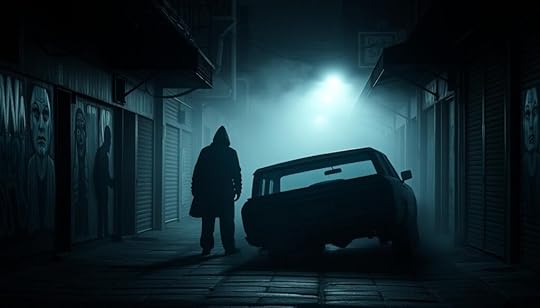
Urban mythologies have woven themselves into the fabric of popular culture, manifesting through various media forms. These legends not only entertain but also provoke thought, bridging the gap between reality and fiction. Stories like “Bloody Mary” and “The Hookman” demonstrate how these myths are reinterpreted across films, books, and other media. Each retelling adds layers to these tales while keeping their origins alive.
Films, Books, and Media RepresentationsThe urban legend of “Bloody Mary” captivates audiences worldwide, often depicted in horror films and youth literature. Its premise, where individuals chant the name of Queen Mary I in front of a mirror, leads to a chilling encounter with her spirit. Similarly, the “The Hookman” narrative continues to inspire thrillers, portraying a couple’s encounter with a dangerous figure during a mundane moment of their lives.
Folklore in popular culture frequently explores themes related to everyday fears. For instance, the tale of “The Kidney Heist” has become a cautionary story, warning against the dangers that lurk in seemingly innocent situations. In movies and novels, elements of food-related urban myths highlight bizarre claims about fast food chains and the unseen ingredients in our meals, adding to the genre’s dark humor.
Modern representations reflect how these urban mythologies in media can resonate with audiences, as seen with the viral sensation “Slender Man.” This contemporary legend, born from internet culture, illustrates how myth-making evolves with technology. Additionally, legends surrounding haunted locations or even supernatural occurrences in seemingly ordinary houses inspire suspenseful storytelling in film and literature.
These narratives encapsulate societal fears, drawing audiences into a world where the unimaginable appears just within reach. They serve as modern folklore, continually reminding us that stories of myths can transcend time and technology, captivating new generations.
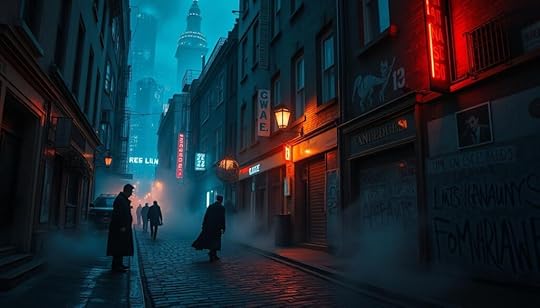
Urban legends captivate you through a unique blend of fear, curiosity, and emotional resonance. These tales, often told through the lens of *friends of friends*, create a compelling narrative that encourages storytelling and community bonding. Their psychological appeal stems from the anxieties and societal fears they address, tapping into personal experiences and emotions. You may find yourself drawn to these stories not just for entertainment but also for reflection on real-life scenarios.
Research indicates that the endorsement of urban legends is linked to certain cognitive-perceptual factors. In a study involving 222 volunteers, those prone to reality testing deficits showcased stronger beliefs in urban legends. The mix of *psychological appeal of urban myths* not only fuels curiosity but also satisfies emotional needs, feeding on fears and societal shifts.
These myths typically reveal truths about human nature, where the most fantastical tales may resonate with genuine societal experiences. The emotionally charged nature of urban legends grants them a life of their own, often propagated without scrutiny, despite the availability of factual verification. Elements that often characterize urban legends include:
Insistence on truthConnections to friends of friendsAge and variations of the storyThemes of death, crime, and emergencies
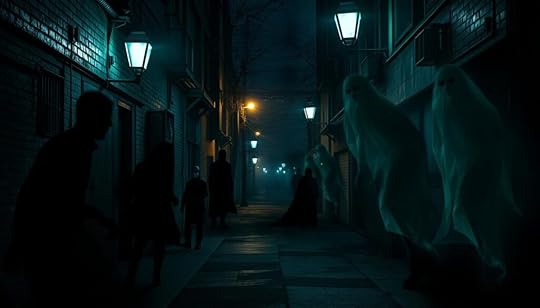
Ultimately, urban legends hold a mirror to the fears and anxieties of society. Even with ample information available to debunk them, their psychological appeal ensures that they continue to thrive in our collective consciousness. They fulfill a need for connection, offering a sense of shared understanding within communities, reinforcing the enduring allure of folklore interest.
Debunking Urban Legends: What’s Fact and What’s Fiction?Debunking urban legends requires a careful examination of their roots and claims. Over time, many stories undergo transformations, often losing touch with any reality they once held. For example, the Ghost Train of Bostian Bridge in North Carolina echoes a tragic tale from 1891, where 22 passengers lost their lives. Yet, in 2010, the legend inspired real danger when amateur ghost hunters were struck by a train, exemplifying the blurred line between fact vs fiction.
Resources like Snopes serve as invaluable tools for debunking urban legends. They provide insights into the origins of tales, dissecting the truths hidden within folklore. Similarly, the infamous Bell Witch Haunting and sightings of the Mothman in West Virginia have sparked curiosity and concern among many. These stories captivate audiences with their blend of surreal and eerie elements, which often stem from a tiny kernel of truth.
When exploring these myths, you’ll find that they frequently convey cautionary messages. Misunderstandings or exaggerations foster misinformation that can shape public opinions and behaviors. This societal impact illustrates the profound connections between urban legends and our perceptions of the world around us. Thus, as you delve into the realm of urban myths, consider how much of what you hear stands up to scrutiny in the realm of fact vs fiction.
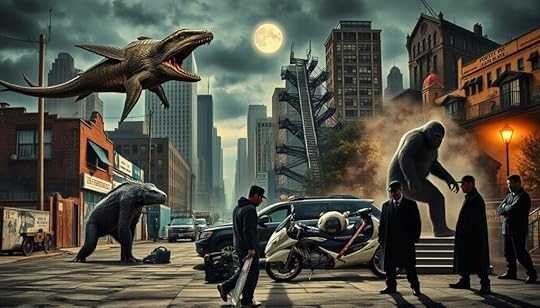
Urban mythologies serve as a fascinating mirror reflecting societal values, fears, and moral lessons. By learning from myths, you can gain valuable insights into the cultural narratives that shape your community and personal experiences. These legends often arise from heightened emotions or social anxieties, encapsulating underlying truths that resonate with people’s lives. Analyzing these stories enables you to better understand the historical context and psychological factors that influence behavior.
As you delve into the world of urban legends, you’ll develop critical thinking skills about information sources. The spread of myths, especially in the age of social media with 4.59 billion users worldwide, calls for caution regarding sensationalized claims. With experts predicting that this number will exceed six billion by 2027, it’s crucial to stay informed and discerning. By reflecting on the implications of urban legends, you are not just absorbing stories; you are encouraging a deeper appreciation for authentic narratives in both past and modern storytelling.
Moreover, the digital landscape has significantly transformed how these myths are crafted and shared. With each retweet and share, you’re participating in a collective storytelling experience that blurs the lines between folklore and new narratives. Urban legends remind us that insights from urban legends can illuminate essential aspects of human behavior, guide moral reasoning, and even inspire caution in the age of rapid information dissemination. Ultimately, engaging with these narratives enriches your understanding of both individual and societal dynamics.
FAQWhat are urban mythologies?Urban mythologies encompass a vast range of tales and stories that reflect societal fears, beliefs, and values, serving as an essential part of modern folklore. These narratives often create a bridge between reality and fiction, embodying cautionary tales relevant to contemporary society.
How do urban legends differ from traditional myths?Urban legends typically originate in modern settings and often involve relatable circumstances, making them more accessible than traditional myths, which are often rooted in ancient cultures and fantastical elements. Urban legends reflect contemporary societal anxieties while still echoing timeless human concerns.
Why are urban legends so popular?Urban legends resonate with people due to their emotional appeal, often provoking curiosity, fear, and a sense of community through shared storytelling. Their potential truthfulness encourages continual retelling and engagement, making them a lasting part of popular culture.
What purpose do urban legends serve in society?Urban legends serve numerous cultural functions, from reinforcing social values to highlighting societal issues. They provide insight into collective fears and moral values, allowing individuals to navigate complex topics through entertaining narratives that illuminate human behavior and beliefs.
Can urban legends reflect societal fears?Absolutely. Urban legends often encapsulate contemporary concerns, such as health, safety, and morality. They provide a framework for individuals to engage with and understand personal and societal anxieties, acting as vessels for cautionary tales that mirror real-life experiences.
How can I debunk an urban legend?Debunking urban legends involves researching their origins and verifying the claims made. Utilizing platforms like Snopes can aid in examining these narratives, helping to differentiate between fact and fiction and providing a clearer understanding of modern folklore.
What are some examples of urban legends worldwide?Examples include Japan’s Bath Game, which invites players to summon a spirit; Hawaii’s Night Marchers, spirits of ancient warriors; and India’s Headless Boy in Dow Hill Forest, reflecting the fears and concerns prevalent in their respective cultures.
How do urban mythologies influence popular culture?Urban mythologies significantly impact popular culture by inspiring various media, including films, books, and television shows. They transform myths into entertaining stories while blurring the lines between fact and fiction, helping to keep the legends alive in contemporary discourse.
What insights can we gain from analyzing urban myths?Analyzing urban myths helps us understand cultural fears, moral values, and social norms. By examining these narratives, individuals can gain valuable lessons about critical thinking, caution in information sources, and the implications of myths within their societal context.
Uncover the Truth: Exploring Monster Myths
Have you ever found yourself captivated by the flickering shadows that dance just beyond your peripheral vision, or felt a shiver as the tales of the unknown pull you in? Monster myths are not merely relics of our past; they are woven into the very fabric of our imagination, providing a glimpse into our fears, hopes, and the mysteries surrounding us. From the bizarre to the downright chilling, these *mythical creatures* stir something deep within, allowing us to confront the shadows lurking in our minds. As we explore the rich narratives of *folklore monsters*, we invite you to embark on a journey through history, culture, and the human psyche to uncover the truth behind these legendary beings. Let your curiosity guide you as we delve into the world of monster myths, where each story holds a piece of our collective experience.
Key TakeawaysMonster myths serve as reflections of our fears and cultural values.Mythical creatures have shaped storytelling for centuries.Folklore monsters vary significantly across different cultures.Understanding the origins of these legends can enhance our appreciation of them.Exploring monster myths reveals insights about human psychology and society.Introduction to Monster MythsMonster myths have fascinated humans across cultures for centuries. These stories, woven into the fabric of folklore, often reflect deep-seated fears and curiosities about the unknown. Supernatural creatures like dragons, werewolves, and sea monsters captivate imaginations and evoke a sense of wonder, fear, and intrigue. These narratives serve dual purposes: they entertain and function as cultural artifacts that reveal our values and beliefs.
Folklore about monsters often emerges from the collective psyche, representing societal anxieties, moral lessons, and the natural world’s mysteries. As you delve into these myths, consider how the monstrous figures challenge the boundary between reality and imagination. They serve as reflections of our fears, representing what we cannot control or fully understand. Through the lens of monster myths, you can explore the connection between humanity and the environment, as well as the psychological motives behind these captivating tales.
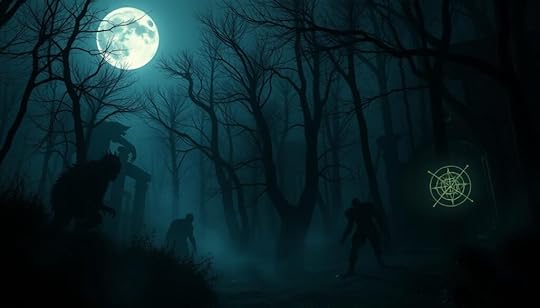
As you continue your journey into this realm, notice how these myths are not just mere stories but complex narratives that engage with themes of identity, societal norms, and the human experience. The fascinating world of monster myths and the diverse folklore surrounding them offer insights into human existence, reflecting our relationship with fear, morality, and the unknown.
The Origins of Mythical CreaturesThe fascination with mythical creatures has deep roots in human history. Legends about these fascinating beings emerge from a blend of culture, imagination, and societal needs. Each myth serves a purpose, telling stories that reflect the values and beliefs of the time. You might find it intriguing how these tales have evolved and adapted over generations, often retaining a thread of cultural significance.
How Legends are BornEvery legend you hear about mythical creatures has its beginnings shaped by various societal influences. Often, these stories arise from:
Oral traditions that pass down tales through generations, evolving in the telling.Common fears or natural phenomena that require explanation, giving rise to characters like the Kraken or Yeti.Symbolic meanings behind these creatures that often reflect human traits, such as the noble unicorn or the cunning werewolf.Through time, these mythical beings take on characteristics that resonate with people, embodying cultural narratives that persist in collective memory.
Cultural Significance of Monster MythsMythical creatures play a vital role in shaping cultural identity. They often serve to:
Transmit moral lessons designed to guide behavior within the community.Explain the unexplainable, like celestial events or natural disasters.Reinforce social norms, showing what is acceptable or taboo within the society.Legends often vary significantly between cultures, yet they all provide a sense of belonging and shared faith. These stories, while fantastical, hold layers of meaning that connect us to our ancestors and cultural heritage.
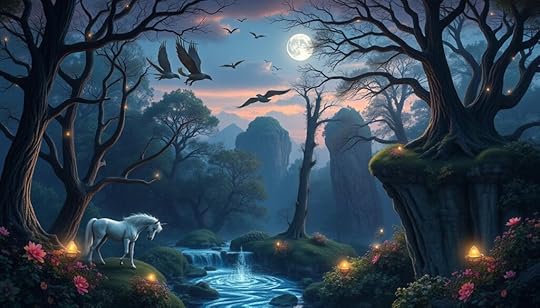
Folklore monsters serve as fascinating representatives of cultural beliefs and traditions, weaving rich narratives that resonate across diverse societies. Each culture possesses its unique representation of mythical beings, shaped by distinct environmental factors and social contexts. Through this exploration, you will uncover some prominent folklore monsters and the variations that exist across global myths.
Understanding Variations Across CulturesEach region has its legendary creatures that embody local fears, hopes, and moral lessons. For instance, the Jorogumo from Japanese mythology illustrates a spider that transforms into a woman after centuries, representing seduction and peril. In contrast, the Gashadokuro is a skeletal giant formed from bones of the unburied, emphasizing the importance of proper funerary rites. Cultural variations manifest in different forms and narratives, such as the Penanggalan, a disembodied vampire from Malay folklore, whose sinister actions target pregnant women and infants.
The Role of Folklore Monsters in SocietyFolklore monsters often act as social mirrors, reflecting societal values and concerns. The Egyptian Ammit serves as a guardian of moral integrity, devouring impure souls, while Typhon and Hydra from Greek mythology personify chaos and regeneration. Such figures resonate within their cultures, often used to caution individuals against moral failures. Likewise, figures like the banshee in Irish culture underscore the intricate relationship between folklore and the understanding of mortality. These mythical beings play vital roles in storytelling, serving as both warnings and sources of inspiration for their communities.
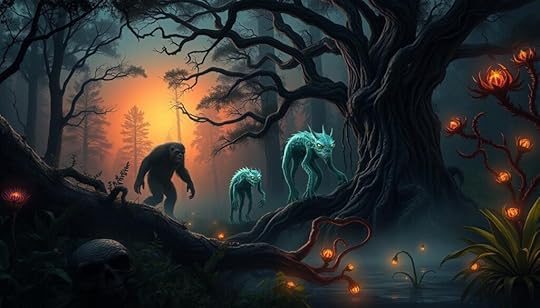
Cryptid legends captivate your imagination about the existence of unknown creatures that wander the fringes of reality and myth. From the elusive Bigfoot to the infamous Loch Ness Monster, these legends have sparked debates and investigations among enthusiasts and skeptics alike. The term “cryptozoology” was introduced by Belgian-French zoologist Bernard Heuvelmans in 1955, marking the beginning of a systematic exploration into these mysterious beings.
Eyewitness testimony plays a crucial role in cryptozoology. Although subjective, it provides valuable insights into alleged encounters with these creatures. Evidence collected often includes physical remains such as footprints, hair samples, and photographs. For instance, DNA analysis has been used in pursuits related to the Yeti, offering glimpses into its biological nature. Yet, despite various claims, the Loch Ness Monster remains unproven, with numerous sightings and questionable photographic evidence.
The Kappa, a fascinating water-dwelling creature from Japanese folklore, boasts a beak-like mouth and a shell on its back. This cryptid’s origins stretch back to ancient texts like the Kojiki, dated to the 8th century. In the 19th century, a Japanese scholar, Kiyokazu Okita, even claimed to have captured a Kappa, showcasing this legend’s significant cultural presence. The Kappa’s influence permeates Japanese art, literature, and popular media, cementing its status as a notorious unknown creature.
In some communities, cryptid legends like the D’gogwa reflect cultural beliefs and fears. This cryptid, a hybrid of human and coyote, evokes dread within Melungeon families, particularly in desolate landscapes like neglected cemeteries. Such sites feature unique burial practices aimed at protecting against the cunning predator, which uses deceptive cries to entice unsuspecting victims. The lore surrounding the D’gogwa serves as a powerful reminder of how myths shape cultural identity and instill fear.
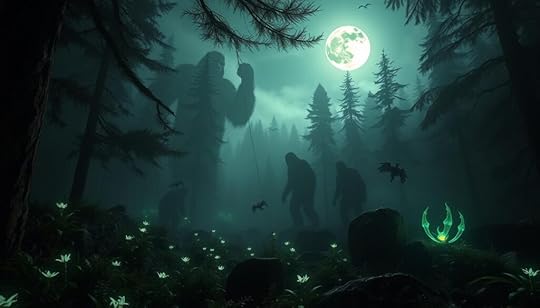
Exploring the connection between legendary beasts and their real-life counterparts reveals fascinating insights about how myths often arise from actual creatures. Nature serves as a rich source of inspiration, transforming the mundane into the extraordinary through storytelling. By examining the origins of these tales and the animals that may have influenced them, you can better appreciate the interplay between extinct animals and nature myths.
Linking Myths to Extinct AnimalsMany legendary creatures have their roots in extinct animals that roamed the Earth long ago. For instance, the Deinotherium Giganteum, an enormous relative of today’s elephants, likely inspired tales of Cyclopes. Similarly, ancient accounts of giant squids, which can grow over 30 feet long, may have laid the groundwork for the legendary Kraken. These inherent connections illustrate how our understanding of ancient beings shapes contemporary stories.
The Influence of Nature on Myth CreationThe environment plays a crucial role in shaping nature myths. For example, the Japanese giant salamander, often associated with Kappa legends, can reach five feet in length. Additionally, the Loch Ness Monster’s lore has its roots in uncertainty surrounding large aquatic creatures, possibly linked to now-extinct plesiosaurs. Whether it’s through dramatization of local fauna or misinterpretations of ecological features, nature remains a powerful catalyst for myth-making.
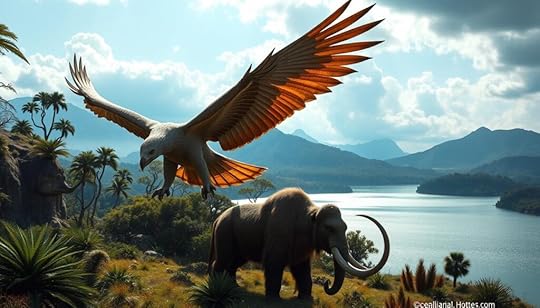
Exploring the foundations of cryptozoology reveals fascinating insights into our quest for creatures that straddle the line between reality and myth. This subculture primarily focuses on entities documented in folklore and urban legends, emphasizing notable examples such as Bigfoot and the Loch Ness Monster. Despite itself being classified as pseudoscience, cryptozoology appeals to many enthusiasts who seek evidence of these elusive beings.
The Search for Bigfoot and Other CryptidsThe phenomenon of Bigfoot sightings has captured imaginations worldwide since its inception in the late 1950s in California. This legendary figure, often depicted as a large, hairy humanoid, has become central to various folklore narratives across cultures. Cryptozoologists have extensively documented claimed sightings and encounters, often relying on anecdotal evidence rather than rigorous scientific methodology.
Many in the field reject conventional scientific practices, citing the inability to produce definitive proof of cryptids. They fashion their beliefs around stories, rumors, and historical records. This approach aligns cryptozoology with other pseudosciences, such as ghost hunting and ufology, with both drawing from similar wellsprings of anecdotal evidence.
Among the community, notable cryptids include the Yeti in the Himalayas, the Jersey Devil in New Jersey, and the Skunk Ape in Florida. Locations often play a significant role in these myths, with specificity adding to their allure. Take the Loch Ness Monster, for instance, whose mysterious reputation thrives on the scenic backdrop of Scotland’s Loch Ness. Cryptids like the Chupacabra and Kraken continue to thrive within cultural narratives that reflect deep-rooted fears and fascinations.
The nostalgia surrounding Bigfoot sightings perpetuates an ongoing dialogue between belief and skepticism. As cryptozoologists persist in their search for these beings, the boundary between folklore and empirical inquiry continues to dissolve, leaving you to ponder the nature of these mysterious creatures.
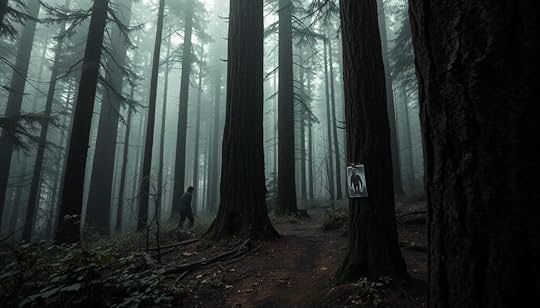
Urban legends represent a fascinating aspect of modern folklore, constantly evolving as they pass from person to person. Traditionally disseminated through word of mouth, they have adapted to current technologies, often spreading via email or social media platforms. This transformation enhances their reach, making it challenging to pinpoint their original source.
Renowned folklorist Jan Harold Brunvand, best known for his work “The Vanishing Hitchhiker,” significantly contributed to the study of urban legends. His insights highlight that most of these tales contain moral lessons, interpreted diversely by listeners. Additionally, these legends often provide a mirror to society’s fears and concerns, offering profound insights into contemporary culture.
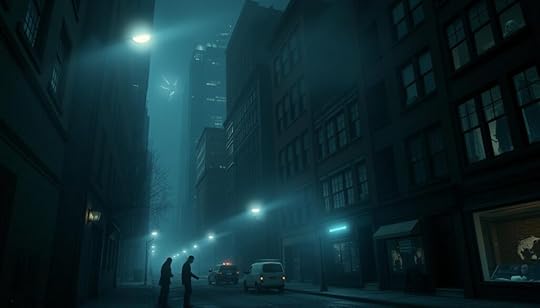
Urban legends thrive on their cultural relevance, sometimes persisting for decades. They can blend humor with horror, creating narratives that engage and intrigue. Some tales focus on warnings about crimes or misleading information, aiming to educate listeners on potential dangers. This duality—drawing on elements of the supernatural while containing humorous undertones—adds layers to their appeal.
Modern advancements in communication have allowed urban legends to flourish like never before. With online platforms facilitating their spread, stories can quickly gain traction in various regional forms, yet retain core lessons. Deceptively plausible elements boost the believability of these narratives, making them difficult to dismiss.
Despite the ease of debunking urban legends in the digital age, they remain an enduring part of human culture. As society continues to evolve, so too will its urban legends, reflecting changing norms and values while offering a platform for storytelling that engages audiences across generations.
Examining the Psychology Behind Monster MythsThe allure of monster myths transcends borders and generations. They epitomize the psychology of myths, weaving tales that resonate with the deepest human fears. The belief in monsters serves various purposes, encapsulating societal anxieties while providing comfort through storytelling. From the half-human, half-lion Sphinx of Giza to the fierce lion-man Narasimha in Hindu lore, monsters embody themes that reflect cultural narratives and individual experiences.
Why Do We Believe in Monsters?Humans possess an innate tendency to categorize their surroundings, forming a folk taxonomy that simplifies comprehension. This early developmental process fosters a unique response to category violations. When faced with monsters, the brain engages intensely, drawing attention to these composite creatures. Anthropologist David Wengrow suggests that the interaction of cultures during the Bronze Age led to an explosion of hybrid monsters as trade routes expanded. Such creations reveal our deep-seated human fears, showcasing how monsters often personify societal threats that need vanquishing.
Fear and Comfort in FolkloreFolklore monsters operate on multiple levels, acting as symbols of existential threats while also providing a narrative framework through which we can explore our fears. The psychological landscape intertwines with symbolism, bringing forth ideas like the three-headed Cerberus, representing various forms of human hatred. The regenerating hydra serves as a metaphor for the futility of addressing complex problems. Godzilla’s representation of nuclear dread highlights ongoing anxieties surrounding technology and nature. Through these narratives, you find comfort in the familiarity of shared cultural fears, allowing a safe environment to process the otherwise unexplainable aspects of existence.
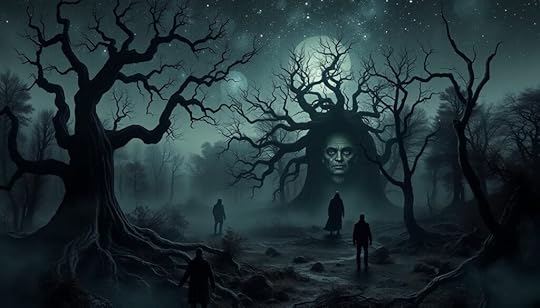
The fascination with the Loch Ness Monster, affectionately known as Nessie, has persisted for decades, captivating enthusiasts and skeptics alike. Historical sightings have amassed a staggering 1,155 sightings in the past 90 years since Hugh Gray’s iconic photo in 1933. This enduring interest raises important questions about the relationship between the Loch Ness Monster and our cultural narratives surrounding monsters.
Historical Sightings and EvidenceThe legend of the Loch Ness Monster dates back to 565 AD with Saint Columba’s earliest reports. These accounts paved the way for modern fascination; significant sightings like those of George Spicer and others in 1933 spurred widespread belief. Spicer described a creature with a “large body” and a “long, wavy neck,” a description that resembles the typical portrayal of Nessie.
Despite various reports, many sightings remain disputed. The famous “surgeon’s photo” published in 1934 gained instant fame but was later debunked as a hoax. Such revelations contribute to the ongoing debate about the validity of Nessie sightings, often attributed to misidentifications or even hoaxes perpetuated through cultural narratives.
The Science Behind Loch Ness InvestigationsScientific inquiry into the Loch Ness Monster has taken various forms over the years. Most notably, researchers from New Zealand conducted a comprehensive DNA analysis of Loch Ness water samples. Their findings revealed a lack of any large animals like plesiosaurs, a creature typically associated with Nessie lore. Instead, they identified a wealth of European eel DNA, suggesting a more mundane explanation for the sightings—possibly juvenile eels traversing great distances.
Although no evidence supports the existence of the Loch Ness Monster, the myth continues to thrive. The intersection of technology, photography, and a culture that resonates with myth-making suggests that theories surrounding Nessie may never fully vanish. As people continue to report sightings, the Loch Ness Monster remains a significant icon, echoing humanity’s enduring love for mysteries.
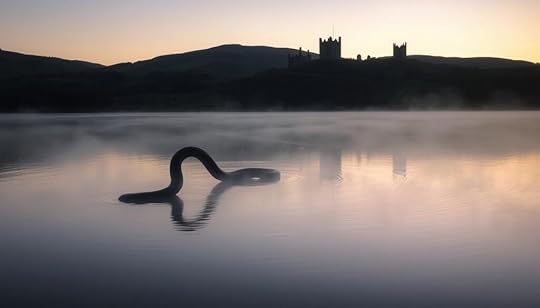
The Yeti, often embraced as the Abominable Snowman, stands as one of the most captivating figures in Himalayan folklore. Stories surrounding this mysterious creature have captured the imagination of explorers and scientists alike. You may find it fascinating how the Yeti’s origins intertwine with the rich tapestry of Sherpa traditions and Western fascination, resulting in a legend that transcends cultures.
Folkloric Roots of the Abominable SnowmanThe term “Yeti” potentially merges the Sherpa words “yah” (rock) and “teh” (animal), adding depth to its significance in local culture. As the Yeti narrative spread, various Himalayan communities referred to the creature with distinct names, such as Almas and Mig-de, further cementing its presence in their folklore. In the early 20th century, journalists adopted the sensational term “Abominable Snowman,” stemming from information provided by Sherpa guides during a reconnaissance expedition on Mount Everest.
Reports of giant footprints on Everest by Sir Edmund Hillary in 1953 ignited international intrigue into the Yeti. Despite numerous reported encounters, including ancient Chinese sightings of the Wildman in Shennongjia forests, solid proof of the Yeti’s existence remains scarce. Critically, genetic analyses of supposed Yeti samples often traced back to bear species, like the Asian black bear, casting doubt on the mythical reputation of the creature.
In the Mechuka Valley of Arunachal Pradesh, the allure of Yeti lore has transformed the region into a tourist hotspot, fueled by legends of humanoid figures observed in the dense forests. Hybrids of folklore and modern expeditions continue to stimulate debate among scientists and enthusiasts alike regarding the Yeti’s reality. Even with technological advancements unraveling the true nature of ‘Yeti relics,’ people still look to the mountains, seeking a glimpse into the mystique of this enduring legend.
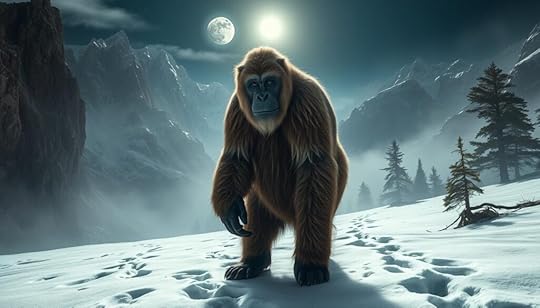
The Chupacabra is a fascinating creature rooted in Latin American myths, primarily traced back to Puerto Rico during the mid-1990s. Reports emerged of mysterious livestock deaths, with farmers claiming animals were left with two puncture wounds on their carcasses. This narrative ignited widespread panic and intrigue, spawning various descriptions of the creature as either a bipedal reptilian monster or a hairless wild dog. The phenomenon soon captured attention across the globe, leading to sightings reported as far north as Maine and as far south as Chile.
Modern Sightings and ExplanationsModern sightings of the Chupacabra have been documented in unexpected locations, including countries like Russia and the Philippines. Benjamin Radford’s investigation shed light on these sightings by noting that many original eyewitness accounts from Puerto Rico bore a stunning resemblance to Sil, a character depicted in the 1995 film Species. Various confirmations in northern Mexico and the southern United States suggest that many so-called chupacabras are in fact canids suffering from mange. A study conducted by Dr. David Morales, a Puerto Rican veterinarian, analyzed over 300 reported Chupacabra victims and found little evidence of blood being fully drained, further questioning the mythos surrounding this enigmatic creature.
The Vampire Myth and Animal BehaviorThe Chupacabra phenomenon draws on the age-old vampire myth, intricately linking it to animal behavior observed in affected livestock. Sightings have often described the creature as having a reptilian appearance with a greenish-gray hue and distinct spines, standing between three to four feet tall. Others noted traits akin to a hairless canine, featuring sharp fangs and prominent eye sockets. These diverse representations illustrate how the Chupacabra myth evolved, shaped by cultural narratives and misinterpretations. Notably, scientists like Barry O’Connor from the University of Michigan have concluded many reports of the Chupacabra in the United States likely stem from sightings of infected coyotes. This blending of folklore and real animal behavior highlights the power of stories in shaping perceptions around livestock myths.
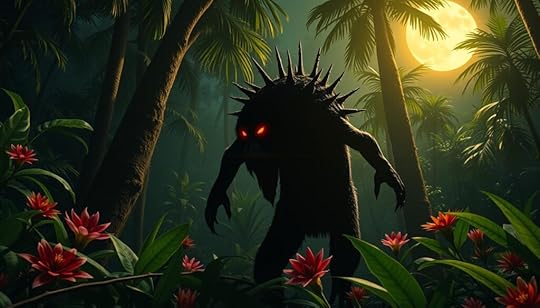
Exploring the fascinating intersection of mermaids and manatees reveals how human imagination intertwines with real marine life. Many tales of mermaids have roots in the natural world, particularly inspired by the gentle and often misunderstood manatee. These sea creatures inhabit warm, shallow waters and possess physical characteristics that may have led early explorers to confuse them with mermaids.

Historical accounts provide intriguing insights into this connection. For instance, Christopher Columbus reported sightings off the coast of Hispaniola in 1493, describing figures in the water that resembled mermaids but likely were manatees. Such misinterpretations highlight the origins of myths surrounding these legendary beings. Numerous accounts of mermaid sightings across maritime folklore might stem from similar misunderstandings of manatees and their graceful movements.
In addition, environmental factors play a role in these ancient narratives. Low visibility conditions at sea, fatigue, and dehydration can alter perceptions, making it easy for sailors to mistake manatees for enchanting sea maidens. The allure of companionship and fantasy during long voyages may further complicate these identifications, revealing a deeper human yearning for connection.
Sadly, manatees currently face significant threats, with the International Union for Conservation of Nature classifying them as vulnerable. In 2013 alone, manatee deaths reached a record high, indicating that these gentle creatures’ survival depends on immediate conservation efforts. Understanding the connection between mermaids and manatees enriches our appreciation for both folklore and the realities of marine life.
Monsters in Literature: Influence on Modern CultureLiterature has long been a refuge for exploring complex themes through the lens of monsters. The portrayal of these beings often serves as a reflection of societal fears and aspirations, shaping cultural narratives over the centuries. From ancient myths to modern tales, monsters in literature draw on deep-rooted emotions and cultural reflections that resonate with readers.
Reflections of Society in Monster NarrativesThroughout literary history, monsters have acted as powerful metaphors for various societal anxieties. For instance, Mary Shelley’s depiction of Frankenstein’s monster was described in 1823 as “hideous from their discrepancy taken as a whole,” emphasizing issues of acceptance and rebellion against creator norms. In a similar vein, Bram Stoker’s Dracula received mixed reactions upon its release, with one critic recognizing it as a “striking example of imaginative power,” while others found it “weird” and gruesome. These varying responses underscore how monster narratives provoke thought about moral implications and human behavior.
The Role of Movies and MediaMovies have played a crucial role in perpetuating and evolving the representation of monsters from literature. The 1931 Hollywood adaptation of Dracula stands as a testament to the enduring popularity and media influence of Stoker’s character. Modern renditions, such as Branagh’s 1994 production of Frankenstein, illustrate a significant shift towards acknowledging the humanity within monstrous figures. This new perspective helps to cultivate empathy rather than perpetuate fear, contrasting sharply with older portrayals that focused predominantly on the terrifying aspects of monstrosity.
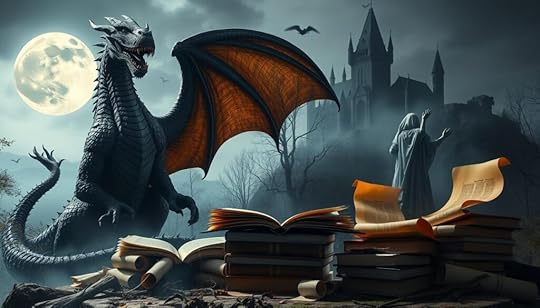
Popular modern characters like Edward Cullen from Twilight and Klaus Nicholson from The Originals show how seductive qualities can draw from the frightening nature of earlier literary persons. Their captivating representation suggests an ongoing dialogue between past and present, showcasing how fears, desires, and cultural reflections interconnect across different media.
The exploration of these themes through monsters in literature continues to challenge and inspire audiences, inviting them to confront their own fears and societal pressures.
MonsterSourceKey ThemesFrankenstein’s MonsterMary Shelley (1818)Rebellion, acceptance, humanityDraculaBram Stoker (1897)Desire, fear of outsiders, moral decayMedusaGreek MythologyPower, transformation, fearThe MinotaurGreek MythologyDuality, confinement, human natureMonster Myths and Their Impact on ChildrenThe impact of myths on children goes beyond mere entertainment; it plays a crucial role in their psychological development. Youngsters often encounter folklore that features monsters as a means of exploring their childhood fears. These narratives can help children understand complex emotions, allowing them to confront and manage their anxieties.
Monsters in children’s literature come in various forms, and their representations evolve with the maturity of the reader. Younger kids might associate brightly illustrated monsters with happy endings, viewing them as friendly beings that aid in overcoming adversity. This portrayal contrasts sharply with more sinister depictions found in Gothic tales and chapter books, which introduce older children to the deeper complexities of fear.
Notably, stories featuring monsters often serve therapeutic purposes. They provide children with tools to navigate real-life struggles, such as family dynamics and peer relationships. By engaging with these stories, kids learn bravery through the monsters they face, allowing them to gradually confront fears. This process is vital in developing resilience when faced with new challenges later in life.
Modern media further amplifies these themes. Popularized creatures like the chupacabra propagate through television and the Internet, enhancing their presence in children’s folklore. Reports of sightings invoke curiosity and fear, allowing kids to grapple with the unknown. This dynamic showcases how legends can evolve in response to societal fears, making it essential for both creators and educators to consider the associated impact of myths on children as they encounter such narratives.
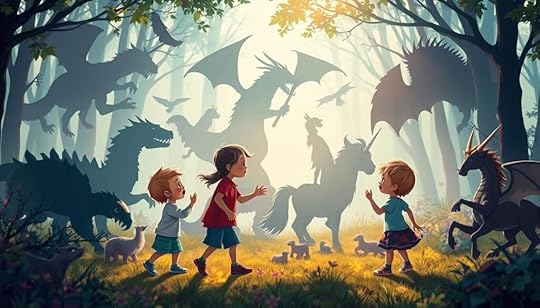
In this exploration of monster myths, we’ve traveled through tales and legends that shape human imagination and culture. This conclusion of monster myths reveals that while evidence often falls short, the allure of creatures like the Loch Ness monster and Sasquatch endures. Their stories are deep-rooted in various cultures, with the earliest records dating back over 1500 years, showcasing the timeless nature of these myths. Furthermore, the intriguing evidence, such as the famous 1934 photograph of Nessie, reminds us of our inherent curiosity about the unknown.
A summary of myths throughout different regions highlights the diverse manifestations of these creatures, from the Yeti in the Himalayas to the Chupacabra in Latin America. Each story carries with it lessons learned that reflect our societal fears, hopes, and the ongoing quest for understanding the mysteries of existence. Even with scientific studies debunking many claims, the emotional resonance these myths hold continues to captivate our minds.
Ultimately, the fascination with monster myths transcends simple belief; it serves as a window into our collective psyche. Whether as symbols of fear, comfort, or adventure, these tales enrich human experience. The journey through the world of monsters encourages you to ponder your connection to these legends and consider what they reveal about humanity’s ongoing search for meaning in the face of the unknown.
FAQWhat are monster myths and why are they important?Monster myths are fascinating stories about mythical creatures and folklore monsters that have been part of human culture for centuries. They are important because they reflect our fears, values, and beliefs about the unknown, helping us make sense of our environment and ourselves.
How do monster myths originate?Monster myths often originate from historical and social conditions, evolving through storytelling and oral traditions. They have served various purposes, such as explaining natural phenomena, conveying moral lessons, and reinforcing social norms.
Are cryptids real creatures?Cryptids like Bigfoot and the Loch Ness Monster are creatures whose existence is debated. These legends often persist due to folklore traditions and anecdotal evidence, raising questions about the line between myth and reality.
What is the connection between mythical beasts and real animals?Many legendary beasts are inspired by real-life animals, particularly those that are misunderstood. For example, tales of giants may derive from sightings of extinct animals like mammoths, with environmental influences shaping these myths.
How do urban legends contribute to monster myths?Urban legends are a modern form of folklore that evolve through retellings. They often reflect societal fears and cultural anxieties, thereby continuing the tradition of monster myths in contemporary settings.
What psychological factors lead people to believe in monster myths?Belief in monster myths often stems from common fears, personal experiences, and cultural narratives, offering comfort and explanations for life’s mysteries. These factors can significantly shape belief systems throughout different societies.
How does the Loch Ness Monster exemplify modern myth?The Loch Ness Monster’s case study illustrates the enduring fascination with such legends, with numerous sightings reported over the years. Scientific investigations have largely refuted claims of Nessie’s existence, yet the allure persists, reflecting wider themes in human culture.
What is the Yeti’s significance in folklore?The Yeti, or Abominable Snowman, has roots in Sherpa folklore and has fascinated explorers and adventurers. It’s emblematic of how cultural stories and modern expeditions contribute to the myth, symbolizing humanity’s relationship with nature.
How does the Chupacabra myth illustrate modern folklore?The Chupacabra’s origin in Puerto Rico correlates with livestock deaths and has evolved through modern sightings. Misidentified wildlife and the vampire myth also play roles in shaping the narrative of this intriguing creature.
What is the link between mermaids and marine life?Mermaids may have originated from sightings of manatees and other marine life, with historical accounts and seafarers’ tales contributing to their mythology, demonstrating how cultural perspectives shape perceptions of these enchanting beings.
How are monster narratives reflected in literature and media?Monsters in literature and media serve as reflections of societal fears and aspirations. They often challenge or reinforce beliefs, illustrating how these stories evolve and shape cultural narratives over time.
How do monster myths impact children’s psychology?Monster myths can help children navigate their fears and understand moral lessons. Storytelling plays a crucial role in childhood development, influencing how they comprehend danger and morality through these fantastical tales.
Exploring Paranormal Phenomena: Mysteries Unveiled
Have you ever felt a chill run down your spine or heard a whisper when no one was around? You’re not alone. The appeal of paranormal phenomena stems from our shared curiosity about the unexplained events that often defy the logical boundaries of our understanding. From ancient tales to modern experiences, the supernatural captures our imagination and leaves us questioning what lies beyond the physical world. In this exploration, we will delve into the mysteries of the unknown, uncovering the stories that inspire awe and sometimes fear, as we navigate through ghost sightings, and psychic experiences, enriching our grasp of a reality that transcends the ordinary.
Key TakeawaysThe study of paranormal phenomena gained attention in the 19th century with the rise of spiritualism.Common types of paranormal activity include ghostly apparitions, poltergeists, and electronic voice phenomena (EVP).Technological advancements such as infrared cameras and EMF detectors have enhanced paranormal investigations.The online community has flourished, with forums and channels dedicated to discussions on supernatural occurrences.Belief in ghosts and spirits varies across cultures and locations, with surveys revealing significant interest.The Fascination with Paranormal ActivityYour fascination with paranormal phenomena is a reflection of deeper desires to explore the unknown. Throughout history, humans have shown an insatiable curiosity about supernatural activity. This intrigue often leads to personal exploration of mysterious phenomena and experiences that transcend everyday understanding.
Americans have demonstrated this fascination vividly, with record spending of $10.6 billion for Halloween, showcasing a desire to engage with the eerie and the spectral. As formal religious participation declines, particularly among younger generations, many individuals turn to beliefs surrounding the paranormal. This search for understanding provides a sense of belonging that might be missing in more traditional spiritual experiences.
The entertainment industry capitalizes on this interest, particularly through horror films and television shows that evoke feelings of suspense and adventure. You may find yourself drawn to Gothic stories, which intertwine elements of terror and romance, representing the delicate balance between ancient beliefs and modern explorations. Characters like Slender Man illustrate how digital culture has birthed new icons of mysterious intrigue, captivating audiences across multiple platforms.
Belief in paranormal activity often offers comfort to those feeling poor or marginalized.Women generally lean towards enlightenment-focused phenomena, while men gravitate towards discovery-themed myths.The fear of the unknown remains a driving force behind the human attraction to paranormal activities.During challenging times, such as the COVID-19 pandemic, many turned to supernatural beliefs as a coping mechanism.
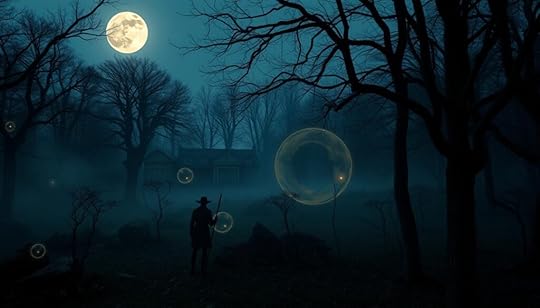
Ultimately, the fascination with paranormal phenomena is multifaceted, weaving together aspects of culture, personal experience, and a collective yearning to confront the shadows of the unknown.
Historical Accounts of Paranormal PhenomenaThroughout history, various historical accounts have emerged documenting experiences related to paranormal phenomena. Diverse cultures across the globe have shared narratives, often influenced by local beliefs and traditions. For instance, ancient civilizations like the Greeks and Romans held strong views on supernatural occurrences, linking them to their deities and spirits that seemed to guide human fate.
The fascination with these unusual experiences intensified during the late 19th century, marked by the rise of spiritualism. This movement ignited a passion for ghost hunting and the quest to communicate with spirits. Many people recorded their experiences, contributing to an extensive catalog of documented supernatural occurrences. Research shows that approximately 85% of books archived in Illinois focus primarily on hauntings and ghostly phenomena, reflecting a significant local interest.
Additionally, collections at institutions like Western Illinois University preserve oral histories of encounters with cryptids such as Bigfoot and the infamous chupacabra. These archives offer unfiltered insights into the cultural heritage and identity of communities, showcasing how local folklore intertwines with historical accounts.
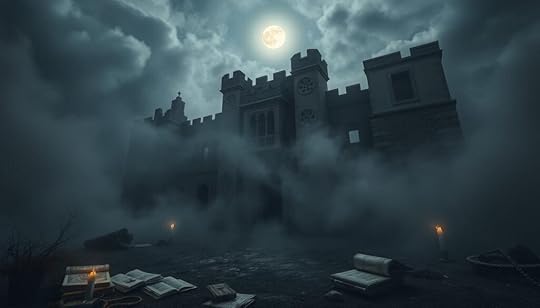
The academic exploration of these narratives involves interdisciplinary approaches, merging sociology, anthropology, psychology, and history. As parapsychology grows, it offers frameworks to scrutinize psychic phenomena and their myriad implications. Unveiling these historical records not only enhances our understanding of human belief but also sparks curiosity about the realm beyond our visible world.
Type of StudyFocus AreaExampleHistorical ResearchDocumented accounts of ancient civilizationsGreek mythology – spirits influencing fateParapsychologyPsychic abilities and phenomenaTelepathy and clairvoyance studiesFolklore StudiesLocal supernatural beliefsBigfoot sightings documented in oral historiesCommon Types of Paranormal PhenomenaParanormal phenomena can captivate the imagination while provoking deep curiosity. Recognizing the various types of paranormal phenomena is key, revealing the intricate tapestry of supernatural activity that many encounter. Some common categories include:
Ghostly Apparitions: These manifestations often involve the spirits of the deceased, sometimes appearing as familiar figures, such as family members or historical figures.Poltergeist Activity: Known as “noisy ghosts,” poltergeists are capable of moving objects, creating disturbances, and causing odd noises in their vicinity, marking them as one of the rarer types of hauntings.Electronic Voice Phenomena (EVP): These sounds, captured through electronic devices, may include voice recordings that aren’t detectable during the actual event but surface later, raising questions about unexplained auditory experiences.Haunted Locations: Sites reported to be haunted often attract individuals eager to explore ghost sightings and supernatural activity, fueling myths and legends.
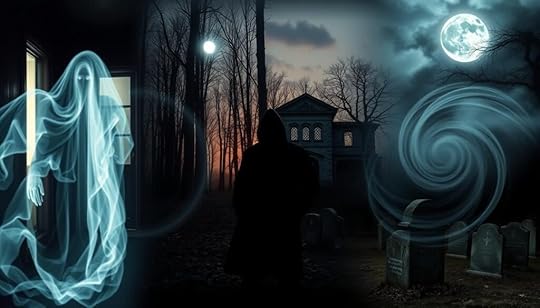
Each of these types of paranormal phenomena offers unique characteristics and interpretations. From the interactive personality ghosts, frequently cited as the most common spirits encountered, to the mysterious orbs, often believed to serve as souls in transition, numerous experiences contribute to a broader understanding of the unseen world surrounding us.
Understanding these categories not only enriches the discourse on supernatural activity but also deepens your awareness of the world around you, inviting you to explore the mysteries that may lie just beyond your perception.
Type of Paranormal PhenomenaCharacteristicsGhostly ApparitionsOften resemble familiar people; associated with emotional or historical ties.Poltergeist ActivityInvolves physical disturbances; perceived as mischievous or aggressive.Electronic Voice Phenomena (EVP)Unexplained voices or sounds captured on recordings; can be chillingly distinct.Haunted LocationsSites with frequent ghost sightings; act as focal points for supernatural research.Understanding Ghost SightingsGhost sightings often evoke a mix of fear and intrigue. These unexplained events manifest in various forms, with apparitions sometimes appearing as shadowy shapes or faintly translucent figures. In a 2021 poll, 41% of American adults expressed belief in ghosts, while 20% reported personal experiences with these phenomena. Over 50 million spirit encounters have been recorded across the United States alone, showcasing the widespread interest in understanding ghost sightings.
As you delve into the world of ghost sightings, consider the cultural interpretations surrounding these encounters. Many people perceive apparitions as the lingering spirits of deceased individuals, sparking questions about the afterlife. The statistical data indicates that approximately three-quarters of Americans hold beliefs in paranormal phenomena, signifying a deep-rooted fascination that transcends mere anecdote.
Personal experiences, while compelling, may not always provide a clear understanding of ghost sightings. Alleged encounters frequently have non-paranormal explanations. Scientists assert that concrete evidence of ghost sightings remains elusive, despite the advent of mobile phone cameras and microphones. Human perception can be misleading, leading to the questioning of the reliability of eyewitness accounts.
Psychological factors also play a crucial role in shaping beliefs in the supernatural. Paranormal believers often display different cognitive patterns than skeptics, potentially enhancing their sensitivity to perceived apparitions. This underscores the need for objective research to evaluate ghost sightings more effectively, moving beyond anecdotal evidence. By analyzing the intricate relationship between belief, perception, and unexplained events, one can gain deeper insights into the phenomenon of ghost sightings.
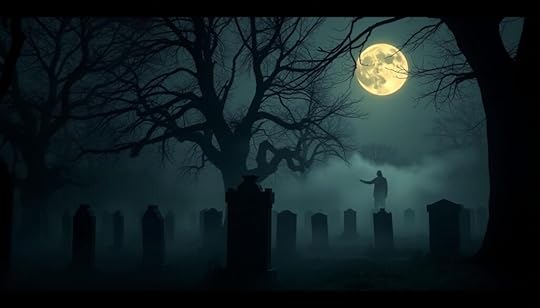
Poltergeists are fascinating manifestations of mischievous supernatural entities known for their chaotic behavior. These phenomena involve the unexplained movements of objects and disruptive noises that often perplex those experiencing them. Reports of items flying through the air or shifting without apparent cause suggest a significant relationship between the physical world and unseen forces. Evidence of poltergeist activity can be found across various countries, including Brazil, Australia, the United States, Japan, and most European nations.
The roots of poltergeist legends trace back to the 1st century, showcasing a long history of encounters. Frank Podmore theorized that many incidents involve children causing disturbances by throwing objects. Such behavior aligns with findings by Joe Nickell, who noted the motivations behind some claims often stem from individuals wishing to create mischief. Unsubstantiated claims, such as the famed Stockwell ghost of 1772 or disturbances at Ballechin House in 1876, further fuel interest in these mysterious happenings.

One intriguing aspect of poltergeists is their strong association with adolescents. Research suggests that these supernatural activities tend to occur in environments populated by young individuals. This correlation combined with claims of entities demonstrating powers like invisibility and the ability to impact physical objects adds a layer of intrigue. Even more perplexing are historical accounts like the Enfield Poltergeist case from the late 1970s, which remains one of the most credible cases documented.
Psychological explanations often come into play when examining poltergeist experiences. Anomalistic psychology highlights factors such as illusions, memory lapses, and even stress from underground water movements as possible causes for reported happenings. The theory of psychokinesis has also been suggested by parapsychologists as a potential explanation for how these supernatural entities exert influence over their surroundings.
AspectDescriptionOrigin of NameGerman words meaning “to make (loud) noise” and “ghost” or “spirit”Common LocationsHomes and places with a high concentration of adolescentsReported AbilitiesFly, become invisible, exert physical forceHistorical ExamplesStockwell ghost (1772), Enfield Poltergeist (1970s)Current ResearchActive investigation of a case in Essex involving over 460 coinsExploring Psychic Phenomena and Their ImplicationsPsychic phenomena captivate your imagination, offering glimpses into extraordinary human capabilities. Abilities such as telepathy, clairvoyance, and precognition invite you to question what lies beyond conventional understandings of consciousness. Numerous studies suggest a significant number of people have encountered unexplained events that hint at these capabilities.
Surveys indicate that around a quarter to a third of individuals report having had at least one precognitive experience, with a notable 75% occurring in dreams. This intriguing connection highlights the profound mystery of psychic phenomena. Research in this field presents compelling data, including a meta-analysis involving over 12,000 participants across many laboratories, revealing a highly significant positive outcome in experiments related to precognition.
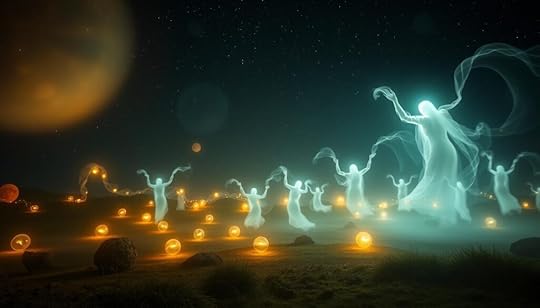
The evolving nature of this research uncovers fascinating insights. For instance, in integral Ganzfeld experiments, a combined hit rate of 32% was achieved, surpassing the 25% likelihood expected by chance. Artistic individuals participating in these studies demonstrated extraordinary abilities, showcasing a success rate of 47%. Such findings raise thought-provoking questions about the extent of mental capabilities and their implications for society.
Experiment TypeParticipantsSuccess RateSignificance LevelForced Choice Precognition50,000+Highly significantOdds 10^24 against chanceGanzfeld Trials3,000+32% (combined)Significantly higher than 25%Artistically Gifted StudentsVaries47%Odds 140 million to oneJuilliard Students2050%Notable successMusician StudiesVaries41%High potentialThe implications of psychic phenomena resonate beyond individual experiences, suggesting potential applications in diverse fields, including military and defense. Historical skepticism, particularly within the United States, contrasts with the earnest approach taken by nations like the Soviet Union. This variance in perspective regarding psychic research points to broader societal implications worth exploring.
As you delve into the mysteries of psychic phenomena, the unanswered questions surrounding their existence continually challenge your understanding of reality and human potential. Embracing this exploration allows you to ponder possibilities that extend beyond the tangible world.
Mysterious Happenings: Anecdotes and EvidenceMysterious happenings often captivate our imagination, driving us to seek answers through personal anecdotes and vivid storytelling. These personal tales range from strange coincidences to encounters with the unexplained that leave us pondering the nature of reality. Many individuals report experiencing events that seem to defy logic, serving as what they consider paranormal evidence.
An interesting display of these encounters occurred in 1973, when police documented nearly 30 minutes of mysterious knocking sounds in a home, sounds that remained impossible to rationalize. This collection of accounts contributes to the tapestry of mysterious happenings that continue to intrigue researchers and enthusiasts alike.
Psychokinesis is a fascinating area within the realm of the paranormal. Notable figures such as Nina Kulagina claimed to possess this ability, conducting experiments that supposedly showcased her power to affect the physical world through thought. Stories from the 1970s describe three teenagers who exhibited psychokinetic abilities. Their intriguing experiences were studied by parapsychologist Yvonne Duplessis, confirming to her that their powers were genuine.
This exploration of personal anecdotes is crucial, as these stories often reflect the human desire to verify our experiences with tangible proof. Encounters, such as those reported by individuals witnessing the Paulding Light, embody this search for understanding. Visitors flock to the site to witness shimmering orbs, with each new sighting adding layers to the discussion around mysterious happenings.
Certain elements of these narratives highlight not just individual experiences but also a collective yearning to connect with our understanding of paranormal phenomena. By analyzing such stories, we enrich our insight into how these mysterious happenings shape personal beliefs and broader cultural narratives surrounding the supernatural.
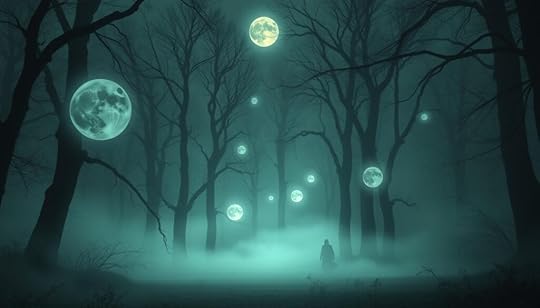
In considering the weight of personal anecdotes, you might find yourself reflecting on your own experiences. Whether they seem trivial or deeply significant, each account contributes to the broader understanding of the enigmatic world surrounding us. Delving into these tales allows us to appreciate the diverse perspectives on the unexplainable, fostering an ongoing dialogue about the connection between human experience and the mysteries that challenge our perceptions of reality.
The Role of Technology in Paranormal ResearchTechnology in paranormal research has significantly transformed how investigators approach supernatural investigation. The advent of electronic devices enables researchers to employ robust tools like EMF meters, infrared cameras, and thermal imaging devices. Among ghost hunters, a high percentage, about 80%, utilize EMF meters as their primary instrumentation for detecting paranormal activity.
Detecting sudden spikes in electromagnetic fields is crucial, as these fluctuations are often considered indicators of a supernatural presence. Approximately 65% of ghost hunting equipment includes Gaussmeters specifically designed to identify subtle shifts in these fields. For capturing voices presumed to be from spirits, EVP recorders have been extensively used, demonstrating a 45% success rate in identifying messages.
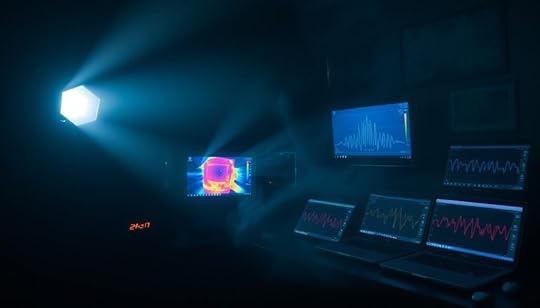
Advanced devices like spirit boxes, which scan AM and FM frequencies, are believed to facilitate communication from the other side. However, these tools can be expensive, with some spirit boxes priced around $200. Despite the investment, researchers remain intrigued, given the significant yet low probabilities of capturing sequential words through these devices.
The integration of technology in paranormal research continues to grow, with artificial intelligence emerging as a game-changer. Applications like GhostTube utilize AI algorithms to analyze vast amounts of data swiftly, uncovering patterns that may not be visible otherwise. This shift highlights a future where AI could enhance the investigative process even further, potentially including virtual reality simulations to replicate paranormal experiences in controlled settings.
With these technological advancements, the field of supernatural investigation is now more sophisticated, enabling enthusiasts to delve deeper into the mysteries of the paranormal while sharing findings through the global network created by the internet and social media.
Scientific Perspectives on Supernatural OccurrencesWhen examining supernatural phenomena, scientific perspectives play a vital role in shaping our understanding. Researchers approach these occurrences with skepticism, often favoring natural explanations. This trend promotes critical thinking and empiricism as individuals seek to debunk claims that lack substantial evidence.
Various studies have shown that experiences attributed to the paranormal often stem from psychological influences or environmental factors. For instance, psychologists have utilized the scientific method to analyze perceived psychic abilities. Initial findings suggested contamination during experiments, such as reflections revealing card faces, prompted stricter protocols to ensure validity in results.
One notable point of contention among researchers involves the ganzfeld effect, a methodology for assessing telepathy. Disagreement between two research teams over the outcomes resulted in a collaborative effort to create a handbook for rigorous experimentation, emphasizing the importance of sound methodology in exploring supernatural explanations.
Belief in paranormal phenomena can frequently correlate with higher fantasy proneness. Those embracing such beliefs often score significantly on tests measuring this trait compared to skeptics. This illustrates how psychological constructs may shape perceptions of the unknown.
AspectBelieversSkepticsFantasy PronenessHigher ScoresLower ScoresExposure to TraumaIncreased LikelihoodDecreased LikelihoodPerception of EventsIllusory CorrelationRational CausationThroughout history, societal stigma and discrimination have influenced beliefs in the paranormal. For instance, the persecution of individuals accused of witchcraft highlights a dark chapter where fear prompted supernatural explanations for unexplained phenomena. Often, these beliefs serve as mechanisms for confronting collective guilt or anxiety, illustrated by narratives surrounding curses and monsters. Such stories offer psychological comfort while addressing societal issues.
Scientific perspectives encourage thoughtful evaluation of extraordinary claims. By applying critical thinking to the realm of the supernatural, we can discern the complex interplay between belief and the psychological forces that shape it. The exploration of these perspectives enriches the discourse on paranormal occurrences, offering meaningful insights grounded in empirical investigation.
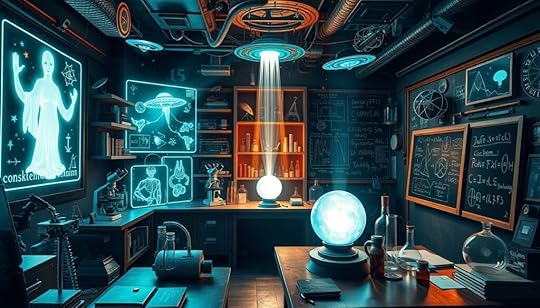
The fascinating divide between believers and skeptics fuels ongoing paranormal debates. Many individuals find themselves on either side of this spectrum, often shaped by personal experiences, cultural influences, and exposure to extraordinary claims. In the United States, approximately 42% of people believe in extrasensory perception (ESP), while 31% accept the possibility of telepathy. This table provides an overview of several beliefs held by the public:
Paranormal BeliefPercentage of BelieversExtrasensory perception (ESP)42%Telepathy31%Clairvoyance26%Haunted houses37% (2005 data)Believers often refer to personal anecdotes to support their supernatural beliefs. They recount experiences that many skeptics argue can be attributed to psychological effects, environmental circumstances, or even memory distortion. Research reveals a link between paranormal beliefs and individual cognitive traits. For instance, paranormal believers frequently exhibit reduced inhibitory control, particularly when tested under cognitive demands. Studies suggest that this incongruence may arise from the way individuals with strong supernatural beliefs process information.
On the flip side, skeptics advocate for a scientific approach to inexplicable phenomena. They argue that many reported experiences can be explained through logical reasoning or demonstrated psychological principles. In fact, skeptical perspectives often highlight that much of what believers experience can stem from cognitive biases or misunderstandings of causality.
This ongoing clash between believers vs. skeptics underscores the complexities of human perspective towards unexplained events. While believers cling to the notion of supernatural forces at play, skeptics call for critical examination and empirical scrutiny. In the end, this debate not only enriches our understanding of paranormal phenomena but also reflects broader human tendencies regarding cognition and belief.
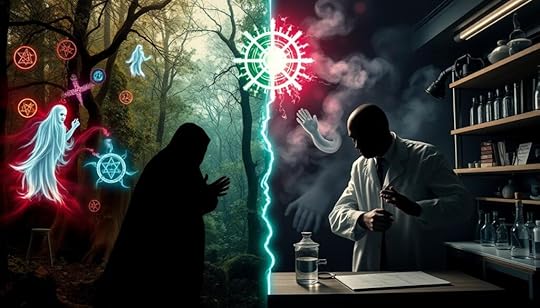
Across the globe, haunted locations capture the imagination and curiosity of those intrigued by the supernatural. These places, steeped in history and mystery, serve as prime destinations for those interested in paranormal tourism. From eerie battlefields to ancient castles, each site offers a unique glimpse into the world of ghostly encounters.
Some of the most notorious supernatural hotspots include:
Raynham Hall in England, famed for the ghostly “Brown Lady,” draws visitors eager to experience reported paranormal activity.Bhangarh Fort in India is considered one of the most haunted places in the country, attracting thrill-seekers and ghost hunters alike.Poveglia Island, off the coast of Italy, is infamous for its haunting past as a quarantine zone and psychiatric hospital.Ancient Ram Inn in England, built upon pagan burial grounds, is said to host over 20 spirits.Port Arthur in Tasmania, a former penal colony, is known for its ghostly activities and dark history.RMS Queen Mary, now a hotel, harbors numerous ghost sightings from its past as an ocean liner.Lizzie Borden Bed and Breakfast Museum in Massachusetts witnesses strange sightings linked to its famous former resident.The Stanley Hotel in Colorado, which inspired “The Shining,” is reputed for its supernatural occurrences.Visitors to these haunted locations often seek not only thrills but an understanding of the stories behind these supernatural hotspots. Each site reveals a slice of human history interwoven with tales of the unexplained, offering shared experiences that connect tourists across cultures and timeframes.
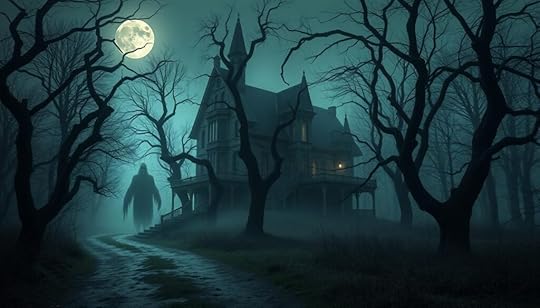
Paranormal phenomena offer intriguing insights into otherworldly experiences that captivate the imagination. These encounters often involve ghost sightings, psychic manifestations, and a variety of unexplained events, each presenting an opportunity to explore dimensions of existence beyond typical human understanding. The allure of these incidents fosters spiritual connections, prompting many individuals to search for meaning in life and the universe.
Significant statistical data unveil treacherous sites where paranormal activity intertwines with tragic histories. For instance, over 500 deaths have occurred at Lake Lanier in Georgia, where tales of grief and loss have led many to speculate about lingering spirits. Similarly, Pyramid Lake in Nevada is steeped in lore, notably the Water Babies myth, which depicts restless spirits from ancient times. These accounts resonate deeply, as they reflect a common theme of unresolved sorrow intertwined with the supernatural.
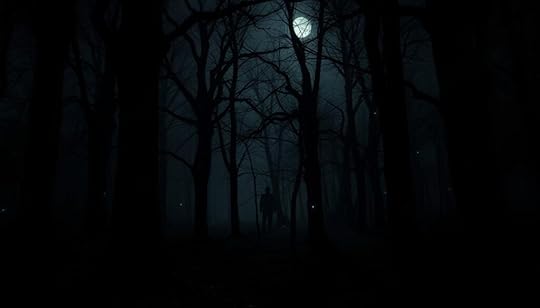
The mystical studies of doppelgangers, time slips, and more have led enthusiasts to question the boundaries of reality. Personal narratives often recount frightening encounters with cryptids or vivid paranormal experiences that compel individuals to rethink their perspectives on existence. This intersection of the known and the unknown fuels humanity’s enduring curiosity, driving a quest for spiritual connection and comprehension of the otherworldly.
The Impact of Social Media on Paranormal InvestigationSocial media in paranormal investigation has reshaped the way enthusiasts document and share their experiences. You can find vibrant online communities dedicated to ghost hunting, where members exchange stories, evidence, and research methods. Platforms such as Facebook, Instagram, and dedicated forums foster discussions that amplify voices in the world of the supernatural.
Through social media, individuals can showcase their ghost hunting adventures, often leading to viral content that captivates wider audiences. YouTube serves as a treasure trove of videos depicting investigations, with many creators sharing real-time experiences in haunted locations. These visuals contribute to a growing fascination with the unknown and invite users to engage more deeply with these phenomena.
Active participation in these online communities offers significant benefits. Research suggests that engaging with social platforms boosts well-being, especially when sharing and gathering paranormal evidence. Conversely, lurking without participating has been shown to result in lower satisfaction. This dynamic illustrates the power of community support in sustaining interest in paranormal investigation.
On the flip side, misinformation can easily spread in these digital realms. Just as rumors about challenges like the “Momo” and “Blue Whale” games circulated without evidence, the paranormal community faces challenges in distinguishing genuine investigations from sensationalism. Understanding cognitive biases such as availability cascade becomes important for critical thinkers navigating discussions in online groups.
As social media continues to evolve, its impact on the field of paranormal investigation remains profound. You, as a seeker of the supernatural, can utilize these platforms to gain insights, share findings, and engage with like-minded individuals passionate about ghost hunting and exploring the mysteries of the unknown.
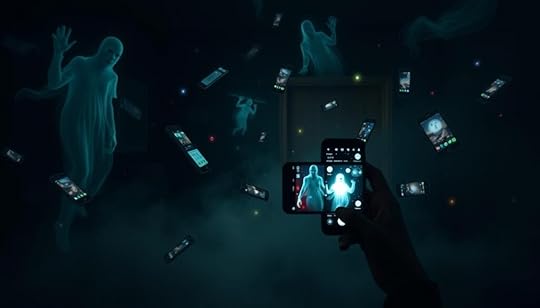
Cultural perspectives play a crucial role in how individuals understand and interpret supernatural beliefs. Indigenous elders, for instance, serve as excellent storytellers, preserving knowledge through narratives that connect their communities to the past. This storytelling tradition intertwines the spiritual realm with their histories, establishing a unique foundation for paranormal cultural significance.
In many Indigenous cultures, the spiritual world is intrinsic to daily life, leading to a stark contrast with dominant Christian viewpoints. Mainstream interpretations of supernatural occurrences often view them through a lens of good versus evil, which can overshadow diverse cultural understandings. Notably, this approach is increasingly challenged by paranormal investigators such as Greg and Dana Newkirk, who emphasize curiosity towards haunted objects instead of succumbing to fear-driven narratives.
Pop culture continues to fuel interest in the supernatural, as seen in films like the Annabelle series and exhibits like Zak Bagans’ Haunted Museum. These portrayals influence public perception, often painting ghosts as malevolent forces. Such representations can lead to fear surrounding the unknown and shape personal beliefs about the existence of spirits.
Paranormal experiences often invoke profound shifts in understanding, showcasing how personal background and cultural history shape perceptions. As you explore different narratives about the afterlife, remember that beliefs across cultures vary significantly. Understanding these cultural perspectives invites richer dialogue about paranormal phenomena, encouraging a more informed and open-minded approach to the mysteries that surround us.
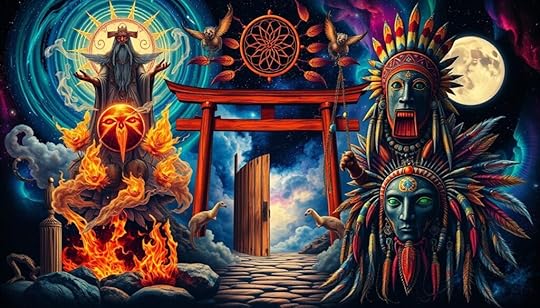
In summing up our exploration of the mystery of the supernatural, it’s clear that understanding the unknown has generated both fascination and debate over the years. The research conducted by parapsychologist Jessica Utts has presented compelling evidence that paranormal phenomena such as extra-sensory perception and precognition occur more frequently than random chance would suggest. This statistical insight into human potential offers a glimpse into the complexities of our consciousness and time, indicating that further study is essential.
As you delve into these phenomena, consider the implications of events like the Stargate Project, which highlighted potential psychic functioning previously funded by military agencies. The coupling of parapsychology and military interest illustrates the speculative nature of these supernatural claims, in addition to underscoring their recognition as part of our cultural framework. While skeptics may remain unconvinced, the incidents reported and investigated remind us of the tantalizing possibility that there is more than meets the eye.
Ultimately, the conclusion on paranormal phenomena encourages an open-minded approach. By acknowledging the richness of personal experiences and scientific inquiry, you invite a broader understanding of both the mystery of the supernatural and the mysteries that lie just beyond the boundaries of human perception. This journey into the unknown not only enhances our grasp on the physical world but also fosters curiosity about the intricacies surrounding our existence.
FAQWhat are paranormal phenomena?Paranormal phenomena refer to mysterious and unexplained events that challenge our understanding of the natural world, including supernatural occurrences like ghost sightings and otherworldly experiences.
Why is there a fascination with the supernatural?The fascination with supernatural activity stems from humanity’s innate curiosity about the unknown, particularly about life after death and the possibility of psychic phenomena that lie beyond ordinary experience.
Can you explain the most common types of paranormal phenomena?Common types include ghost sightings, poltergeist activity, Electronic Voice Phenomena (EVP), and haunted locations, each showcasing unique unexplained events.
What do we mean by ghost sightings?Ghost sightings typically involve apparitions perceived as shadowy figures or translucent shapes believed to be the spirits of deceased individuals, prompting intrigue and fear about the nature of life after death.
What are poltergeists?Poltergeists are often described as mischievous spirits associated with unexplained movements of objects and disruptive noises, creating chaotic experiences in various environments.
What are examples of psychic phenomena?Examples of psychic phenomena include abilities such as telepathy, clairvoyance, and precognition, often demonstrated by mediums and psychics who claim to connect with the spiritual realm.
What constitutes mysterious happenings?Mysterious happenings include personal anecdotes of unexplained events, ranging from spontaneous healings to uncanny coincidences that defy rational explanation.
How has technology influenced paranormal research?Advances in technology have allowed paranormal researchers to use tools like infrared cameras, EMF detectors, and thermal imaging devices to detect supernatural activity and collect evidence for investigations.
What are scientific perspectives on paranormal phenomena?The scientific community often approaches supernatural occurrences with skepticism, attributing many experiences to natural causes and emphasizing the importance of critical thinking and empirical investigation.
What is the debate between believers and skeptics regarding the paranormal?The debate centers on whether unexplained events can be genuinely supernatural or if they can be attributed to psychological or environmental factors, with each side presenting their perspectives.
Where can I find famous haunted locations?Famous haunted locations include old prisons, battlefields, and historic homes that attract those interested in paranormal tourism and investigations of the supernatural.
How does the exploration of paranormal phenomena serve as a bridge to the otherworldly?Exploring paranormal phenomena provides insights into realities beyond our comprehension, offering the possibility of a deeper connection to the spiritual and highlighting humanity’s quest for understanding.
What role does social media play in paranormal investigation?Social media has created vibrant online communities where enthusiasts share experiences, evidence, and resources, greatly influencing the way paranormal investigations are conducted and discussed.
How do cultural perspectives impact our understanding of the supernatural?Cultural perspectives shape beliefs about supernatural phenomena, influenced by history, religion, and folklore. Understanding these variances allows for enriched discussions and greater appreciation of their significance.
Eerie Encounters: Unexplained Mysteries Unveiled
Have you ever felt a chill running down your spine as you walked alone at night? Perhaps you’ve caught a glimpse of something out of the corner of your eye, only to turn and find nothing there. These unsettling moments spark a curiosity deep within us, urging you to explore the realm of eerie encounters and unexplained mysteries. With countless tales woven into the fabric of our culture, spooky stories challenge the boundaries of what we understand as reality. You’ll find that there’s so much more to these occurrences than mere entertainment; they offer a glimpse into the paranormal phenomena that surround us daily.
In this exploration, you’ll delve into the captivating world where shadows dance and inexplicable events unfold. From spine-tingling narratives shared in the eerie realm of podcasts to chilling first-hand accounts of the supernatural, prepare yourself for a journey that awakens both fear and wonder. Let’s unveil the darkness together, for within these eerie encounters lies a profound connection to the unknown that beckons to each of us.
Key TakeawaysEerie encounters often ignite a blend of fear and curiosity.Spooky stories serve as a mirror reflecting cultural beliefs and fears.The paranormal phenomena provoke questions about the boundaries of our reality.Podcasts like “Unexplained Encounters” shed light on captivating true stories.Many unexplained mysteries relate to personal, chilling experiences.The Fascination with Eerie EncountersThe human attraction to stories of eerie encounters stems from a deep-seated curiosity about the unknown. This fascination often leads to a relentless pursuit of understanding supernatural sightings that challenge our perception of reality. Psychological factors play a crucial role in this intrigue, as people tend to share experiences that evoke fear and suspense. Such narratives allow participants to explore their own beliefs and the boundaries of reality.
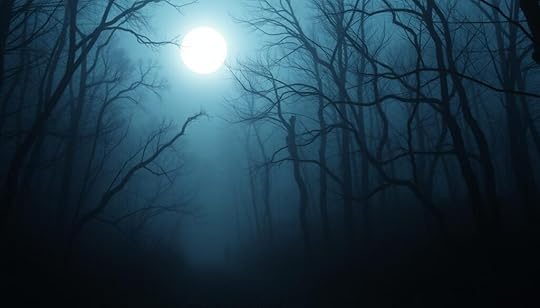
Events like the Close Encounters of The Eerie Kind, hosted by Mostly Ghostly, demonstrate this interest in action. Attendees gather not just to share stories, including those associated with Castle Loch and the A75 Ghost Road, but to engage in discussions that provoke thought and feeling about the supernatural. The connections formed through these eerie encounters often lead to deeper conversations about existence itself.
The phenomenon of the eerie also brings cultural significance, as exemplified by various maritime mysteries like the legend of the Flying Dutchman and the haunting tale of the Ghostly Schooner Jenny. These stories captivate imaginations and reveal the human psyche’s inclination towards the mysterious. Everyone can contribute to this community, sharing experiences and exploring the unexplained together.
Understanding Unexplained MysteriesUnexplained mysteries captivate our imagination, drawing us into a world where reality meets the unknown. Eerie phenomena, such as ghost sightings and cryptid encounters, challenge our understanding of the natural world. These experiences often defy logic and scientific explanation, encouraging individuals to delve deeper into paranormal research and explore their significance.
Consider the plethora of accounts, with two dozen tales of unexplained phenomena documented in the book “Eerie Encounters: Unexplained Mysteries Unveiled.” This collection features stories from New England states like Massachusetts and Maine, reflecting the varied nature of eerie encounters that can occur across different cultures. Customers have rated the book a solid 4.4 out of 5 stars based on 74 ratings, highlighting its appeal to those fascinated by the macabre.
Understanding how these mysterious experiences affect individuals provides insight into their impact on culture and belief systems. Reports of hauntings in iconic locations, such as the Whaley House—widely regarded as “America’s most haunted house”—illustrate the intense connection people have with these eerie phenomena. Paranormal research continues to evolve as enthusiasts and scholars seek to uncover the truth behind such experiences and enhance the dialogue surrounding them.
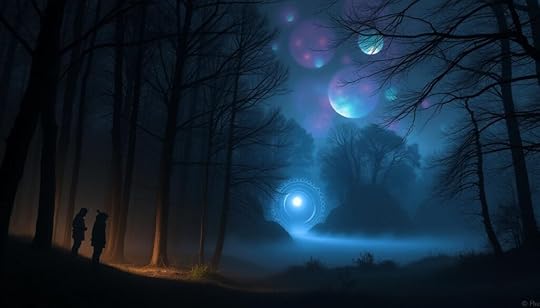
Spooky stories have carved out a significant place in cultures around the world. These narratives, deeply rooted in folklore, serve various purposes. They provide entertainment, impart moral lessons, and foster community bonds. The cultural significance of these tales transcends time and geography, allowing them to remain relevant in modern society.
For instance, the 19th-century Venezuelan legend of La Sayona illustrates how folklore can reflect societal values. This tale depicts a woman driven to tragic actions based on misguided beliefs about her husband’s fidelity. Similarly, the story of headless horsemen in German folklore, particularly from Dresden, highlights themes of justice and consequence. These stories not only entertain but also embed moral lessons within cultural narratives.
Another compelling example is the Italian legend of Il Mostro di Firenze. First sighted in the mountains of Florence in 1974, this creature became a symbol of fear for young couples during the new moon. The varying themes in spooky stories reflect cultural anxieties and illustrate how folklore can evolve over time.
When discussing the role of spooky stories, it’s essential to consider their office in education. They can be powerful tools in instructional activities, helping students delve into themes and higher-order thinking skills. By exploring this genre, teachers can facilitate understanding of cultural significance while simultaneously engaging students in a unique way.
The emotional journey elicited by these narratives often leads to shared experiences, further solidifying community ties. When children share ghost stories, they can explore their fears and learn about different cultures, creating a sense of unity. Reading spooky stories as a family strengthens bonds, making these tales invaluable for fostering connections within the home.
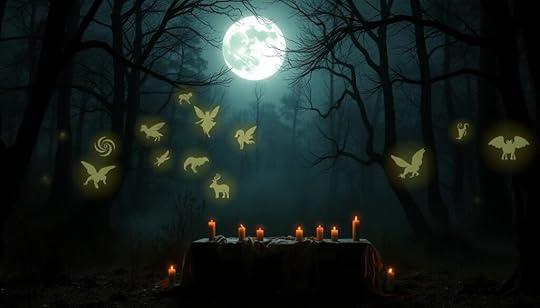
Paranormal phenomena have long captivated your imagination, drawing interest from people across diverse cultures. As you explore the realm of the unexplained, you encounter stories that feature ghosts, apparitions, and eerie experiences that challenge the very fabric of reality.
One notorious case, the Amityville Horror, occurred in 1975 when the Lutz family fled their home, insisting they endured torment from demonic forces. Such accounts lead you to ponder the authenticity of these unexplained encounters that haunt our collective psyche.
The Bell Witch case, rooted in Tennessee during the early 19th century, further emphasizes the chilling effects of a malevolent presence. The Bell family endured disembodied voices and physical attacks, fueling the legend that continues to evoke fear and intrigue today.
Across the ocean, the Enfield Poltergeist case from the 1970s haunted the Hodgson family with violent furniture throwings and levitations, reinforcing the idea that paranormal phenomena could disrupt daily life in unimaginable ways.
Historic sites enhance this fascination with their ghostly tales. The Tower of London, with over 900 years of history, has become notorious for sightings of Anne Boleyn and the young princes believed to have met a tragic fate within its walls. This narrative invites you to contemplate long-since departed souls lingering in the shadows.
As you dive deeper into this realm, consider the Myrtles Plantation in Louisiana, which claims the presence of a ghost named Chloe who still wanders the property, tirelessly connected to her tragic history. Such eerie experiences resonate with those who believe in the supernatural.
Furthermore, the RMS Queen Mary in Long Beach, California, recounts its past as a luxury liner filled with spectral children and phantom parties, solidifying its place as one of North America’s most haunted venues.
Ultimately, whether drawn to stories from Leslie Rule’s “Haunted in America” or tales surrounding the infamous Aokigahara Forest, you find that the exploration of unexplained encounters continues to reveal layered truths about our existence and the unknown. Each story adds depth to the already rich tapestry of paranormal phenomena waiting to be discovered.
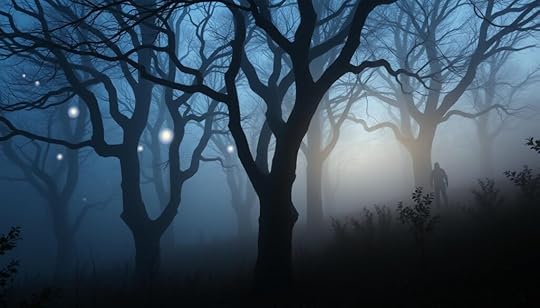
Mysterious occurrences often captivate our imagination, especially when they emerge from real life stories. Accounts from individuals who’ve encountered the inexplicable can evoke a range of emotions, from fear to fascination. These narratives serve as validation for the strange and often unexplainable events that some experience, making you wonder what lies beyond our comprehension.
In healthcare settings, stories abound of encounters with deceased patients. For instance, numerous healthcare workers recount experiences with spirits of patients who have passed on. One nurse described an incident where she saw a deceased baby in a bag, which left her in emotional turmoil. Such chilling encounters highlight the unsettling nature of these mysterious occurrences.
Another anecdote describes a haunt named Dr. Luisitti, a doctor who reportedly continued his work after taking his own life. His presence is felt as a lingering energy within the medical environment, leading to many unexplained events. One student even observed a deceased patient materializing in the reflection of a mirror, deepening the intrigue surrounding hospital hauntings.
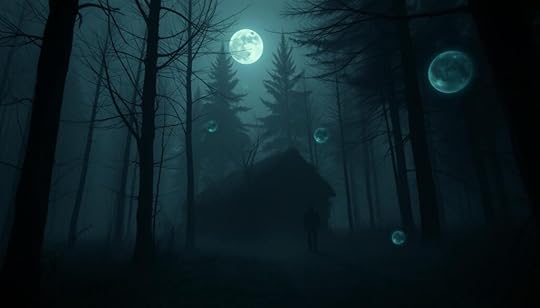
Moreover, peculiar happenings extend beyond individual tales. For instance, there are reports of call lights activating without an apparent cause, often coinciding with the removal of bodies. Evidence of strange serial phenomena continually surfaces, leading to a growing collection of unexplained events documented by witnesses.
Reports of ghostly queues in Japan following the devastating 2011 tsunami.A chilling phone call from a deceased boyfriend, experienced by Simma Lieberman in the late 1960s.Instances of paranormal activity during the lockdown periods of 2020, with many individuals documenting ghostly encounters.Survivors of the tsunami reported hearing disembodied voices, igniting further intrigue in real life stories.The accumulation of these narratives not only validates individual experiences but also establishes a broader understanding of mysterious occurrences in various contexts. As you delve into these unexplained events, remain open to the possibility that many such stories could reveal more about the world around us than we can currently comprehend.
Eerie Encounters: Stories that Will Send Chills Down Your SpinePrepare yourself for spine-tingling narratives that bring real-life accounts of eerie encounters to the forefront. Whether through chilling first-hand accounts shared by those who lived through them or guest contributions from the Unexplained Encounters Podcast, these stories immerse you in the inexplicable. Each tale reveals the intersection of reality and the supernatural, highlighting how close such experiences can feel.
First-Hand Accounts of Eerie EncountersOne gripping account comes from a night filled with supernatural events that forever changed the protagonist. This single day turned into a harrowing experience marked by encounters with colossal dogs that exhibited fierce and menacing behavior. A ceremony at a mosque involved several friends of the uncle, where powerful incantations were articulated in hopes of banishing the malevolent spirit possessing their cousin. The successful exorcism brought dramatic physical reactions: windows and doors slammed shut, signaling the force of the spiritual battle within. A lock of hair was enclosed in a bottle during the ritual, ensuring the malevolent presence would not return, leaving an everlasting imprint of fear and uncertainty on the protagonist’s mind.
Guest Contributions from the Unexplained Encounters PodcastListeners of the Unexplained Encounters Podcast have shared their own eerie experiences, enriching the collection of guest contributions that evoke a sense of dread and intrigue. Several stories include ghostly entities communicating with the living, often leaving unresolved feelings in their wake. The podcast’s audience reflects diverse locations, showcasing common themes across different cultures. As the tales unfold, they invite you to delve deeper into the world of the paranormal, driving home the notion that these eerie encounters are not just figments of imagination, but shared human experiences.
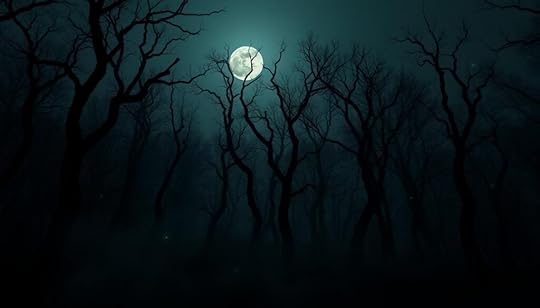
The United States is home to a wealth of supernatural sightings that spark curiosity and intrigue. From haunted houses to eerie forests, many locations have become notorious for their ghostly encounters. In Texas, for example, a remarkable 6,845 paranormal activities have been reported since 2005, making it a leading hub for US mysteries. This southern state’s reputation is not just a matter of chance; it is steeped in legends and accounts that draw visitors seeking to witness the unexplained.
California follows closely behind with 6,444 reported sightings, positioning it as another hotspot for those fascinated by the paranormal. Ohio ranks third, showcasing 2,555 documented instances of supernatural phenomena. States such as Michigan and Pennsylvania further enrich the country’s haunting tapestry, with tales from places like Eastern State Penitentiary and Michigan’s haunted lighthouses captivating many who dare to explore.
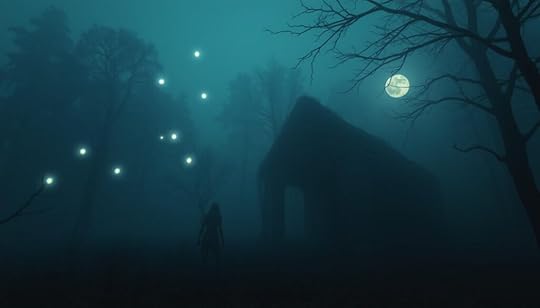
Oklahoma, celebrated for its haunted military forts, adds to this realm of ghostly encounters, creating a distinctive flavor of paranormal activity that includes unique stories like that of a demon named Zozo. New York City, particularly Manhattan, speaks to another side of the supernatural, with real ghost stories emerging from famous sites such as the Morris-Jumel Mansion. People often share their own supernatural sightings, revealing personal experiences that validate the existence of the unexplained.
Interestingly, a significant portion of the American population embraces these US mysteries. Studies reveal that 67% of individuals believe they have had at least one paranormal experience, while a similar number report having felt an otherworldly presence. The commonality of these experiences points to a deep-rooted fascination with the supernatural, making the exploration of these sightings all the more compelling.
Your quest to uncover these mysterious tales may lead you to new locations where the line between reality and the supernatural blurs, inviting both wonder and speculation.
Ghostly Encounters: The History Behind the HauntingsThe exploration of ghostly encounters often intertwines with the history of hauntings, revealing deeper layers to these eerie tales. In places like Salina, Kansas, reported hauntings draw visitors intrigued by the stories woven into the fabric of local culture. Notable locations such as Central High School and Kansas Wesleyan University stand out for their spine-chilling narratives, inviting explorers to uncover the past.
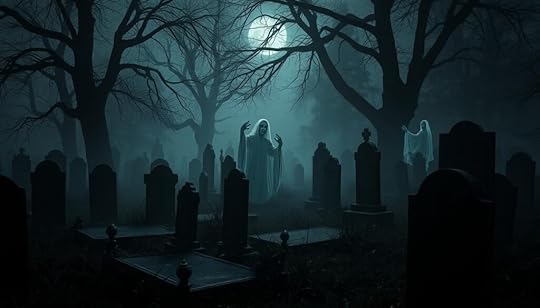
The cultural significance of these hauntings lies in the anecdotes shared by those who visit. Historic sites like a cemetery south of Salina are said to be home to playful spirits, engaging in ghostly games of hide and seek. Other eerie spots include a bridge linking Salina and Wichita, a remote road near Gypsum, and the remnants of an asylum east of town, where witnesses claim to hear a woman’s voice echoing through the spaces.
Among these tales, the Custer House in Ft. Riley tells a hauntingly beautiful story of a teddy bear believed to move of its own accord. Its history traces back to a little girl who tragically succumbed to cholera in the nineteen hundreds, further enriching its ghostly narrative.
For those fascinated by the history of hauntings, exploring these locations can be a thrilling adventure. Engaging in investigations, ghost tours, or historical walks during the Halloween season enhances the overall experience. Notably, readings from books like “Haunted Kansas: Ghost Stories and Other Eerie Tales” by Lisa Hefner Heitz can provide a valuable background to bolster your exploration. Just remember to respect the historical significance of these sites, as some may reside on private property, requiring permission prior to visiting.
Such explorations not only connect individuals with ghostly encounters but also foster a greater understanding of the emotional narratives tied to these experiences. As you delve into the stories behind hauntings, consider how different perspectives shape the cultural significance of these ghostly tales throughout history.
Unexplained Events That Defy LogicThe realm of unexplained events often challenges our understanding of logic and reason. Across countless anecdotes, eerie happenings and mysterious occurrences defy traditional explanations, leaving you questioning the very fabric of reality.
In a vibrant city with about 125,000 residents, stories of bizarre occurrences proliferate. The broader metro area, home to roughly 200,000 individuals, nurtures an environment rich in strange phenomena. A group of individuals has shared unsettling experiences, including a specific phone number that only certain family and friends recognized, resulting in curious conversations about the nature of such strange coincidences.
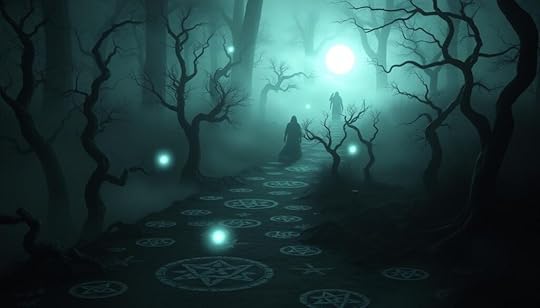
Online forums, like Reddit, showcase a variety of accounts that spark intrigue and invite skepticism. One user recounted an astounding tale of a friend who claimed to see them in two different locations, separated by 200 kilometers, simultaneously. Another individual described weeks of unease at a pedestrian crossing, culminating in a life-altering accident. Such narratives question the boundaries of perception and rational thought.
“The strange events in my life always seem to happen when I least expect them.”
Additional stories create a tapestry of the inexplicable. One person mentioned hearing their father snoring, only to discover an empty room. An eerie encounter about a deceased aunt capturing an oddly shaped flash hints at a possible connection between the living and the departed. These mysterious occurrences illustrate how feelings of fear and confusion intertwine, creating an atmosphere ripe for exploration.
Occurrence TypePercentage of StoriesDescriptionUnexplained Sightings33.3%Figures or objects appearing with no logical reasoning.Premonitions33.3%Intuitive experiences that seem to predict future events.Inexplicable Disappearances33.3%Items vanishing from familiar settings without explanation.Supernatural Encounters50%Experiences occurring in everyday environments, such as homes or restaurants.Daylight Events50%Unexplained phenomena occurring in broad daylight, defying common beliefs.These eerie encounters shed light on the vast unknown that exists alongside our everyday lives. Unexplained events challenge your understanding and encourage you to embrace the possibilities beyond the confines of accepted logic.
Unsettling Experiences: What You Need to KnowUnsettling experiences, such as eerie encounters, can leave profound marks on your mental health and overall well-being. Understanding the psychological impact of these events helps to shed light on the emotional turmoil that individuals might go through after witnessing something inexplicable. These encounters often lead to heightened anxiety and a sense of unease that lingers long after the initial event.
The Psychological Impact of Eerie EncountersMany individuals report that their unsettling experiences alter their perceptions of reality. The fear associated with eerie encounters can trigger a fight-or-flight response, affecting both mental and physical health. Below are some noteworthy insights into the emotional repercussions linked to unsettling experiences:
Increased anxiety: Many find themselves feeling more anxious in similar environments.Privacy avoidance: Individuals may steer clear of locations that remind them of their unsettling encounters.Sleep disturbances: Nightmares connected to these experiences can disrupt sleep patterns.Altered perceptions: Moments that once felt familiar can start to evoke feelings of dread.For example, one individual recounted an unsettling experience in a secluded area, where the presence of what seemed like an unexplained figure caused intense fear. This incident not only impacted their ability to return to that place but also affecting their daily life through persistent anxieties.
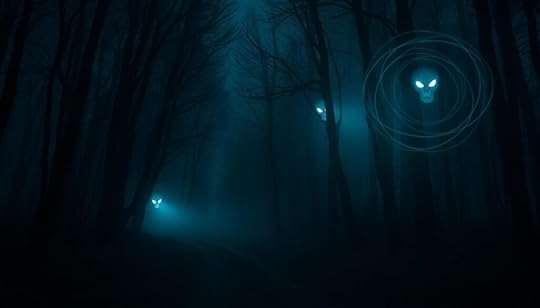
Such psychological impacts resonate with others too. Various accounts show that people often relate to nervous feelings when revisiting areas associated with their unsettling experiences. This ongoing psychological impact becomes a talking point, demonstrating that eerie encounters can have lasting effects well beyond the initial event.
Aspect of Psychological ImpactDescriptionIncreased AnxietyHeightened forward anxiety related to occurrences in similar settings.NightmaresRecurring dreams that reflect unsettling experiences, impacting sleep quality.Location AvoidanceA noticeable tendency to avoid places linked with unsettling encounters.Distorted RealityChanges in perception that lead to feelings of constant unease.Understanding these psychological impacts fosters empathy for others who share their eerie encounters. Acknowledging their experiences serves to validate their feelings and effects, creating room for supportive discussions around the challenges following unsettling experiences.
National Forests and Their Eerie ReputationNational forests carry an eerie reputation that intrigues many adventurers. These vast landscapes, rich in biodiversity, often conceal countless mysteries waiting to be uncovered. Visitors to these natural wonders frequently report strange occurrences that defy explanation, enhancing their allure.
One significant factor contributing to the eerie reputation of national forests is their remoteness. Areas such as the Shawnee National Forest, with its haunted hiking trails and locations like Cave-in-Rock, provide the perfect backdrop for ghost stories and urban legends. The historical significance of these forests, mixed with tales of pirates and local folklore, leaves many questioning what truly lies within their depths.
Throughout different national forests, various mysteries have captured the imaginations of those eager for a thrill. Reports from Yosemite National Park include spine-chilling occurrences, such as a disembodied cry that echoes through Grouse Lake. In contrast, Yellowstone National Park is home to ghostly apparitions, notably the headless bride wandering through the Old Faithful Inn.
An interesting table summarizes some of the notable national forests known for their eerie reputation:
National ForestEerie ActivitiesNotable LegendsShawnee National ForestHaunted hiking trails, glow orbsHome of Big Muddy MonsterYosemite National ParkSupernatural sounds, haunted waterfallsLegends of evil windsYellowstone National ParkGhost sightings, mysterious criesGhostly bride at Old FaithfulRandolph ForestHauntings, feelings of dreadWas haunted trailCameron ParkParanormal hotspotsWitch’s Castle
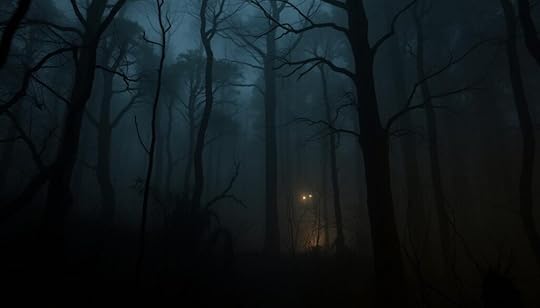
The intertwining of nature, myth, and mystery within national forests creates a captivating experience. For many, visiting these locations offers the chance to encounter the unexplained, inviting them to explore while respecting the natural beauty surrounding them.
How to Share Your Own Eerie EncounterEngaging with the community around eerie encounters can be an incredibly rewarding experience. If you have a personal story you’d like to share, there are various platforms available where your voice can be heard. The Unexplained Encounters Podcast, for instance, is an inviting place for listeners to contribute their chilling tales, fostering audience engagement through shared experiences.
Consider these steps to share your eerie encounter:
Choose Your Platform: Select a medium that resonates with you. Whether it’s a podcast, blog, or social media, find the right fit for your story.Be Descriptive: When recounting your personal stories, include vivid details that convey the emotions and atmosphere of your experience.Engage with Others: Read and respond to other encounters. Engaging with fellow enthusiasts can enrich your own understanding and inspire new contributions.Stay Open-Minded: Every story brings a unique perspective. Embrace diverse narratives, as they can spark fascinating discussions.Many individuals have shared their own experiences with the Michigan Dog Man, a local legend dating back to 1887. For example, a listener recounted their eerie encounter while deer hunting in Everett, Michigan, where they felt a dark presence lurking in the woods. This chilling story highlights the power of sharing personal experiences, especially when it aligns with the legend’s pattern of sightings every decade.
As you prepare your eerie encounter for sharing, remember that your voice contributes to a larger conversation about the unexplained. Get involved, and let your story resonate with others who seek to explore the mysteries that surround us.
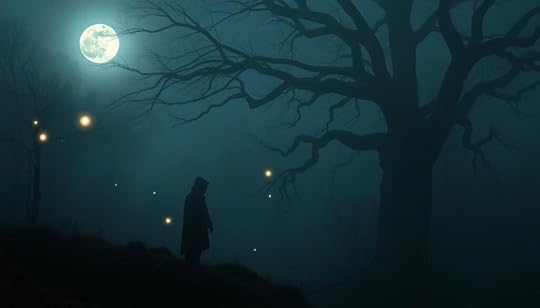
The science of the paranormal is an intriguing blend of skepticism and curiosity. Various investigations attempt to validate or debunk the experiences surrounding ghost encounters. In a 2021 poll, 41% of American adults stated they believe in ghosts, while 20% reported personal experiences with these mysterious entities. This implies over 50 million spirit encounters occurring across the U.S. alone, showcasing a significant cultural fascination with the supernatural.
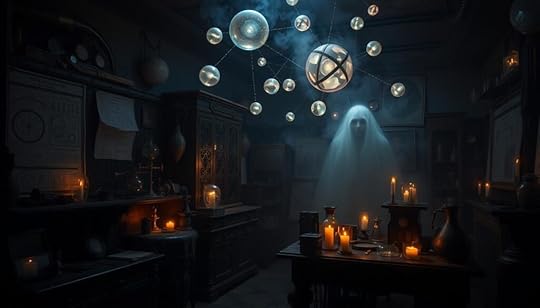
While numerous recordings of ghostly encounters exist, many suffer from poor lighting and faulty equipment, jeopardizing the credibility of the evidence presented. Ghost hunting devices, although they seem scientific, are often criticized for lacking empirical validation. Anecdotal experiences can lead to misleading conclusions, primarily due to the limitations of human perception.
Research highlights various alternative explanations for alleged hauntings, advocating for objective analysis. Factors such as environmental conditions, emotional responses, and cultural beliefs significantly influence perceptions of ghostly encounters. For example, sleep paralysis can cause individuals to feel awake yet unable to move, sometimes prompting hallucinations of figures and creatures.
Studies have demonstrated how the brain’s top-down processing fills gaps in perception. Phenomena like pareidolia, where individuals identify faces in random patterns, illustrate the mind’s tendency to impose recognizable shapes onto ambiguous stimuli. One notable study by David Smailes involved participants identifying faces in random noise, revealing a strong correlation between hallucination-like experiences and this perception.
As the pursuit to understand the science behind the paranormal continues, it emphasizes the importance of critical thinking. While many remain captivated by ghostly tales, an open-minded approach encourages inquiry beyond mere belief.
Popular Eerie Encounter Podcasts to Tune IntoIf you’re a fan of spine-chilling tales and supernatural discussions, the world of eerie encounter podcasts offers a treasure trove of captivating content. Many shows delve deep into personal stories and unexplained phenomena, making them perfectly suited for your next recommended listening experience. Here are some popular podcasts to consider:
The Last Podcast On The Left: This show combines comedy with horror, attracting a huge following of 151.9K on Twitter and 299.6K on Instagram. It covers various spooky topics while engaging with an enthusiastic audience.Lore: Focusing on the darker sides of history, Lore has 81.3K Facebook followers and 67K on Twitter. Its storytelling approach brings to life eerie narratives that resonate with fans of the supernatural.The Real Ghost Stories Online Podcast: With a solid following of 69.5K on Facebook and 16.3K on Twitter, this podcast allows listeners to share their ghost stories, creating a chilling community for eerie encounter enthusiasts.The Real Paranormal Activity Podcast: This show invites listeners into the realms of the unknown, boasting 10.2K Facebook followers and 9.3K on Twitter. It’s perfect for anyone looking to experience unsettling narratives.Oh No, Ross and Carrie Podcast: With 28.3K Facebook fans and 14.5K on Twitter, this podcast explores the bizarre and the paranormal with relatable hosts who share their eerie experiences.Ground Zero Podcast: Known for its engaging storytelling, this podcast has a following of 108.8K on Facebook and 17.8K on Twitter. It covers a vast array of supernatural discussions that intrigue listeners.Night Vale Podcast: With a remarkable 341.4K followers on Facebook and 331.4K on Twitter, this podcast presents surreal, eerie narratives that keep its audience entranced.The Grave Talks Podcast: This show features interviews and personal accounts of eerie encounters, with 20.7K Facebook fans and 16.3K on Twitter.Uncanny: Currently in its fourth season, this podcast dives into eerie themes with a fresh perspective.The Paracast: As one of the longest-running radio shows in the genre, it has nearly 1,000 episodes dating back to 2006, offering a wealth of supernatural discussions.The NoSleep Podcast: An award-winning anthology series that began its twenty-first season in 2024, it has released over 600 episodes, making it a great choice for horror enthusiasts.
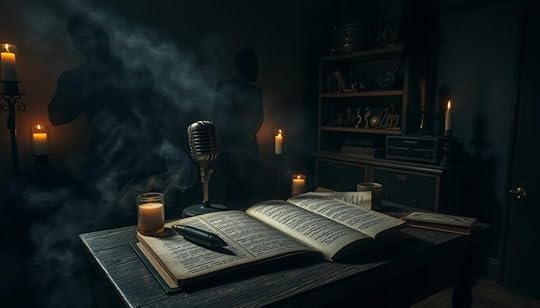
These podcasts not only entertain but also provide listeners with eerie encounters that prompt deeper reflection on the unexplained. Dive into one or many of these chilling shows for your next supernatural discussions! Each podcast immerses you in a culture of storytelling that keeps you captivated.
Myth or Reality: Distinguishing Fact From FictionThe line between myth vs reality often blurs when it comes to paranormal investigations. Urban legends like Huggin’ Molly in Alabama or the tragic tale of Slaughterhouse Canyon in Arizona showcase how folklore can thrive in communities, shaping local culture and beliefs. These stories, while captivating, raise questions about their authenticity and origins. Are they rooted in actual events or merely fact fiction passed down through generations?
Some myths, such as the Gurdon Light in Arkansas or the ghostly Lucinda from Stony Hollow Road in Iowa, offer a fascinating glimpse into how communities connect with their history. People often find comfort in these tales, creating a sense of belonging. College campuses frequently utilize ghost stories to personalize spaces, making them more relatable for students adjusting to new environments.
Fascinating urban legends empower communities.Ghost stories help personalize shared experiences on campuses.Stories of haunted libraries and theaters spark intrigue.As you dive deeper into the world of paranormal investigations, consider the impact of these narratives. While skepticism can enrich your understanding, the allure of eerie encounters often draws you to explore the unknown. Engaging in this myth vs reality debate enhances your appreciation for the complex tales that shape our perceptions of the supernatural.
ConclusionThe exploration of eerie encounters and unexplained mysteries captivates your curiosity, leaving you with an undeniable sense of wonder about the unknown. Throughout this article, we’ve delved into various accounts from notable individuals, each facing supernatural experiences that have shaped their perspectives. From Winston Churchill’s unsettling events to Buzz Aldrin’s UFO sighting, the diversity of these narratives demonstrates how deeply intertwined history and the mystical can be.
As you reflect on the stories shared, consider how they contribute to a broader understanding of human experience. The haunting tales of Oakland, with its vibrant community of storytellers and paranormal researchers, add layers to the historic narrative of the city. The fusion of tangible and ethereal elements invites you to keep an open mind about what lies beyond conventional explanations.
Ultimately, this summary serves as a reminder that our perceptions of eerie encounters can enrich our lives and foster connections within communities. So when you hear the whispers of the past or feel a presence in the air, allow yourself to embrace the intrigue of unexplained mysteries as part of the human experience.
FAQWhat are eerie encounters?Eerie encounters refer to unsettling experiences involving unexplained phenomena, such as ghostly sightings, supernatural sightings, and other strange occurrences that challenge our understanding of reality.
Why are people fascinated by spooky stories?People are drawn to spooky stories due to human curiosity about the unknown and supernatural. These tales evoke fear and suspense, sparking deeper conversations about existence and the mysteries that surround us.
How do cultural factors influence our interest in paranormal phenomena?Cultural factors shape our understanding and appreciation of spooky stories, embedding them into folklore and community bonding. They help transmit values, beliefs, and morals about unexplained events through generations.
What types of supernatural sightings are most common?Some of the most common types of supernatural sightings include ghostly apparitions, cryptids, and other paranormal phenomena. These experiences often ignite our imagination and challenge our perceptions of reality.
Can you share real-life accounts of mysterious occurrences?Real-life accounts include personal narratives from individuals who have experienced unexplained events, ranging from ghost sightings to strange happenings in remote locations. These stories validate the existence of eerie encounters.
What psychological effects can eerie encounters have on individuals?Eerie encounters can lead to a range of emotional responses, including fear, confusion, and even comfort. Understanding these psychological effects helps foster empathy for those who share their unsettling experiences with others.
Why are national forests often associated with eerie encounters?National forests, being remote and steeped in history, frequently become sites for eerie encounters. Their vast landscapes can harbor mysteries, leading to numerous reports of unexplained phenomena and supernatural sightings.
How can I share my own eerie encounter?You can share your experiences on platforms such as the Unexplained Encounters Podcast, where individuals are encouraged to contribute their personal stories. This helps foster an interactive community around the topic of the unexplained.
What is the role of scientific investigations in understanding paranormal phenomena?Scientific investigations aim to provide explanations for many paranormal phenomena, validating or debunking reports while maintaining an open mind. These studies help bridge the gap between anecdotal experiences and possible scientific explanations.
Are there podcasts focused on eerie encounters?Yes, there are several popular podcasts that delve into eerie encounters and supernatural phenomena. They often feature personal stories and explore various aspects of the mysterious, inviting listeners into the fascinating world of the unknown.
How can I distinguish between myths and reality regarding eerie encounters?It’s essential to approach eerie encounters with healthy skepticism, examining sources of misinformation and the cultural context surrounding these tales. This allows for a clearer understanding and differentiation between myth and reality.
August 18, 2018
Have you signed up yet?
My newest novel, Cordelia and the Whale will be publishing October 2018. Sign up for an email alert to be able to pre-order the book NEXT WEEK!!
[image error]
August 15, 2018
EVERYBODY’S A WINNER WINNER CHICKEN DINNER!
Here is the high resolution 4×6 print out of Cornflake. Print it out, cut it out, frame it up, y’all! Be greeted by the World’s Most Joyful Dog EVERYDAY!!!
Click on the image below, then right click to save image to your desktop.
Storytime Live with Cornflake! I mean, Dogs, Dogs!
Storytime Live with Dogs, Dogs! And Cornflake too! (This should be FUN! Oy!) 7:30pm eastern on my YouTube channel! https://www.youtube.com/michellenelsonschmidt
Enter to win a gift tonight!
https://gleam.io/bqYOI/storytime-live-81518-giftaway

